
Chicago Like a Local
by
DK
g Contents SHOP Chicago’s shops put community front and center. Book nooks buzz with book clubs, vinyl stores host local bands, and indie galleries showcase the city’s artists. g Contents SHOP Vintage Gems Record Stores Book Nooks Indie Boutiques Home Touches Affordable Art Take a Tour: A morning of retail therapy in Wicker Park g SHOP g Contents Vintage Gems Wish you kept your grandma’s jewelry? Your mom’s funky jacket? After a visit to these neighborhood stores, bursting with vintage treasures, it’ll be like you did. Grab your tote and get thrifting. g SHOP g Contents Vintage Gems KNEE DEEP VINTAGE ALCALA’S WESTERN WEAR KOKOROKOKO LOST ERAS BONEYARD STORE B VINTAGE LOST GIRLS VINTAGE DOVETAIL g Vintage Gems g Contents Google Map KNEE DEEP VINTAGE Map 1; 1219 West 18th Street, Pilsen; ///still.image.splice; www.kneedeepvintage.com It’s a source of constant debate: which is better for thrifting, Pilsen or Wicker Park?
…
Hit up an exhibition to see works by the next big player on the scene (shows rotate every 4–6 weeks) – and don’t be surprised if you leave with a striking new piece for your walls. » Don’t leave without stopping by Buddy Guy’s Legends, an iconic blues club just next door to the gallery. g SHOP g Contents A morning of retail therapy in Wicker Park If there’s a leading reason why Wicker Park has been ranked one of the hippest neighborhoods in the US, it’s the shopping scene. Chicago’s creatives love it here, spending their weekends stocking up on vintage garms from thrifty boutiques. The area also served as the backdrop for the 2000 film High Fidelity, and the love for alternative music and record stores hasn’t slowed down since.
…
g Swimming Spots g Contents Google Map OAK STREET BEACH Map 1; 1000 North Jean-Baptiste Pointe DuSable Lake Shore Drive, Gold Coast; ///glaze.silk.chains; www.chicagoparkdistrict.com It’s definitely not the quietest swimming spot in the city (local families love this place), but there’s nothing like lounging on a beach towel while gazing at some of the world’s most beautiful high-rises. That’s right – Oak Street Beach is just a tick north of the Magnificent Mile, making it the perfect place to pause after some retail therapy. » Don’t leave without grabbing a cold one at Whispers, a clubby cabana bar within stumbling distance of the waves. g Swimming Spots g Contents Google Map PULASKI PARK PUBLIC POOL Map 2; 1419 West Blackhawk Street, Noble Square; ///chemistry.owner.blast; www.chicagoparkdistrict.com When temperatures peak, neighborhood families flock to this free public pool.
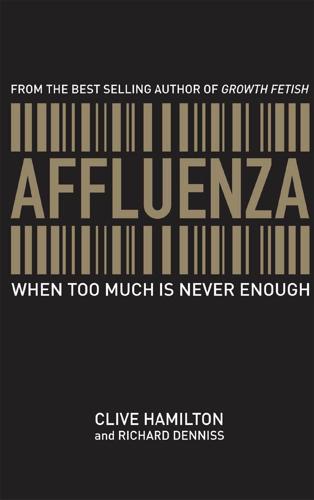
Affluenza: When Too Much Is Never Enough
by
Clive Hamilton
and
Richard Denniss
Published 31 May 2005
Indeed, it has recently been shown that oniomania can be treated effectively with particular antidepressant drugs,22 suggesting that the condition is not in itself a psychological disorder but rather a manifestation of something more pervasive—entrenched depression and anxiety for which shopping is a form of self-medication, a phenomenon widely acknowledged in the expression ‘retail therapy’. Must we wear hairshirts? Some readers might accuse us of being too harsh, too judgmental, perhaps a touch Calvinistic. Why shouldn’t Australians enjoy the fruits of their labour? What’s wrong with a bit of luxury? Isn’t it reasonable to want to build some financial security? The answer to these questions is of course ‘yes’.
…
Some employees have benefited from greater flexibility and the increased availability of part-time work, but millions of others have experienced increased work intensity, longer hours and reduced security as a result of labour market deregulation. Deregulation has increased stress levels—from having too much work, not enough work or not enough job security. Such a climate is conducive to the spread of affluenza: the overworked and overpaid spend to compensate for their lost time; the underworked are tempted to engage in retail therapy to spend their blues away. Deferred happiness syndrome Affluenza is a form of self-deception; it comes about as a result of the stories we tell ourselves. One of the stories Australians tell 89 AFFLUENZA themselves could be called ‘deferred happiness syndrome’.10 A large number of people persist with life situations that are difficult, stressful and exhausting in the belief that the sacrifice will pay off in the longer term.
…
Although much less preoccupied with money, they are nevertheless more careful about how they dispose of what they have. One described himself and his partner as ‘aware buyers’ who are rarely tempted to buy things they don’t need. Others avoid shopping centres whenever possible and are not tempted to spend their leisure time window shopping or engaged in retail therapy. Some adopt a conscious strategy of avoiding exposure to affluenza sufferers; others make it clear that they will control their money rather than having it control them. They become ‘conscious consumers’, rather than impulse buyers, and so put themselves beyond the reach of the marketers. Downshifters with children often talk about how their offspring adjust to lower household incomes.
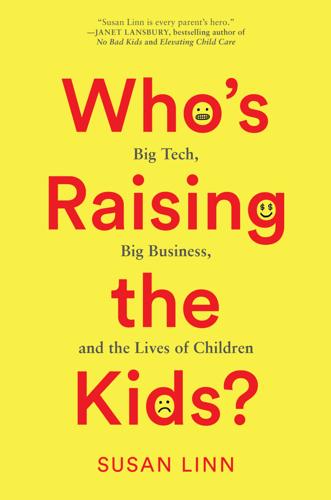
Who’s Raising the Kids?: Big Tech, Big Business, and the Lives of Children
by
Susan Linn
Published 12 Sep 2022
According to the fashion magazine Elle, “7 Rings” is about Ariana Grande’s resilience.36 The lyrics of the song are rooted in a shopping trip she and her friends took to Tiffany’s after a particularly trying time in her life, following a broken engagement and the death by drug overdose of a former boyfriend.37 I originally thought the song was a parody or social critique, but it’s actually a sincere paeon to retail therapy.38 Whoever said money can’t solve your problems Must not have had enough money to solve ‘em They say, “which one?” I say, “Nah, I want ‘em all.” Happiness is the same price as red bottoms* Speaking of retail therapy, the term seems to have first appeared in print in a 1986 Chicago Tribune article.39 It may have initially been meant as a kind of satirical comment on the escalating me- first materialism of the 1980s. As evidenced by Ariana Grande’s use of the term, however, it’s a real thing. It’s interesting that retail therapy first appeared in the Oxford English Dictionary in 2001, the same year that, in the wake of the September 11 terrorist attacks, President George W.
…
Paul, 131 “market segmentation,” 51 Markey, Ed, 38 Massachusetts Institute of Technology (MIT), 44 Masters of Spinjitzu online games, 94 “material culture,” 154, 158 materialism and materialistic values, 8, 79, 82–92, 96–100 advertising and exacerbation of, 83 Ariana Grande’s “7 Rings,” 90–91 buying happiness, 7–8, 79, 88, 98, 16 and Channel One News in schools, 182–83 and children’s relationships, 89 climate change and consumption, 83, 88 and “collectibles,” 83–88 defining, 83 external rewards, 8, 97–102, 104–8, 193, 194 retail therapy, 90–91 Mattel, 57–58, 142 American Girl Dolls, 139 Aristotle smart device, 36–38 Barbie, 85, 142, 155–57, 162 McDonald’s, 177, 199 as “American institution,” 59, 60 brand loyalty, 66–67 fast food SEMS and advertising in schools, 165, 167, 172 Happy Meal toys, 84 “McTeachers’ Nights,” 165 school-based nutrition program, 172 social media followers, 63 McNeal, James, 66 Me Too movement, 152 Mead, Margaret, 230 media literacy, 205, 222 Messenger Kids (MK), 74–75, 219 Meta, xiv, 46, 74–76, 151–52, 176, 240 algorithms and racial biases, 151–52 Russian interference in 2016 election, 176 See also Facebook; Instagram; Instagram for Kids MGA Entertainment, 25n, 85–86 Microsoft, 53–54 millennial parents and families, 120–23 Minecraft, 53–55, 110, 218–19 minimalism, 88 mining (data mining), 47–48, 81 Minnesota State Legislature, 204–5, 236 Mister Rogers’ Neighborhood, 3 MIT Technology Review, 190 Molnar, Alex, 167–68, 197 mommy bloggers, 87–88 Monster High fashion dolls, 59 Montgomery Ward catalog, 158–59 Morrison, Toni, 155 Mosseri, Adam, 75 Motivation external rewards, 8, 97–102, 104–8, 193, 194 intrinsic, 8, 97–103, 107–8 MTV, 114 Museum of Fine Arts (Boston), 120 Museum of Science (Boston), 119–20 My Little Pony (TV series), 19, 28 Myers, KK, 235–37 Nabisco, 105–6 nagging, 78, 109–24, 227 and child-targeted advertising, 78, 109–24 and early adolescence, 110 and “free” apps, 46, 119, 217 harm to families, 78, 82, 109–11, 115, 117–20, 122–24, 231 international market research on strategies to encourage, 116–17 marketers’ work to neutralize parents as gatekeepers, 111–12, 122–23 and millennial parents, 120–23 “The Nag Factor Study” (1998), 113–15 nagware and pop-up ads, 46, 186–87, 189 “persistence nagging” and “importance nagging,” 113 “pester power” (“nag factor”), 112–15, 117 saying “no” to children, 227 and Toys “R” Us free camps, 60 nagware (pop-up ads), 46, 186–87, 189 A Nation at Risk (1983 report), 166 National Association of Manufacturers, 182 National Education Association, 166 National Education Policy Center at the University of Colorado, 192, 195 National Football League (NFL), 4 National Parent Teacher Association (PTA), 179, 238 national parks, advertising in, 7 National Public Radio, 68 nature experiences advertising in national parks, 7 awe and, 23–24 spending tech-free time outdoors, 224 Nestle, Marion, 163 neurotypical children, 9, 12 New York Times, 36, 38, 54, 68, 71, 105, 119, 131, 170, 184 Newton, Isaac, 22 Niantic, 102–3 Nickelodeon, 86–87, 90, 114, 142–43 Nike, xiv, 121, 169 1984 (Orwell), 68 Nineteenth Amendment to the U.S.
…
Ferguson (1882), 158 Pokémon, 30, 84–85, 102–6, 185 branding and, 30 collectibles craze, 30, 84–85, 105–6 theme song chorus (“gotta catch ‘em all”), 30, 85 Pokémon GO, 102–4 Pokémon Oreos, 105–6 Pokémon Sleep, 103–5 Pokémon Smile, 105–6 Political Tribes (Chua), 61–62 pop-up ads (nagware), 46, 186–87, 189 poverty children and, 65 COVID-19 disparities, xv materialistic values and, 97 millennial families and, 121 precautionary principle, 38–39, 209 presidential branding, 67, 69–71 privacy Apple, 68 Children’s Online Privacy Protection Act (COPPA), 135, 201–3 data mining, 47–48, 81 Echo Dot Kids Edition, 135–36 edtech and inBloom administrative platform, 233–34 Google tracking and data collection, 4, 177–78, 183 online behavior tracking, 47–49, 137, 177–78, 183 smart devices and surveillance/data collection, 36, 47, 133–36, 177–78 YouTube, 4, 47–48 Prodigy Education, 185–86 Prodigy English, 186 Prodigy (freemium math app), 181, 184–89, 192–94, 232–33 nagware and pressures to upgrade, 181, 186–87, 189 question of effectiveness at teaching math, 186, 187–89, 232 as social network, 189 professional organizations, corporate funding and, 238 progressive education Dewey’s philosophy of, 168–69 and personalized learning, 191–92 Psychological Science in the Public Interest (journal), 194–95 Psychology Today, 191 Public Broadcasting Service (PBS), 52–53 public education American democratic citizenship, 168–69, 172 Dewey’s philosophy of, 168–69 purpose of, 168–69, 172 See also edtech industry; schools, corporate advertising in public media (commercial-free), 52–53, 216 Publicis Groupe, 117 Punished by Rewards (Kohn), 191 puppet therapy, 3, 27 characters’ behavior as models for children, 20 and parasocial relationships, 143 video chats during COVID-19 pandemic, xiii, 33, 138, 194 push notifications, 46, 200, 204, 220–21 Pussy Cat Dolls, 4 Putnam, Robert, 132 racism, racial biases, and racial stereotypes, xv–xvi, 146–62 Alexa’s search feature, 151 algorithms and, xv, 146–53 children’s stories and racialized dolls and toys, 153–62 and COVID-19 pandemic, xiii–xiv and digital beauty filters, 153 Disney films, 159–60, 161 Google’s search engines, 146–51 name searches and search terms (e.g., “Black girls”), 146–47, 149–51 and postslavery history, 158–59 and social media sites, 151–53 white dolls and, 153–57 Radesky, Jenny, 119, 125 radio advertising (mid-twentieth century), 132 Raffi Foundation for Child Honoring, 258 Ranking Digital Rights, 258 reading books differences between using smartphones and, 126, 127–28, 132–33 e-books and e-readers, 132–33, 134, 221 reading to children, 132–33, 214 Reagan, Ronald, 29, 69, 166 Reclaiming Conversation: The Power of Talk in a Digital Age (Turkle), 133 Reinhard, Keith, 69 religious organizations and spiritual leaders, 71, 238–39 Reset Australia, 75 resistance parenting suggestions, 207–28 age-appropriate and commercial-free apps, 216–17 be wary of convenience, 222–2 family plan/agreement about tech use at home, 222 helping kids resist marketing-induced behaviors and values, 225–27 infants and toddlers, 212–14 middle childhood/elementary grades, 217–19 preschool and kindergarten, 214–17 reading to kids, 214 reducing your own time with tech, 220–21 screen time limits, 43, 53, 209–11, 213, 223 and six principles of child development, 209, 210–11 smartphones, 218, 220–21, 225 social media sites, 219 tech-free, commercial-free family time, 223–24 tech-free solutions to boredom, 224–25 tech-free time outdoors, 224 tech-free zones in the home, 224 things to consider in making decisions for your family about tech and commercial culture, 222–25 toys, 213–14 retail therapy, 90–91 Rethinking Schools, 170 Rewards external (material), 8, 97–102, 104–8, 193, 194 intermittent (persuasive design technique), 46–47, 185 and intrinsic motivation, 8, 97–103, 107–8 Rideout, Vicky, 1 Roblox, 218 Rodgers and Hammerstein, 90 Rogers, Fred, 3, 25 Roof, Dylann, 149 Rowling, J.K., 139n Royal College of Paediatrics and Child Health, 211 Rubenstein, Rheta, 186 Ryan’s World (Ryan’s ToysReview), 72, 204 Salesforce IoT, 45 same-sex marriage legalization, 230 Sanrio, 28 Scholastic, 170 schools, corporate advertising in, 163–80 Channel One News, 182–86 corporate-sponsored “educational” films (1950s), 182 corporate teaching materials (SEMS), 164–66, 169–80, 199 credit card companies and financial literacy materials, 172–75, 180 Disney, 164–65 fast food industry, 165, 167, 172, 180 financially-strapped schools, 166–67, 300–1n20 fossil fuel industry, 170–72, 179–80 Google’s Be Internet Awesome, 176–79 Impossible Foods, 175–76 instilling brand loyalty, 164, 165, 172, 184 local level efforts to change, 231–34 “partnerships,” 164, 167 science materials that deny climate change, 171–72 and true purpose of public education, 168–69, 172 See also edtech industry Schwartz, Shalom, 96 Scooby-Doo, 67 Scotland, 118 Screen Free Week, 234, 254 screen time, children’s, 39–43, 52–53, 118–19, 209–11, 213 babies’ and toddlers’ interaction with screens, 17–19, 39, 41–43, 213 and children of tech executives, 129, 218 and COVID-19 pandemic, 39–40 and language acquisition, 41–42 online videos, 40 recommendations, 43, 53, 209–11, 213, 215, 223 state bills to limit in early childhood settings, 204–5 touch screens, 40, 215 TV watching, 40, 42, 100 Screen Time Action Network at Fairplay, 234, 253 search engine optimization (SEO) companies, 148 search engines Alexa’s search feature, 151 algorithms and, 146–53 Google Search, 145–51 name searches and search terms, 146–47, 149–51 racial and ethnic biases, 146–53 and SEO companies, 148 Searle, Mike, 61 Sears catalog, 158–59 self-regulation, 21, 42, 193 SEMS (“Sponsored Educational Materials”), 164–66, 169–80, 199 financial literacy materials produced by credit card companies, 172–75, 180 and fossil fuel industry, 170–72, 179–80 Google’s Be Internet Awesome, 176–79 Impossible Foods and climate change education, 175–76 science materials that deny climate change, 171–72 See also schools, corporate advertising in Seneca Falls Women’s Rights Convention (1848), 230 The Sense of Wonder (Carson), 23 September 11, 2001 terrorist attacks, 91 Sesame Street, 27, 131 Sesame Workshop, 52–53, 131 “7 Rings” (song), 90 sexualized toys, media, and clothing, 4, 26, 59, 85, 156 Share Save Spend, 258 Shell Oil Company, 165, 171, 182 Shenoy, Neal, 136 Shine, Nora, 232–33, 234 Shrek, 67, 142 Silent Spring (Carson), 23 Siri, 134 ŠKODA Auto, 117 slavery, 158–59, 230 sleep, 103–5, 224 digital devices and, 104, 224 Pokémon Sleep app, 103–5 slogans, advertising, xiv smart devices, 36–38, 45, 47, 133–41 Amazon’s Alexa, 133–34, 137–41, 151 Aristotle, 36–38 attachment and, 36–38, 141–43 digital personal assistants, 133–41, 151 and “dumb” watches, 220 Echo Dot Kids Edition, 134–41, 151 Internet of Things (IoT), 45, 47, 133 privacy and data collection, 36, 47, 133–36, 177–78 See also smartphones smartphones, 35, 45, 66, 100, 105, 126–28, 130–33 differences between reading books and using, 126, 127–28, 132–33 effect on conversations between parents and children, 130–31, 132–33 and internet access, 40–41 marketed to children, 130–31 parents’ and caregivers’ overuse of, 41, 125–27, 221 resistance parenting advice, 218, 220–21, 225 Snapchat, 5, 73, 152–53, 202, 204 social change, steps toward systemic, 198–99, 208, 229–40 at the local level, 231–35 Minnesota’s Digital Wellbeing Bill, 236–37 organizations working to change laws and policies, 231, 234–35 organizing screen-free weeks in communities, 234–35 religious organizations and spiritual leaders, 238–39 schools and school districts, 231–34 young people’s advocacy groups, 237–38 social media sites, 5–6, 40, 72–76, 151–53, 219 and adolescents’ mental health, 73–75, 219 algorithms and racial biases, 151–53 brand tribes and marketing, 63–65 girls and, 73–75 influencers, 5, 72, 86–88, 204 intermittent rewards, 46–47 “likes,” 46, 47, 63, 72, 73, 152, 153 resistance parenting recommendations, 219 self-branding, 5, 72, 76, 219 Somerville, Kyle, 158 The Sound of Music (film), 90 South Africa, 117 Spears, Britney, 3 Spiderman, 13, 67, 121 SpongeBob SquarePants, 138, 142 SpongeBob SquarePants Challenge, 139, 140 Sponsored Educational Materials.

Thrifty Ways for Modern Days
by
Martin Lewis
Published 4 May 2010
Old-Style Challenges Cutting Your Bills Without Cutting Back Do you Spend More Than you Earn . . . ? Budget – Prepare Your Pocket A Four-Step ‘Happiness’ Plan Chapter 1: Cleaning The Old-Style Top Five Cleaners Old-Style Cleaning versus Branded Product Cleaning Clean Your House the Old-Style Way Chapter 2: Shopping – What to Buy and How to Reuse it New-Style Shopping Solutions Retail Therapy at a Price You Can Afford Learning to Shop the Old-Style Way Reuse: Recycling Starts at Home Old-Style Beauty Treatments Chapter 3: Clothes and Shoes Charity Starts at Home… Keep it in the Family Customise, Don’t Chuck! High Street Shops Look After Your Clothes Children’s Clothes Sell, Sell, Sell!
…
* * * Chapter 2 SHOPPING What to Buy and How to Reuse It Shopping has become the number-one pastime in this country. Take any typical Sunday afternoon; for most people it’s a toss-up between IKEA or Tesco. But why do we go shopping so much? Is it because we’re bored? Got money burning a hole in our pockets? Or do we just get a kick from a dose of the old ‘retail therapy’? Instead of amassing a load of stuff you don’t need or want, take a look at what you’re actually buying – once the initial buzz of buying it has faded – and whether you really need it. This chapter’s about learning to shop the Old-Style way, and making everything go that little bit further.
…
Plus home-made beauty treatments, how to save a fortune on your creams, potions and fancy salon prices and how to bring up baby the Old-Style way. NEW-STYLE SHOPPING SOLUTIONS Before trying out the Old-Style tricks, it’s important to tackle your own spending impulses. To help, here’s a brief extract from my book The Money Diet on beating your impulses. RETAIL THERAPY AT A PRICE YOU CAN AFFORD (COURTESY OF THE MONEY DIET) Fight the Impulse! When you shop, it’s not what you need that’s the problem, but the things you don’t need; it’s when the ‘gotta have’ impulse rises from your belly and a lust for spending springs from your loins. The child inside says, ‘I want, I want, I want,’ and once that little voice is heard, it’s virtually impossible to stop.
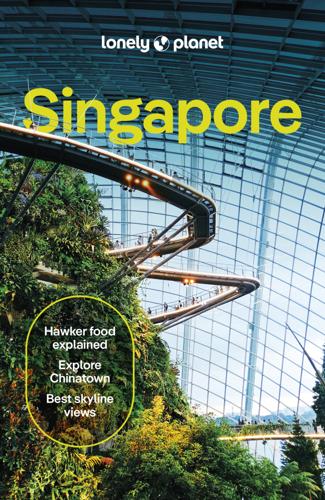
Lonely Planet Singapore
by
Lonely Planet
Published 14 May 2024
West & Southwest Singapore Just a few moments from the city, the repurposed Tanjong Pagar Distripark and Pasir Panjang Power Station are funky spaces for concerts, film screenings and fashion shows. TREASURE HUNT World-class shopping malls, colourful local markets and a wealth of homegrown design talent make Singapore a must-shop for retail-lovers. Bugis Str market | 2P2PLAY/SHUTTERSTOCK © After chowing down on glorious nosh, a spot of retail therapy is Singapore's favourite pastime. Its most famous retail district is dazzling Orchard Rd, a glamorous boulevard adorned with opulent malls showcasing global fashion giants, chic high-street brands and a few discount havens – there's something for everyone. For a more local experience, Chinatown entices with cheap deals on clothes and souvenirs along with a good array of antiques.
…
Love, Bonito Ethical fashion brand founded by Singaporean Rachel Lim; there are several branches around the island. TWG Tea Singaporean luxury teahouse chain with 23 outlets across the city, including one in Marina Bay Sands mall. Malls Galore A shopper’s paradise The Marina Bay area has no shortage of shopping malls providing a bit of retail therapy or some air-conditioned respite from the tropical heat. Suntec City (sunteccity.com.sg), part of the massive Convention Centre and Exhibition Hall, has more than 1000 shops and 300 restaurants. You’ll find retail titans such as Uniqlo, The Body Shop and Nike, and the sprawling Giant Hypermarket.
…
It’s the epitome of modern consumerism, but Orchard Rd also possesses a few sights of cultural interest, including Emerald Hill Rd, which is jammed with stunning heritage shophouses, and the Istana – house of the country’s president – and its informative museum. But it can’t really be denied that it’s all about the retail therapy here: you can shop until you drop, pick yourself up, and go on to shop some more. The gods of retail are here waiting for you to pay your respects. Ngee Ann City Shopping Centre | deeepblue/Getty imagesk © DON’T MISS EMERALD HILL ROAD A quiet enclave filled with stunning Peranakan architecture and happy-hour bar specials.

Bird by Bird: Some Instructions on Writing and Life
by
Anne Lamott
Published 1 Jan 1994
Dying people can teach us this most directly. Often the attributes that define them drop away—the hair, the shape, the skills, the cleverness. And then it turns out that the packaging is not who that person has really been all along. Without the package, another sort of beauty shines through. For instance, on a retail-therapy outing ten days before she died, my friend Pammy discovered that she could no longer write her name on checks, and she turned to me and said, "What is the point of being alive when you can’t even sign checks?" I could only shrug and shake my head. But it turned out that the essence of Pammy wasn’t about the things she could do with her hands.
…
I had a brainstorm: I would mail the third section off, borrow the money to fly to New York, and spend a week there, doing the line editing of the book with my editor and, at the same time, getting away from this man I was breaking up with. Also, I could collect the last third of the advance that Viking owed me and do a little retail therapy in New York City. I wrote to my editor to say I was coming. He did not say not to. I told the man I was involved with to move all of his stuff out of the house. I borrowed a thousand dollars from my aunt, promising her that I would pay it back by the end of the month. And then I flew to New York.
…
And in a split second I was in one of those Proustian olfactory flashbacks, twenty-five or so years before, in the kitchen of one of my aunts, with her many children, my cousins, on a hot summer’s day. I was the eldest, at eight or so, and my aunt and uncle had just gotten divorced. She was sad and worried, and I think to soothe herself and help her wounded ego, she had done a little retail therapy: she’d gone to the store and spent several dollars on a lemonade-making contraption. Of course, it goes without saying that to make lemonade, all you need is a pitcher, a lemon-juice squeezer, ice cubes, water, lemons, and sugar. That’s all. Oh, and a long spoon. But my aunt was a little depressed, and this lemonade-making thing must have seemed like something that would be fun and would maybe hydrate her life a little, filling her desiccated spirit with nice, cool, sweet lemonade.
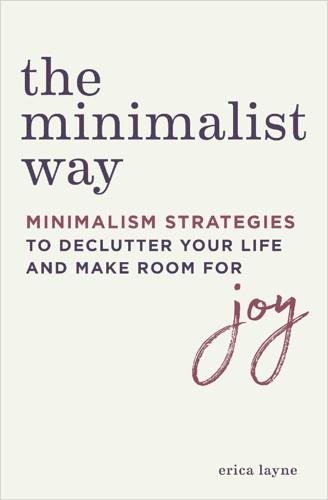
The Minimalist Way
by
Erica Layne
Published 25 Feb 2019
Many of us will do anything to escape actually experiencing our own emotions—especially the difficult ones. For some, it’s eating chocolate; for others, it’s a glass of wine or a few mindless episodes on Netflix. For my mom, it’s cleaning a bathroom. (There are far worse outlets, right?) For plenty of us, it’s spending. This is why shopping is so often jokingly referred to as “retail therapy”; we use it to create short-term pleasure that helps numb underlying emotions. And with the massive migration we’ve experienced in the last decade from traditional retail establishments to online shopping, it’s easier than ever to get the instant satisfaction of buying something new—a practice that’s leaving us with unprocessed emotions, depleted bank accounts, and overfilled homes. 2.
…
The sound of your partner rolling in the trash bins (so you don’t have to) at the end of the day … The power of nature, the connection of human touch, the satisfaction of a meal shared with people you love … These are the ever-present basics that get pushed out of our attention when we’re preoccupied with the things we want to buy. 8. PRACTICE GRATITUDE For those of us who have always turned to shopping—good ol’ retail therapy—as a source of comfort and pleasure, I’d like to propose a deceptively powerful replacement: a regular gratitude practice. The emerging research on the effects gratitude has on the brain—from stress relief and improved sleep, to a decrease in anxiety and depression symptoms—is fascinating. But what I find most compelling in relation to our consumption is the simple truth that both activities—shopping and practicing gratitude—release a burst of dopamine, the neurotransmitter in the brain that’s activated when something good unexpectedly happens.

Lonely Planet Pocket Berlin
by
Lonely Planet
and
Andrea Schulte-Peevers
Published 31 Aug 2012
Book ahead for an early lift ride up to the dome of the Reichstag (Click here), then snap a picture of the Brandenburg Gate (Click here) before exploring the maze of the Holocaust Memorial (Click here) and admiring the contemporary architecture of Potsdamer Platz (Click here). Ponder Nazi horrors at the Topographie des Terrors (Click here) and Cold War madness at Checkpoint Charlie (Click here). Pop into the Friedrichstadtpassagen (Click here) for a dose of retail therapy before a late lunch at Augustiner am Gendarmenmarkt (Click here). Pick up a chocolate treat at Fassbender & Rausch (Click here), then make your way to Museum Island via Gendarmenmarkt (Click here). Spend at least an hour marvelling at the antique treasures at the Pergamonmuseum (Click here), then take a leisurely meander around the Scheunenviertel, perhaps scheduling a coffee break at Barcomi’s Deli (Click here).
…
Back on solid ground, walk a few steps south to snap a classic picture of the Brandenburg Gate (Click here), then get lost in the haunting maze of the Holocaust Memorial (Click here). Ponder the source of such evil on the site of Hitler’s bunker (Click here) before strolling over to the Friedrichstadtpassagen (Click here) for some retail therapy, then lunch at Augustiner am Gendarmenmarkt (Click here). Grab a sweet chocolate treat at Fassbender & Rausch (Click here), take in the architectural harmony of the Gendarmenmarkt (Click here) and follow Friedrichstrasse to Unter den Linden. Head east past Prussian-era beauties for an immersion in German history at the Deutsches Historisches Museum (Click here).
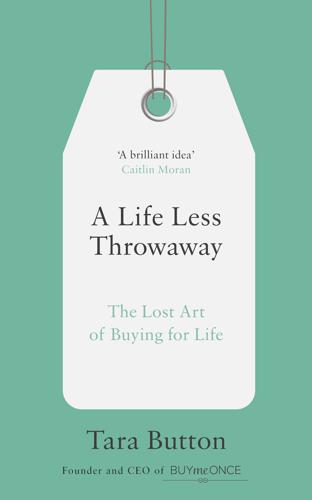
A Life Less Throwaway: The Lost Art of Buying for Life
by
Tara Button
Published 8 Feb 2018
* * * 15 On Money and Happiness or How to be happy in a cash-mad world ‘There are people who have money, and there are people who are rich.’ Coco Chanel I realise that a book about buying behaviour would be glaringly incomplete if it skirted around the subject of money. So, as hard as it is for a British person to talk about it, I’m dedicating this chapter to our relationship with cash. Does money really make us happy? Does retail therapy work? How much can we save through long-term buying? And what should we spend our money on to get the most happiness bang for our buck? DOES MONEY MAKE US HAPPY? For something that was only invented 3,000 years ago, it’s strange that money has become something that feels as timeless and natural as rocks or trees.
…
Don’t sweat it if they are a bit different, but if there are major differences, it can be worth discussing them in a calm, compassionate and understanding way. * * * HOW TO BE HAPPY WITHOUT SHOPPING Ninety-three per cent of teenage girls say shopping is their favourite pastime, and many of us – 40 per cent of women and 19 per cent of men – admit that we use shopping to relieve stress and to make ourselves happier.9 Shopping isn’t called ‘retail therapy’ for nothing. We fall into an attitude of ‘when I have “x”, I’ll be happy’ and this plays into marketers’ hands. They’ll gladly fill that ‘x’ with their products all day long. While purchasing a product does give us a little buzz of happiness chemicals, it’s a short-lived high, and if that buzz is being used to try and self-medicate for some underlying unhappiness, then it’s not the right cure and the underlying unhappiness will continue.
…
Sharpe, 2006). 7.https://www.researchgate.net/publication/236848002_The_relationship_of_materialism_to_debt_and_financial_well-being_The_case_of_Iceland’s_perceived_prosperity. 8.Global umbrella survey results, Sunnycomb Tumblr, 1 July 2014, https://sunnycomb.tumblr.com/post/90373669845/global-umbrella-survey-results. 9.http://www.huffingtonpost.com/2013/05/23/retail-therapy-shopping_n_3324972.html. 10.Viktor E. Frankl, Man’s Search for Meaning (Verlag für Jugend und Volk, 1946; Simon & Schuster, 1963; Rider, 2004). 104 (1963 ed.). 11.Cited by Robert Waldringer, ‘What makes a good life? Lessons from the longest study on happiness’, TED talk, November 2015. 12.Ibid. 13.Arthur Aron, et al., ‘The Experimental Generation of Interpersonal Closeness: A Procedure and Some Preliminary Findings’, Personality and Social Psychology Bulletin, 23: 4 (1997), 363–77, http://journals.sagepub.com/doi/pdf/10.1177/0146167297234003. 14.David Marjoribanks and Anna Darnell Bradley, You’re not alone: the quality of the UK’s social relationships (Relate, 2017), 14. 15.Ethan Kross, et al., ‘Facebook Use Predicts Decline in Subjective Well-Being in Young Adults’, PLOS: One, 14 August 2013. 16.http://www.hbs.edu/faculty/Publication%20Files/10-012.pdf. 17.http://ggsc-web02.ist.berkeley.edu/images/application_uploads/norton-spendingmoney.pdf. 18.James Wallman, Stuffocation: Living more with less (Crux Publishing, 2013). 19.A.
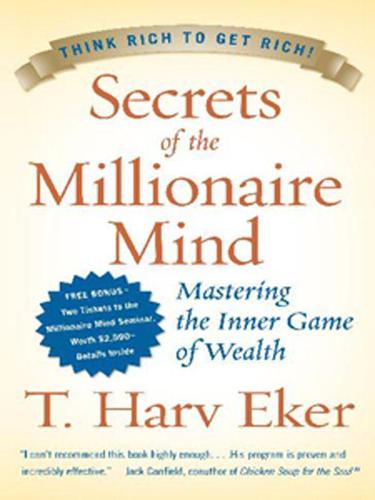
Secrets of the Millionaire Mind
by
T. Harv Eker
Published 15 Feb 2005
I hate to be the one to have to tell you this, but for the most part, buying things for immediate gratification is nothing more than a futile attempt to make up for our dissatisfaction in life. More often than not, “spending” money you don’t have comes from “expending” emotions you do have. This syndrome is commonly known as retail therapy. Overspending and the need for immediate gratification have little to do with the actual item you’re buying, and everything to do with lack of fulfillment in your life. Of course, if overspending isn’t coming from your immediate emotions, it arises from your money blueprint. According to Natalie, another of our students, her parents were the ultimate cheapskates!
…
“both,” of money vs. happiness of self-worth pessimism philanthropy see also duty to others physical world planes of existence, see four quadrants of existence “play” account pleasure poor money mentality positive energy positive thinking power of intention power thinking practice “printout,” problem-orientation problem solvers problem solving through personal growth Process of Manifestation “program,” programming, see conditioning promotion of products, services and ideas resentment of of self Protestant work ethic punishment purpose quality quantity rainy day saving rationalizing, see justification “Ready, fire, aim!,” real estate rebellion receiving difficulty with and giving reconditioning see also conditioning rejection relationships remuneration results-based salary-based time-based resentment residual income responsibility vs. victimhood results causes and retail therapy retirement Return to Love, A (Williamson) Rich Dad, Poor Dad (Kiyosaki) rich money mentality risks Rohn, Jim roots Rosemary, Jim sacrifice saving security “seeds,” self-made millionaires self-worth and difficulty with receiving low and net worth recreating of self as determiner of selling, see promotion service businesses shame short-term thinking simplification social associations solution-orientation specific incidents steps for change in spending spirituality see also God; higher power; inner world; universe spiritual world sports stalling Stanley, Thomas steady paycheck stress subconscious mind survival taking action see also actions; initiative talents “taming the cobra of fear,” tax benefits taxes tax write-offs television thinking big thinking small thoughts empowering vs. disempowering negative vs. empowering see also beliefs; mental processes; mind-sets tools toxic situations Trump, Donald trust uncomfort zone understanding universe up-and-down income pattern value extolling one’s own verbal programming steps for change in victimhood blame and complaining and justification and visible world, see outer world visualizations wanting, three levels of wealth files wealth zone Wilde, Stuart Williamson, Marianne Wilton, Andrew Winfrey, Oprah Wizard Training working income working smart World War II worries ACKNOWLEDGMENTS Writing a book appears to be an individual project, but the reality is that if you want it to be read by thousands or hopefully millions of people, it takes an entire team.
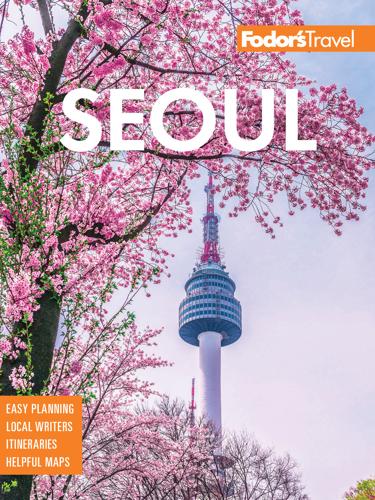
Fodor's Seoul
by
Fodor's Travel Guides
Published 29 Nov 2022
Heavenly Food: Markets, street food, teahouses, and specialty restaurants abound. Pulsing Nightlife: The city seldom sleeps with its noraebang, bars, cafes, and clubs. Parks and Mountains: Hike and climb in lush greenery, all within the city limits. Quality Shopping: The streets are a treasure trove for retail therapy. Contents Cover About This Book Welcome to Seoul Seoul Images 1 EXPERIENCE SEOUL 19 Ultimate Experiences What’s Where Seoul Today What to Eat and Drink in Seoul What to Buy in Seoul Best Historical Sights History You Can See Korean Culture Primer What to Watch, Read, and Listen to 2 TRAVEL SMART Know Before You Go Getting Here and Around Essentials Best Tours Great Itineraries Helpful Phrases in Korean On the Calendar Contacts 3 JONGNO-GU Neighborhood Snapshot Gwanghwamun and Around Insa-dong, Ikseon-dong, and Bukchon Hanok Village Hyehwa-dong 4 JUNG-GU Neighborhood Snapshot Myeongdong City Hall Euljiro Seoul Station Namdaemun and Around 5 DONGDAEMUN Neighborhood Snapshot 6 HONGDAE Neighborhood Snapshot 7 YEOUIDO Neighborhood Snapshot 8 ITAEWON AND YONGSAN-GU Neighborhood Snapshot 9 GANGNAM Neighborhood Snapshot 10 JAMSIL AND EASTERN SEOUL Neighborhood Snapshot 11 SIDE TRIPS FROM SEOUL Welcome to Side Trips From Seoul Planning Paju Panmunjeom and the DMZ Suwon Yongin Nami Island Incheon Ganghwa Island 12 BUSAN Welcome to Busan Planning Centum City Haeundae Gwangalli Nam-gu Seomyeon Nampo-dong and Vicinity Songjeong Elsewhere in Busan 13 SIDE TRIPS FROM BUSAN Welcome to Side Trips From Busan Planning Daegu Gyeongju Tongyeong Geoje Island Yeongnam Alps 14 JEJU-DO Welcome to Jeju-do Planning Jeju-si Hallasan National Park Eastern Jeju Northwestern Jeju Seogwipo-si Southwestern Jeju and the Southern Islands COPYRIGHT ABOUT OUR WRITERS MAPS Gwanghwamun and Around Insa-dong, Ikseon-dong, and Bukchon Hanok Village Hyehwa-dong Jung-gu Dongdaemun Hongdae Yeouido Itaewon and Yongsan-gu Gangnam Jamsil and Eastern Seoul Incheon and Ganghwa Island Centum City, Gwangalli, Nam-gu, Seomyeon, Nampo-dong and Vicinity, Songjeong, and Elsewhere in Busan Haeundae Daegu Gyeongju Tongyeong Jeju Island Seoul Metro 19 ULTIMATE EXPERIENCES Seoul offers terrific experiences that should be on every traveler’s list.
…
The district’s reputation for tourism dates back to the 1800s when Chinese soldiers and merchants set up shop in the area. The foot traffic of the neighborhood made it home to several prominent theaters and churches, although the theater district has since relocated to Hyehwa-dong. With everything from skincare products to high-end brands and ₩5,000 T-shirts sold on the street, it is a great place for retail therapy. s Sights Myeongdong Cathedral CHURCH | FAMILY | One of the best-known religious sights in the country, this cathedral opened its doors in 1898 despite political opposition, on the site where Korea’s first Christians gathered as early as 1784. More recently, it played an important role in safeguarding human rights activists during labor protests of the 1970s and 1980s.
…
Dongdaemun is one of South Korea’s most popular retail destinations, renowned for giant malls, trendy fashion labels, and a virtual frenzy of 24-hour shopping. This 10-block stretch of Seoul is jam-packed with over 30,000 stores featuring everything from luxury goods to the latest K-style trends. Tens of thousands of people flock to the area’s 26 malls on a daily basis for a dose of retail therapy, but there’s more to this dynamic district than just shopping. Dongdaemun is awash with history, culture, and art, and the neighborhood is famed for the cutting-edge architecture of the Dongdaemun Design Plaza, which has modernized the area’s aesthetic. Official maps of the city district labeled Dongdaemun-gu show the neighborhood to the east of what is commonly referred to as Dongdaemun.
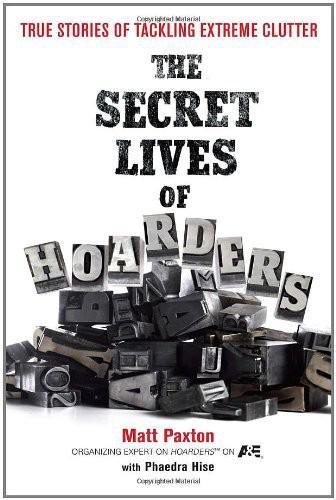
The Secret Lives of Hoarders: True Stories of Tackling Extreme Clutter
by
Matt Paxton
and
Phaedra Hise
Published 3 May 2011
Marcie just couldn’t pass up a good bargain. She got a real “high” from the hunt-and-purchase process and couldn’t stand the thought of a good sale item going to waste. She appreciated the value of that sale item and felt smart for grabbing it. There’s a reason why shopping has become what’s called “retail therapy.” When Marcie bought yet another dress for her three-year-old granddaughter, who already had way too many dresses, Marcie wasn’t thinking about the dress. She was thinking about the granddaughter: how cute she was, how she would love the dress and smile lovingly at her grandmother with those big dimples.
…
See team, recruiting the police pornography portable storage positive reinforcement cleanup and staying clean and post-traumatic stress disorder process of cleanup professional cleaners and junk removers professional organizers psychiatric issues pushing for control by hoarders questions to answer before cleanup quitting, stopping “rattlesnake” hoarders reactions from hoarders anxiety (expressing) control (pushing for) defensiveness denial freaking out grief lashing out pushing for control “rattlesnake” hoarders retreating into denial stonewalling See also cleanup readiness of hoarder for cleanup reality, avoiding recognizing self-worth “recovery,” recruiting the team. See team, recruiting the refrigerators Reinardy, Renae relationships (strained) reminders replacement behavior resources for hoarding responsibility, accepting “retail therapy,” retreating into denial by hoarders rewards of cleanup, sharing the Rick’s case Roger’s (and Kathy’s) case Rose’s case Roxanne’s case rules, ignoring the Salvation Army Sam’s and Wendy’s case San Simeon museum scheduling, cleanup schizophrenia and hoarding scrap metal secret cleanups self-image of hoarders “sell” piles setbacks setting boundaries Sex and the City (TV show) shared space rule sharing burden and rewards, cleanup shopping hoarders “skinny” clothes social phobias and hoarding social workers cleanup and staying clean and team, recruiting the “spaghetti,” spouses of hoarders and cleanup Stage 1 (Clutter Cleaner Scale) cleanup defined Stage 2 (Clutter Cleaner Scale) cleanup defined Stage 3 (Clutter Cleaner Scale) cleanup defined Stage 4 (Clutter Cleaner Scale) cleanup defined Stage 5 (Clutter Cleaner Scale) cleanup defined starting the conversation state of mind of hoarders staying clean backsliding born-again mentality boundaries, setting “chore” charts church as support network denial emotional triggers “everything has a home” rule follow-up rules habits of hoarders “hoarder hangover,” hope for hoarders ignoring the rules notes for positive reinforcement “old habits die hard,” in = out “outside” friends for personal space reminders rules, ignoring the setting boundaries shared space rule social workers success rates task reminders ten-minute sweep triggers uniqueness of every hoarding situation and See also cases of hoarding; hoarders; success, elements of stereotypical hoarders stonewalling by hoarders stuff vs. individual’s physical and mental health success, elements of accepting responsibility desire to change, importance of family and friends support finances, management of medications for hoarders network “no quitting” rule positive reinforcement for hoarders professional organizers quitting, stopping recognizing self-worth replacement behavior responsibility, accepting therapy trying, starting volunteer work See also staying clean success rates supplies for cleanup support groups talking to hoarders task reminders team, recruiting the advocate for the hoarder animal control appraisers auctioneers building inspectors Child and Adult Protective Services city, county, state officials clergy colors (team) community support services coworkers effective teams family members friends introducing to hoarder neighbors pest control police professional cleaners and junk removers social workers therapists “trust swapping,” uniqueness of every hoarding situation and See also cases of hoarding; cleanup; hoarders television shopping tactics ten-minute sweep Thalia’s case therapists staying clean and team, recruiting the timelines for cleanup Timothy’s case toxic waste trash hoarders “trash” piles treatment centers triggers trust, importance of “trust swapping,” trying, starting ultimatum approach unhappiness of hoarders uniqueness of every hoarding situation volunteer work, staying clean “we” goals wellness goals of cleanup Wendy’s and Sam’s case what hoarders hoard animal hoarders clothes hoarders collectors compliments (perceived) of DIYs do-it-yourself (DIY) hoarders food hoarders future plans of DIYs information hoarders memory keepers shopping hoarders trash hoarders See also hoarders “what if” scenarios and ADHD where hoarders hoard where to begin ambush approach collaboration: case with a somewhat happy ending interventions secret cleanups ultimatum approach See also hoarders; planning the cleanup who are the hoarders?
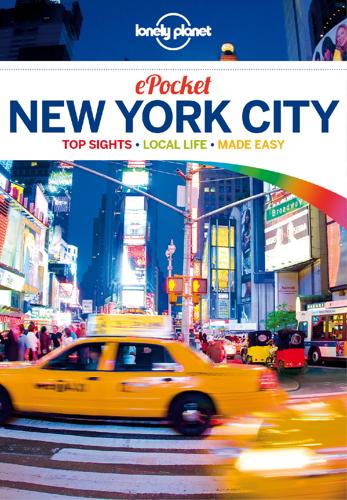
Pocket New York City Travel Guide
by
Lonely Planet
Published 27 Sep 2012
Head up to the East Village for lunch at one of the area’s many street-side cafes, then explore the city’s punk rock roots along St Marks Place (Click here), before swinging through Union Square (Click here) to catch the flurry of pedestrians and the popular Union Square Greenmarket (Click here). Snap your camera at the photogenic Flatiron Building (Click here) further along, then pause for an early-evening cocktail with the after-work crowd at Raines Law Room (Click here). Bust out the plastic for an extended retail therapy session in SoHo, where you’ll find a healthy mix of international brand names – like Prada (Click here) – and unique boutiques, such as Kiosk (Click here). Then go easy on the wallet in Chinatown, home to dozens of noodle and dumplings houses, such as Joe’s Shanghai (Click here). Day Four Pay your respects to those who perished in the 9/11 tragedy at the World Trade Center site (Click here), while glimpsing the city’s most anticipated homage to resurrection and progress: the ‘Freedom Tower’.
…
Head back to Manhattan for lunch at Anthony Bourdain’s Les Halles (Click here). After you’ve packed an artery, head over to the Brooklyn Bridge (Click here) for a wander along the cantilevered Gothic wonder. As evening nears, pay your respects to the fallen at the World Trade Center site (Click here), then lighten the mood with some retail therapy during a round of whirlwind shopping at Century 21 (Click here). Do dinner and a show in Tribeca, stopping first at brasserie-style Locanda Verde (Click here), then hitting up the Flea Theater (Click here), one of the best respected off-off-Broadway institutions in town. End the night at Brandy Library (Click here), where you can choose from a veritable encyclopedia of spirits.
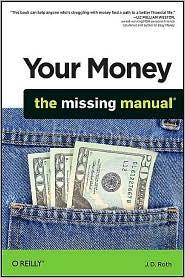
Your Money: The Missing Manual
by
J.D. Roth
Published 18 Mar 2010
This isn't a psychological game or New Age mumbo-jumbo, it's fact: The lower your expectations, the easier they are to fulfill—and the happier you'll be. That's not to say you should lead an aimless life of poverty; quite the opposite, in fact. But most people confuse the means with the ends. They chase after money and Stuff in an attempt to feel fulfilled, but their choices are impulsive and random. Their "retail therapy" doesn't address the root cause of their unhappiness: They lack goals and an underlying value system to help guide their decisions. In the next chapter, you'll learn how to create meaningful financial goals that are aligned with your passions. Then you'll be able to use these goals to make better decisions about money.
…
This will help you avoid making rash decisions. Don't let it get you down. When things go wrong, it can be tempting to ease the pain by spending more money. But compulsive spending (Curbing Compulsive Spending) just makes it harder to reach your goals, which will make you feel worse, not better. So fight the urge to practice "retail therapy." Don't let one problem snowball into two or three. Learn from your mistakes. Figure out where you went wrong. How did that traveling salesman sell you those overpriced steak knives? What can you do in the future to avoid doing the same thing again? This is a fine line to walk: You don't want to beat yourself up, but you don't want to keep making the same mistakes, either.
…
, Why You Should Start Saving Today, The Power of Compounding comprehensive insurance, Car Insurance compulsive spending, Coping with Mistakes and Setbacks, Curbing Compulsive Spending, Where to Find Help, Debtors Anonymous, Financial Peace University, The Tyranny of Stuff conscious spending, Practice conscious spending consignment shops, Holding a yard sale Consumer Action Handbook, Consumer credit counseling consumer credit counseling, Consumer credit counseling Consumer Expenditure Survey, House and Home Consumer Reports, Doctors and Drugs, Online banks, Go for a test drive, Take delivery, Buying Used consumerism changing shopping behavior, Save While Shopping, The Tyranny of Stuff, The Tyranny of Stuff compulsive spending, Curbing Compulsive Spending, Start Now, Start Now happiness and, How Money Affects Happiness, The Fulfillment Curve, The Fulfillment Curve retail therapy, Coping with Mistakes and Setbacks contracts, Choosing a Card control budgets and, Mapping Your Financial Future car negotiations and, Make a deal intentional activity and happiness, It's Not About the Money lack of, It's Not About the Money corporate bonds, Stocks and Bonds CostToDrive.com, Saving on gas Couch Potato Portfolio, The Couch Potato Portfolio by Scott Burns CouchSurfing website, Hospitality exchanges counseling, Consumer credit counseling counter offers, Starting on the Right Foot: Salary Negotiations, Moving On couples, Love and Money, The Importance of Teamwork, Joint or Separate Finances?
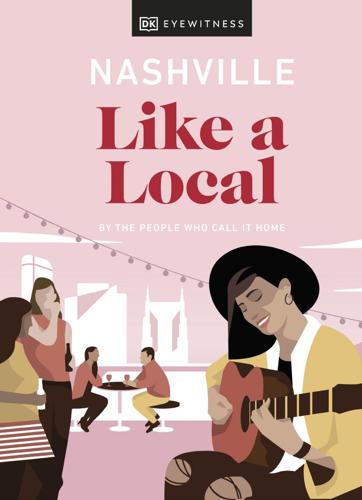
Nashville Like a Local: By the People Who Call It Home
by
Dk Eyewitness
Published 28 Sep 2021
guitars, like Ed King’s Strat that he played on “Sweet Home Alabama.” 109 108-111_LAL_Nashville.indd 108 06/08/2021 12:23 108-111_LAL_Nashville.indd 109 11/08/2021 12:47 S H O P GRIMEY’S Map 3; 1060 East Trinity Lane, East Nashville; ///ballots.food.hammer; www.grimeys.com You’ll feel like a kid in a candy shop at Nashville’s go-to record shop. Grimey’s has everything a music lover could possibly ask for – from punk to prog, soul to soft jazz, new and used records, big names and emerging local artists. The fun doesn’t stop at retail therapy, either; check the website for upcoming record release shows where you can catch an artist playing their album live at the store. » Don’t leave without checking out the store’s collection of books, magazines, and movies, which all rotate around a music theme. VINYL TAP Map 3; 2038 Greenwood Avenue, East Nashville; ///cliff.splice.head; www.vinyltapnashville.com This is the kind of place that makes you ask, “Why did no one think of this sooner?”
…
Sure, there’s 110 108-111_LAL_Nashville.indd 110 06/08/2021 12:23 S H O P M U S I C S T O R E S GRIMEY’S Fanny’s music lessons all the standard guitars, amps, Map 3; 1060 East Trinity Lane, East Nashville; cost just $30–55, so microphones, and accessories here you can buy and learn ///ballots.food.hammer; www.grimeys.com but there’s also folk instruments like to play your new You’ll feel like a kid in a candy shop at Nashville’s go-to record shop. strings in one swoop. mandolins, banjos, and dobros. Grimey’s has everything a music lover could possibly ask for – from punk to prog, soul to soft jazz, new and used records, big names and emerging local artists. The fun doesn’t stop at retail therapy, FORK’S DRUM CLOSET either; check the website for upcoming record release shows where Map 4; 308 Chestnut Street, Chestnut Hill; ///books.tilt.woke; you can catch an artist playing their album live at the store. www.forksdrumcloset.com » Don’t leave without checking out the store’s collection of books, A candy store for drummers, Fork’s is all about percussion.
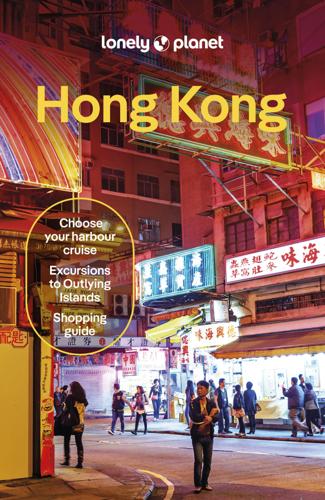
Lonely Planet Hong Kong
by
Lonely Planet
DAY 2 Kowloon Cruise across Victoria Harbour to Kowloon on the Star Ferry. Take it slow along Tsim Sha Tsui East Promenade with its fabulous skyline outlook. Pop in to the Hong Kong Museum of Art – or the Hong Kong Space Museum if you’re with kids – as you wind your way to the revamped Avenue of Stars. For a bit of retail therapy (and air-con), check out Hong Kong’s latest luxury mall, K11 Musea. Lunch Duck into the subterranean Star Cafe for the classic cha chaan tang (Hong Kong tea house) experience – noodles in tomato soup, syrupy French toast and milk tea. Kowloon Catch the bus or MTR to the West Kowloon Cultural District for M+, Hong Kong’s stunning art-and-design showpiece.
…
Despite being on solid land now, the temple retains many of its unique charms, designed like a ship to honour its seafaring past. From here, visitors can enjoy excellent views of Causeway Bay Typhoon Shelter and Victoria Harbour. As for the old temple boat, it’s been donated to the government and is being preserved as a cultural heritage. BEST MALLS Times Square Find retail therapy heaven at this 16-storey luxury mall with over 200 stores, a cinema, food court and restaurants. Hysan Place Spend hours at this sleek shopping mall with Michelin-starred restaurants and an enormous bookstore. Pacific Place Splurge at Hong Kong’s premier mall, featuring the largest collection of international luxury brands and with convenient access to the city’s top hotels.
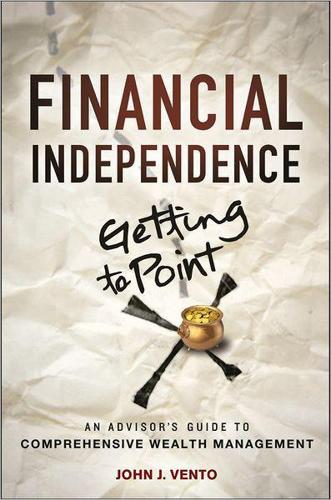
Financial Independence
by
John J. Vento
Published 31 Mar 2013
Many people believe it is imperative to “keep up with the Joneses,” to quote that oldfashioned expression, which implies a perceived necessity to appear as affluent as our friends, neighbors, and professional colleagues. Other expressions such as shop till you drop and retail therapy are now commonplace in our world, and are considered acceptable, amusing, and even cool! Shopping till you drop is thought by many people to be as beneficial to one’s health as an afternoon of bicycling in a park; retail therapy is firmly believed to be a form of entertainment, and even an antidote to anxiety and stress. We are supposed to feel good about racking up thousands of dollars on our credit cards—and many people actually do get immense pleasure from excessive shopping.
…
See also Bad debt; Credit card debt; Good debt; Good debt vs. bad debt Debt forgiveness, 95, 97 Debt management action plan for, 98 bankruptcy case study, 67–71 basic principles, 71–73 case study, 67–71 credit, 87–89 credit card debt control, 79–80 credit problems, 87–88 credit report and credit score, 89–93 debt analysis, 94–97 financial responsibilities, 71–72 good debt vs. bad debt, 73–74 house ownership, 83–84 identity theft, 93–94 learn to say no, 72–73 living within one’s means, 72 mortgage debt, 84–85 mortgage refinancing, 85–86 pay yourself first (practice), 72 professional conduct, 85–86 retail therapy, 5 tax facts and strategies for, 96–97 wants vs. needs, 72 Debt management, by loans auto loans, 80–81 borrow against 401K, 78 borrow against life insurance, 78 borrow from family and friends, 78 business and investment loans, 86–87 home equity loan, 77–78 home mortgage loans, 82–83 student loans, 81–82 Debt payments completion, 59 monthly, 83 Decreasing term insurance, 125 Deductible levels, 138 Deductible period, 117 Deferred annuity, 210 Dining out, 55 Disability, 118, 120 26/02/13 2:49 PM Index 345 Disability insurance health insurance, 118–122 long term, 121–122 Social Security disability benefits, 119–121 Disability insurance policy, 131–132 Diversification, 191, 202 Dividends on life insurance policies, 130 Down payments, 84 Drug industry fee, 109 property ownership and transferal, 262–265 tax facts and strategies for, 281–283 tax planning and life insurance, 278–281 trust creation, 265–277 trusts, 260–261 wills, 258–260 Expected entitlements, 2 Expected family contribution, 175 Experian, 89–91 Earned income credit, 64 Education of children, 60.
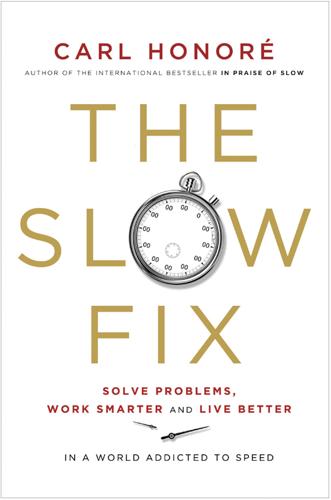
The Slow Fix: Solve Problems, Work Smarter, and Live Better in a World Addicted to Speed
by
Carl Honore
Published 29 Jan 2013
I am certainly not the only impatient patient in Dr Woo’s waiting room. “The easiest way to make money today is not to heal people,” he says. “It is to sell them the promise of instant healing.” Indeed, spending money has become a quick fix in itself, with hitting the mall touted as the fastest way to lift sagging spirits. We joke about “retail therapy” as we show off that new pair of Louboutins or the latest iPad case. The diet industry has turned the quick fix into an art form. “A bikini body by next week!” the ads scream. “Lose 10 pounds … in ONLY 3 days!” You can even buy a quick fix for your social life. If you need a workout partner at the gym, a best man for your wedding or a kindly uncle to cheer your children at sports day, or if you just want a shoulder to cry on, you can now hire any of the above from rent-a-friend agencies.
…
Academic studies show that most people who lose weight on diets regain it all, and often more, within five years. Even liposuction, the nuclear option in the slimming arms race, can backfire. Fat sucked from a woman’s thighs and abdomen usually resurfaces within a year elsewhere on her body, as bingo wings, say, or shoulder flab. Sometimes, the quick fix can be worse than no fix at all. Look at “retail therapy.” Buying the latest Louis Vuitton bag may lift your mood, but the effect is usually transient. Before long you’re back online or in the mall hunting for the next thrill – while unopened bills pile up like snowdrifts by the front door. Look at the damage wrought by our penchant for pills. Surveys suggest that nearly two million Americans now abuse prescription drugs, with more than a million hospitalised every year by the side effects of medication.

SEDATED: How Modern Capitalism Created Our Mental Health Crisis
by
James. Davies
Published 15 Nov 2021
Soon they found that materialists were far more likely than non-materialists to agree with statements such as ‘I’d be happier if I could afford to buy more things’ or ‘the things I own say a lot about how I am doing in life’.12 The belief that having more could increase happiness and well-being meant that materialists regularly used consumption to deal with difficult times, experiences and emotions. Despite these attempts at emotional regulation, however, Kasser’s research showed that such ‘retail therapy’ would often backfire. For instance, a materialist might fixate on buying a particular item, say an expensive coat. But once the coat was bought and worn, the initial buzz would soon wear off, leading to further cycles of raised dissatisfaction followed by yet more consumption.13 Once Kasser’s team had established that highly materialistic people use consumption to manage various kinds of emotional insecurity, they turned their attention to exploring the kinds of relationships materialists develop with others.
…
INDEX A4e, 134, 144 advertising, 318 Advisory, Conciliation and Arbitration Service (ACAS), 98–101 age discrimination, 146 agricultural multinationals, 231–2 alcohol, 235, 250 alexithymia, 253 Amazon, 9 American Journal of Psychiatry, 53, 55 Amess, David, 213–15 Anatomy of an Epidemic (Whitaker), 58–60, 61, 62, 65 Anderson, Malcolm, 85–6, 101 Andreasen, Nancy, 62 antibiotics, 194 antidepressants, 11, 13, 36, 43, 52–4, 55, 61–5, 68–71, 280, 284–5 children and, 159 clinical trials, 206 farmer suicides and, 231–2, 234 materialism and, 253–5 questionnaires and, 287–91 thalidomide crisis (1956–61), 191–3, 197 therapy and, 117 withdrawal, 69–71 antihypertensives, 194 antipsychotics, 11, 13, 44–5, 46–7, 51–2, 54–5, 60–61, 233 brain shrinkage and, 62–3 marketing of, 208 anxiety, 3 disability and, 47, 48 drugs and, 45, 48 education and, 159 GAD-7 questionnaire, 287–91 IAPT and, 116 materialism and, 249, 250, 252 mindfulness and, 93 status and, 315–18 unemployment and, 139 work and, 107, 108 anxiolytics, 13 Argos, 136 Aristotle, 267 Arsenal FC, 142 Asda, 136 Asperger’s, 159 asthma, 142 AstraZeneca, 208 Asylum Magazine, 230 Atkinson, Paul, 126, 228–30, 231 attention deficit hyperactivity disorder (ADHD), 159 Auburn University, 16 austerity, 135, 137, 179, 180, 222, 326, 339, 342 Australia, 13, 47, 49, 192 autism, 323 automation, 39 autonomic drugs, 194 back-to-work policies, 2, 95, 106, 124–9, 274 Barron, Kevin, 214 Baudrillard, Jean, 307 Beck, Martha, 316 behaviourism, 267 being mode of living, 239–40 Belgium, 308 Benefits Street (2014 documentary), 154 Berger, Peter, 185 Biden, Joseph, 345 Binnie, James, 121 biomedical approach, 14–15, 104, 171, 172, 322–31 bipolar disorder, 48, 52, 53 Black Lives Matter, 341 Blair, Anthony ‘Tony’, 105, 159, 201, 334 Bolsonaro, Jair, 341 Bowles, Samuel, 317–18 Boycott Workfare, 139 brain shrinkage, 62 Brazil, 341 British Journal of General Practice, 52, 69 British Medical Journal, 62, 212, 312 British Psychological Society, 118 Brown, James Gordon, 215 Burns, Mary, 30 Butt, Ronald, 22 Cameron, David, 123, 147, 148, 216, 334 Canada, 13, 47, 95–8, 180–81 cancer, 1, 275–6 capitalism, 4–5, 12, 22–36, 73, 227, 234–57, 291–303, 304–35 consumerism, 3, 35, 39–40, 43, 75, 220, 224–5, 234–57, 304–7, 318 COVID-19 pandemic (2020–21), 339–47 financial crisis (2007–8), 43, 135, 217, 219, 222, 326 functional dissatisfaction, 234–5 inequality, 307–20 Keynesian period (c. 1950–73), 26–7, 75, 259, 270, 279, 291–5 individualism, 291–303 materialism, 186, 220, 234–57, 265, 333 productivity and, 27, 34, 80, 83, 122, 258–79, 333, 334, 338 status and, 241–3, 245, 247, 248, 251, 304–7, 315, 318 Thatcher/Reagan revolution (1980s), 22–9, 39, 75, 259, 266, 295–6 cardiovascular drugs, 194 cars, 142, 218, 238, 241 chemical imbalance theory, 15, 254, 285 Chomsky, Noam, 41–2 Christianity, 32 Cipriani, Andrea, 64–5 civil rights movement (1954–68), 270, 278 Clark, David, 106–9, 128 clinical trials, 11, 60, 64, 193, 205–10 cognitive behavioural therapy (CBT), see under therapy Cohen, Patricia and Jacob, 249 Colombia, 55 Columbia University, 236 commodification, 224 communism, 293, 294, 328–9, 330–32 compliance doubt, 152 conduct disorder, 159 consumerism, 3, 35, 39–40, 43, 75, 224–5 materialism, 186, 220, 234–57, 265, 304–7, 333 status and, 241–3, 245, 247, 248, 251, 304–7, 315, 318 Cooke, Anne, 179–80 Corbyn, Jeremy, 328 cosmetics industry, 3 counselling, 269 COVID-19 pandemic (2019–21), 18, 26, 37–8, 129, 140, 169, 305, 339–47 credit, 38–43 cultures of worklessness, 154–5 debt, 38–43, 72–3 dementia, 14 Denmark, 50, 60 Department of Health, 86, 166, 194, 198 Department of Work and Pensions (DWP), 132, 143, 144, 147, 148–9, 150, 154–5 depoliticisation, 3, 12, 18, 34, 73, 186, 230, 277–9, 333, 338 of childhood distress, 179, 180 of work distress, 91, 101, 103, 108, 231–2, 234, 271–4 of unemployment, 153–4 depression chronic status, 48, 69 drugs and, 47, 48, 52, 53, 54, 64–5 economic burden, 107 education and, 159 inequality and, 318 ketamine treatment, 211 materialism and, 249, 250, 252, 253–5 PHQ-9 questionnaire, 287–91 stigma, 16 therapy and, 115, 118 unemployment and, 139 work and, 89 deregulation, 41, 123, 186, 189–220 Dewey, John, 269 Diagnostic and Statistical Manual of Mental Disorders, 5–12, 14, 271–2, 274, 297 diagnostic labels, 7, 16–17, 126, 158–60, 167, 285, 286, 323, 333 diagnostic overshadowing, 13 diet industry, 3 disability, 4, 47, 49–50, 59–60 drugs and, 63, 69 employment and, 132, 136, 137 Disabled People Against Cuts, 139 discrimination, 146–7 diuretics, 194 domestic abuse, 281 Douglass, Frederick, 269 drugs, 4, 10–12, 13–14, 36, 43–71, 105, 189–220, 233, 280, 284–5, 322 brain, effect on, 62 children and, 159 COVID and, 343 DSM and, 10–12 early intervention and, 172 efficacy of, 13–14, 43–71 marketing, 10–12, 190, 204, 205, 208, 231–2, 234, 254–5, 272–3 materialism and, 253–5 post-marketing surveillance, 211 productivity and, 272–4 questionnaires and, 287–91 regulation, 193–220 research, 11, 60, 64, 193, 205–10, 325 withdrawal from, 69–71 Duncan Smith, Iain, 154 Durham University, 141 early intervention, 171–6 economics, 2–5, 23 education, 157, 158–86, 327, 333 early intervention, 171–6 exams, 179, 182, 183, 184 special needs, 158–61, 170 mental health interventions, 169–79 resilience, 176–9, 185 target culture, 162–7, 179, 180–83 Effexor, 289 Eli Lilly, 70, 273 energy sector, 218 Engels, Friedrich, 29–31 Eton College, Berkshire, 161 European Union (EU), 212, 216 fever therapies, 46 financial crisis (2007–8), 43, 135, 217, 219, 222, 326 Finland, 47 Floyd, George, 341 food banks, 139, 151 food industry, 218 Fortune 500 companies, 78 Foucault, Michel, 334 Fraser, Giles, 226–8, 234, 255–6 Frayne, David, 79–80, 151 Free to Choose (Friedman), 196 Friedli, Lynne, 141–3, 147, 150, 152 Friedman, Milton, 195–8, 200, 219, 266, 293–5 Fromm, Erich, 236–40, 243, 250, 251, 261, 274 Frontiers in Psychology, 54 Full Monty, The (1997 film), 135 functional dissatisfaction, 234–5 GAD-7 questionnaire, 287–91, 297, 303 Geneva, Switzerland, 320, 329–31 Germany, 191–2, 245 GlaxoSmithKline, 210 Global Institute for Advanced Study, 79 Goldman Sachs, 149 Gothenburg, Sweden, 168, 183 Graham, Jack, 304–7 Gregory, Elizabeth ‘Liz’, 180–83 guard labour, 318 Guardian, 312, 326–7 Haloperidol, 208 Halton, Cheshire, 137 Hardy, Thomas, 278 Harrow, Martin, 44, 45, 46–7, 51 Harry, Duke of Sussex, 161 Harvard University, 43, 46, 56 Hattersley, Roy, 312 ‘having mode of living’, 237, 239 Hayek, Fredrick, 33, 266, 294, 295 HeadStart, 170 Health and Social Care Information Centre, 115 Healthy Minds, 173 Hearing Voices, 67 Heddell, Gerald, 209 Heinemeyer, Catherine, 176–8 herd immunity, 341 Hinchliffe, David, 200–206, 212–16, 218, 219 Høies, Bent, 67 Holy Family, The (Marx and Engels), 30 homelessness, 139 House of Commons Health Select Committee, 200–206, 212–16, 218, 219 House of Lords, 21–4 household debt, 38–43, 72–3 Hudson, Ian, 209 Hugo, Victor, 277 human-rights-based approach, 320–32 humanism, 266–70, 274, 276 von Humboldt, Wilhelm, 267, 269 Hutton, William, 312 Iceland, 13, 47, 50, 60 Imperial College London, 301 Improving Access to Psychological Therapies (IAPT), 109–29, 150, 164, 178, 274 India, 55, 231–2, 247 individualism, 186, 279, 280–303 inequality, 307–20, 340 inflation, 39 Ingeus, 149, 152 Inner Level, The (Pickett and Wilkinson), 312–20 Insel, Thomas, 61 insulin-coma therapy, 46 International Monetary Fund (IMF), 312 Iraq War (2003–11), 203, 212 Janssen, 211 Jayadev, Arjun, 318 Johnson, Alexander Boris, 123, 212, 215, 216, 341 Joseph Rowntree Foundation, 154 Journal of Nervous and Mental Disease, 44 Journal of the American Medical Association, 60, 62 Kahlil, Zabar, 130–34, 144, 155–6 Kasser, Tim, 235, 240, 243–54, 265, 274–9, 319 Kefauver, Carey Estes, 189–91, 193, 194, 197, 198, 204, 205, 216, 219 Kennedy, Jayne, 214 Kennedy, John Fitzgerald, 193 ketamine, 211 Keynes, John Maynard, 259–62, 266, 267, 268, 270, 274, 275, 276, 279 Khanna, Shivani, 247 Koksal, Izzy, 143–7, 152 Krause, Robert, 273 Kroenke, Kurt, 289 labels, 7, 16–17, 126, 158–60, 167, 285, 286, 323, 333 Lagarde, Christine, 312 Lancet, The, 64, 192–3, 312 Lawson, Nigel, 22–6 Layard, Peter Richard, Baron, 106–9, 128 Lenz, Widukind, 192 leukaemia, 1, 276 Lewisham, London, 137 life expectancy, 12–13 lobotomies, 46, 57 Locke, John, 267 London Review of Books, 312 London School of Economics (LSE), 106, 343 London Underground, 81–2, 83 Mad in America (Whitaker), 46 major mental disorders, 56 Major, John, 201 Manchester, England, 30 manufacturing sector, 75 marketisation, 2–5, 217, 224–5 Marmot, Michael, 320 Marx, Karl, 29–33, 260, 269 materialism, 186, 220, 237–57, 265, 333 Matrix, The, 145 May, Theresa, 123, 215 McCarthy, Eugene, 236 medicalisation, 4, 6, 10, 12, 14–18, 35, 68, 186, 229, 231–5, 297, 302 of childhood distress, 171, 172, 174, 175, 179, 180 of COVID distress, 343–4 therapy and, 108, 230 of work distress, 84–104, 231–2, 233, 271–4 Medicines Act (1968), 194 Medicines and Healthcare Regulatory Agency (MHRA), 205–16 mental health disability, see under disability Mental Health First Aid (MHFA), 86–95, 98, 101, 104, 124, 129, 170 Mentally Healthy Schools, 170 Milburn, Alan, 201 Miliband, Edward, 312 Mill, John Stuart, 267 Mills, China, 230–33, 234 mindfulness, 93 Misérables, Les (Hugo), 277 Moore, Charles, 258–66 National Health Service (NHS), 1, 12, 14, 43 COVID-19 pandemic (2020–21), 344 drug prescription, 71 internal market, 123, 127, 201–2 questionnaires, 287–91, 297, 303 therapy services, 71, 106, 108, 109–29, 150, 164, 274, 285 National Institute for Clinical Excellence (NICE), 106 National Institute of Mental Health, 61 Nature, 312 neo-liberalism, see under capitalism neurodegenerative diseases, 14 new managerialism, 163, 164, 166 New Statesman, 312 New York University, 79, 223, 249 Nigeria, 55 Norway, 65–8, 308, 318 Nudge (Thaler and Sunstein), 147 nudging, 147–52, 334 O’Toole, Bartholomew, 132 Obama, Barack, 312 Obama, Michelle, 345 Occupy movement (2011–12), 221–35 off-rolling, 161 Office of National Statistics, 343 Ofsted, 159–61, 162, 166–7 oil crisis (1973–4), 25 Olympic Games, 328 Open Democracy, 143 Open Dialogue, 67 Osborne, George, 129 outsourcing, 39, 152, 309 Owen, David, 297–300 Pankhurst, Emily, 269 Paris, France, 29 personal debt, 38–43, 72–3 personality tests, 77–81, 83, 84 Petrarch, Francesco, 267 Pfizer Pharmaceuticals, 289–90 pharmaceutical industry, 10–12, 46, 189–220, 325, 334 marketing, 10–12, 190, 204, 205, 208, 231–2, 234, 254–5, 272–3 post-marketing surveillance, 211 questionnaires and, 287–91 regulation, 193–220 research, 11, 60, 64, 193, 205–10, 272–3, 325 thalidomide crisis (1956–61), 191–3, 197 phony empowerment, 151–2 PHQ-9 questionnaire, 287–91, 297, 303 Pickett, Kate, 310–20 Pico della Mirandola, Giovanni, 267 placebos, 54, 64, 65, 69, 116, 117, 206, 207, 211 Plant, Raymond, 123 positive psychology, 148–52 privatisation, 28, 123, 127, 215 productivity, 27, 34, 80, 83, 122, 258–79, 333 DSM and, 271–2, 274 education and, 163, 164 workplace programmes and, 84, 87, 92, 93, 98, 102, 107, 124, 125 Promote Positive Mental Health at Work, 98 Prozac, 70 psycho-compulsion, 141–53 psychoanalysis, 267 Psychotherapy and Psychosomatics, 61 psychotherapy, see under therapy Public Health England, 93, 344 public sector inefficiency, 122, 127, 163 Pulitzer Prize, 43 Pūras, Dainius, 320–32 questionnaires, 287–91, 297, 303 race discrimination, 146 Reagan, Ronald, 28, 266, 271, 274, 276 relapse rates, 14 religion, 31–2 research spending, 1 resilience, 176–9, 185 retail therapy, 245–6 revolving-door policies, 209, 212, 218 Rizq, Rosie, 121–2 Royal College of Psychiatrists, 71, 103–4, 343 Russell, Emma, 120, 124–5 Safra Center, 43 Samaritans, 270 Samuels, Andrew, 233–4 Sanders, Bernard, 227 SANE, 170 schizophrenia, 16, 44–5, 46–7, 51, 54, 57 Scott, Michael, 110–17 self-help industry, 151 semisynthetic antibiotics, 194 Seroquel, 208 sertraline, 289 service sector, 75–6 sexual abuse, 233, 281 sexual dysfunction, 14 Smith, Adam, 23–4, 260, 267 smoking, 201, 250 social democratic capitalism, 26–7, 75, 259, 270, 279, 291–5 social sciences, 32–3 Social Security Act (1986), 134 Soteria House, 67 Soviet Union (1922–91), 191, 293, 294, 328–9, 330–32 special educational needs, 158–61 de Spinoza, Benedictus, 267 Spirit Level, The (Pickett and Wilkinson), 310–12 Spitzer, Robert, 10 Stanford University, 250 status, 241–3, 245, 247, 248, 251, 304–7 anxiety over, 315–18 Stearn, Robert, 141, 142, 147, 150, 152 stigma, 4, 15–17 Strathern, Marilyn, 162–7 strikes, 25, 136 student debt, 42 suicide, 12, 85–6, 231–2 Sunstein, Cass, 147 Superdrug, 136 surveillance, 166, 168 Sutcliffe-Braithwaite, Florence, 134 Sweden, 47, 50, 60, 168–9, 183, 308, 318 Switzerland, 320, 329–31 target culture, 119–29, 132, 162–7, 179, 180–83 taxation, 35, 43, 222, 223, 291, 292, 300, 309–10, 327 tennis, 245 Thaler, Richard, 147 thalidomide, 191–3 Thatcher, Margaret, 22–9, 258–66, 268, 295, 297 Thatcherism, 163, 258–66, 272, 295–300 deregulation and, 195–200 ‘heart and soul’ and, 22–9, 36, 40 individualism and, 295–300 privatisation, 28, 123, 127 productivity and, 258–66, 268, 271, 272, 274 public sector inefficiency and, 122, 163 trade unions and, 39, 271 unemployment and, 134, 136, 153–4 Therapists for Social Responsibility, 228 therapy, 71, 228–30, 274, 280–87, 334 education and, 173, 178 employment and, 105–29, 150, 156–7, 164, 229, 274 humanists and, 269 materialism and, 253, 254 third force, 266–70 Timimi, Sami, 169–77 trade unions, 25, 39, 136, 271, 309 tranquilisers, 11 Trump, Donald, 341, 345 2 Sisters, 136 unemployment, 129, 130–57, 333 United Kingdom COVID-19 pandemic (2020–21), 37–8, 339–47 United Kingdom (j258.)
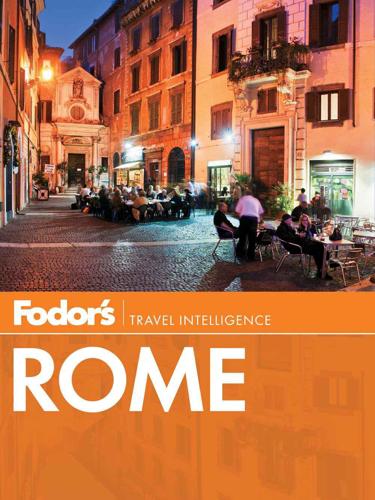
Fodor's Rome: With the Best City Walks and Scenic Day Trips
by
Fodor's Travel Publications Inc.
Published 24 Sep 2012
Make your way through a series of winding cobblestoned alleyways and piazzas toward the famed Piazza Santa Maria in Trastevere, where one of Rome’s oldest churches—Santa Maria in Trastevere—stands. Dedicated to the Virgin Mary, the church has one of the finest displays of glimmering gilded mosaics, which cover the nave, perhaps Rome’s most spectacular. RETAIL THERAPY: SHOP-TILL-YOU-DROP ROME For serious shoppers, there’s no better place to treat yourself to some retail therapy than the centro storico. If money is no question, Rome’s Via dei Condotti (Metro stop: Spagna) is paradiso. VIPs can continue their shopping spree down streets Via del Babuino for fabled antique furniture and fine jewelry, and Via Frattina for exclusive boutiques.
…
A stroll along this concentrated corridor is as great for people-watching as it is for Italian haute couture and prêt-à-porter. The shops can be as intimidating as they are strikingly beautiful, but plastic is the universal equalizer so go ahead and indulge your inner celebrity. BEST TIME TO GO Visitors with a sumptuous sense of bella figura will want to time their retail therapy for just after lunch Tuesday through Friday afternoons or during the evening passeggiata when Via Condotti becomes one gigantic catwalk. BEAUTY AND THE BEACH For candy-apple red polka dots or that bombshell bikini worthy of a pin-up poster, Marisa Padovan (Via delle Carrozze 81) has had the market cornered on one-of-a-kind couture swimwear—ever since Audrey Hepburn and Claudia Cardinale discovered her.

Early Retirement Extreme
by
Jacob Lund Fisker
Published 30 Sep 2010
Perhaps one reason for this complacency is the large quantity of material goods available to the chain gang. Material goods are often used as compensation. Frequently, when someone is depressed, the advice is "Go out and spend some money. Buy yourself something nice. Treat yourself. Try a little retail therapy." People don't seem to realize that this attempt to feel good is exactly what propagates the problem. Compared to people just 50 years ago, modern wage slaves live a life of material abundance. They're consumers. They have big-screen TVs, movies on demand, microwave ovens, food processors, and 24-piece flatware.
…
Now go and look again, but pay attention to the number of books on the bookshelves, the tools for the hobby projects, the work in progress spread out on the desk. There are none. What empty lives these people must live. Having substituted consumption for creativity and technical skills, shopping becomes a form of self-actualization--there's no small number of teenage girls who associate personal growth with changing their wardrobe--"retail therapy" becomes an active way of feeling good. Shopping, then, becomes an end in itself rather than a means to an end. Rather than designing for yourself, purchasing professional designs or brand name-associated "lifestyles" becomes the preferred way of expressing who you are, and consumers start connecting with each other based on the things and brands they buy.
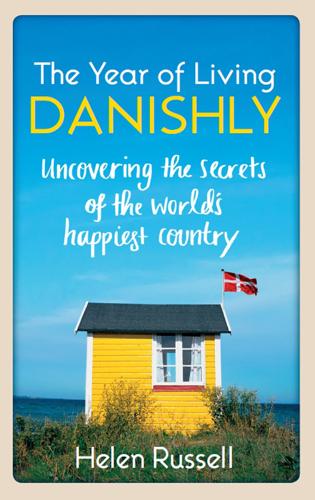
A Year of Living Danishly: My Twelve Months Unearthing the Secrets of the World's Happiest Country
by
Helen Russell
Published 14 Sep 2015
I look over at our off-white Ikea crockery in a pile next to the dishwasher and see that we have work to do. ‘Right,’ I reply brightly, resolving to un-Ikea our home. ‘And all this great design really makes Danes happy?’ I ask. Lego Man already has an arm in a coat and is searching for the car keys to begin his retail therapy. ‘I think so, yes,’ says Charlotte. ‘When we surround ourselves with quality design, it influences our mood. If our surroundings are nice, we feel cosy and safe. It makes us happier.’ I ask if she’s happy herself. ‘Oh yes, I’d say a nine out of ten – there’s always a little room for something more.’
…
Other than choosing the perfect piano to fit in his flat? ‘Having a view of the sea,’ he says straight away. ‘That would bring me up to a ten.’ I decide not to mention the fact that I live by the sea and just remind myself of the things I have to be thankful for. Reuniting with Lego Man, high on retail therapy, he announces that he has procured us two new lamps. I wince, already imagining bank manager Allan with two ‘l’s’ admonitions at such reckless spending. On the plus side, my husband says that he also has several recommendations for where to go for lunch. ‘It was weird,’ he says, ‘everyone I spoke to presumed I was a tourist, then when I told them I lived in Jutland, they did this funny thing with their heads,’ he demonstrates a now-familiar head-on-one-side-in-sympathy pose.
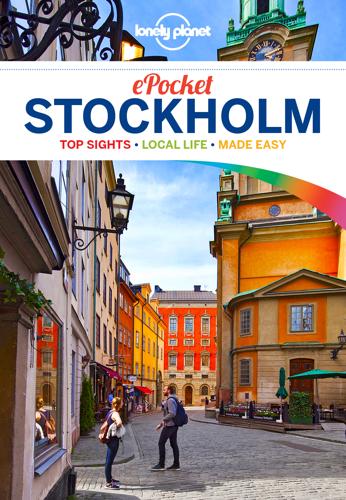
Pocket Stockholm Travel Guide
by
Lonely Planet
You'll find top-name brands and several nice cafes, and the basement levels are great for stocking up on souvenirs and gourmet groceries. Around Christmas, check out its inventive window displays. (%08-762 80 00; www.nk.se; Hamngatan 12-18; h10am-8pm Mon-Fri, 10am-6pm Sat, 11am-5pm Sun; dT-Centralen) 7ÅhlénsDEPARTMENT STORE MAP GOOGLE MAP For your all-in-one retail therapy, scour department-store giant Åhléns. It's especially good for housewares, bedding and Swedish-made items to bring home as gifts. (%08-676 60 00; Klarabergsgatan 50; h10am-9pm Mon-Fri, 10am-7pm Sat, 11am-7pm Sun; dT-Centralen) 7PK HusetSHOPPING CENTRE MAP GOOGLE MAP One of the main shopping centres in Stockholm's central shopping district.
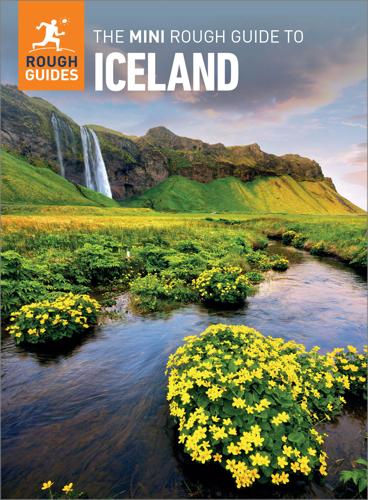
The Mini Rough Guide to Iceland (Travel Guide eBook)
by
Rough Guides
Published 11 Mar 2022
Take a walk through Austurvöllur square, the city’s traditional heart, where you’ll find the statue of Jón Sigurðsson, Parliament House and, adjacent, Reykjavík’s modest cathedral, the Dómkirkjan. Slip past the City Hall to see the abundant birdlife on Tjörnin pond. 2.00pm Heritage walk. Walk down Reykjavík’s oldest street, Aðalstræti, and look in at the city’s most modern heritage museum, the Settlement Exhibition Reykjavík 871±2, for some Icelandic history. 3.00pm Retail therapy. Head to Reykjavík’s main shopping street, Laugavegur, for exclusive, cutting edge fashion labels alongside vintage clothes (Spúútnik at 28b is particularly good for this). Branching off diagonally, Skólavörðustígur is lined with beautiful art and design shops. Further up, you will find the famous Bad Taste Record Shop (Hverfisgata 32). 5.00pm Steam and soak.
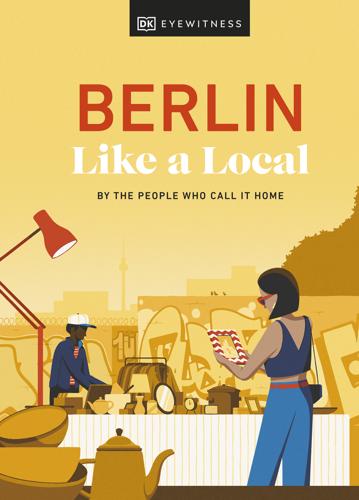
Berlin Like a Local
by
Dk Eyewitness
SHOP There’s a common trope that Berlin doesn’t do customer service. However, while questions may be met with grunts at chain stores, the opposite is true at indie boutiques, helmed by friendly staff. Shops tend to open from 10am to 8pm, but most are shut on Sunday. Still, Sunday flea markets offer a special kind of retail therapy in their place. Haggling is accepted, but asking for a plastic bag at any till isn’t, so carry a tote bag. ARTS & CULTURE There are a handful of free museums and galleries in Berlin, but most change around €8–12 – it’s these places that it’s worth booking ahead for (they’re rightly popular).

Vancouver Like a Local
by
Jacqueline Salomé
With the city being a haven of technical gear, there really is no excuse not to get out there!” ALI CHAPKIN, LOCAL OUTDOOR ENTHUSIAST g SHOP g Contents A morning shopping on Main Street An array of vintage stores, quirky bookstores, and one-of-a kind independent boutiques line the Main Street corridor, making it the perfect stomping ground for locals craving some retail therapy. And, in true Vancouver style, these stores champion local designers and makers by selling handcrafted, sustainably produced goods. Tote bag at the ready – we defy you to leave Main Street empty-handed. Route map 1. Relive your youth at F AS IN FRANK 2425 Main Street; www.fasinfrankvintage.com ///hopeless.exhale.itself Enjoy a dose of nostalgia by trying on vintage hockey jerseys and 1990s band tees at this lovingly curated shop. 2.
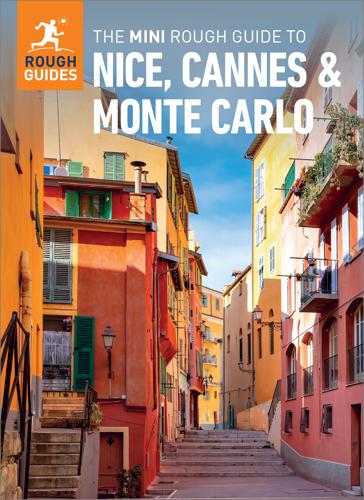
The Mini Rough Guide to Nice, Cannes & Monte Carlo (Travel Guide eBook)
by
Rough Guides
Published 1 Apr 2023
Rub shoulders with top chefs while you check out the wonderful local produce – look out for courgette flowers and Mediterranean fish – at Marché Forville, one of the most animated and colourful markets on the Riviera. 10.00am Up the hill. Walk up cobbled rue St-Antoine in Cannes’ old town, Le Suquet, and head to Musée des Explorations du Monde to see its collections of primitive art and musical instruments. On the way, don’t forget to admire the views across the bay. 11.00am Retail therapy. Browse the high street and designer shops along rue d’Antibes and rue du Commandant André to pick out something stylish to wear for your night out on the town. 12.30pm Lunch. Take the boat from the port over to Ile Saint-Honorat and enjoy a waterside lunch with panoramic views across the coast at La Tonnelle restaurant (http://tonnelle-abbayedelerins.fr).
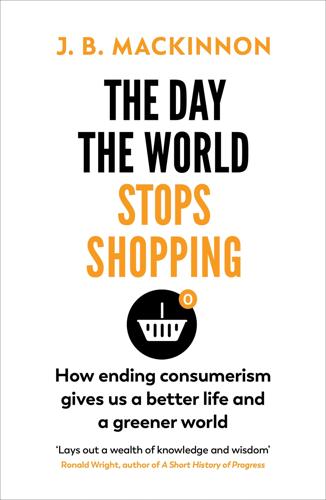
The Day the World Stops Shopping
by
J. B. MacKinnon
Published 14 May 2021
Our reactions to what inequality researcher Richard Wilkinson calls the “ordeal of performance” demanded by status competition are varied: some people become classic, conspicuously consuming materialists; others, their self-esteem ceaselessly under assault, slide into depression or anxiety; still others respond by escaping into drugs, alcohol or consumption itself. (Shopping really can provide temporary “retail therapy” for status anxieties.) Looking at our own lives, most of us probably recognize some mixture of all of the above. The journalist Anu Partanen moved from a wealthy but relatively equal country, Finland, to a nation with some of the worst income inequality in the rich world, the United States, and ultimately wrote a book—The Nordic Theory of Everything—about her observations.
…
See also planned obsolescence “occasional geniuses,” 238 Oe, Kenzaburo, 260 one-planet level, 35–36 one-planet lifestyle, 35 one-planet living, 33, 37 Oppenheim, Leonora, 115–18 “ordeal of performance,” 103 Organization for Economic Co-operation and Development, 150 Osram, 145 outdoor industry, 113 “outdoor rooms,” 37 overconsuming, 32, 90, 281 overconsumption, 10, 138, 290 “oversupply,” 111 Packard, Vance, 145 Paez, Fernanda, 31, 33–34, 36, 40–41 Pan-American Highway, 40 “pandemic pets,” 96 paradigm shift, 191 Paramus, New Jersey, 43–45, 50, 54 Partanen, Anu, 103–4 “participant observation,” 131 Participatory City Foundation, 188, 190 participatory culture, 188, 190–91, 193 Patagonia, 109–15, 139, 164–65, 175 Patagucci, 110 peer group influence, 100 “perceived time” approach, 180 “perfect tranquility,” 245–46 perpetual growth, 183, 219 personal growth, 125–26 Perth, Australia, 69–71, 77 Philips, 145 Phoebus, 145–46 Phoenix, Arizona, 24, 71, 139 pigeons, 231–32 Pike, Kenneth, 251 Piketty, Thomas, 86, 89 Pilling, David, 86 ping-pong balls, 61, 66 Planet America, 32 Planet Germany, 32 Planet Italy, 32 Planet Netherlands, 32 planned obsolescence, 29, 112, 145–48, 150, 220, 252 plastic, 1–2, 6, 10, Polar Furniture Enterprise, 131–133 Pollyannaism, 187 positional consumption, 101–2, 287 poverty, 34, 36, 85, 87, 89–90, 94, 103–4, 132, 135, 157, 264, 278 defining, 40 predictions, 232 versus simple life, 281 Pöyry, Varpu, 93–94, 105–6 prêt-à-jeter, 138 “primitive disaccumulation,” 133 Printers’ Ink, 146 product durability, 144, 149, 290 protest movement, 129, 291 psychology, and intrinsic values, 129 Pull & Bear, 157 Pynchon, Thomas, 146 Q’eqchi’ culture, 282–83 quality of life, 45, 175, 191, 217, 290 quarantine, 11, 53, 124, 126–27, 138, 249 Quito, Ecuador, 31, 33–34, 38, 40, 115 Rana Plaza disaster (2013), 27 Ratner moment, 18, 109 Ratner, Gerald, 18 Reagan, Ronald, 213 rebound effects, 215–20, 255 redistribution of wealth, term, 280, 290 Renaissance Italy, 165, 210, 219 “respending,” 215 retail apocalypse, 291 “retail therapy,” 103 Rhoades, Cyndi, 166–68 “right to repair,” 150 right whales and “marine roads,” 227 noise, effect on, 226 ship strike, 226 studying, 225–227 Rinderle, Amanda, 161–62, 288–89 Riyead, Fakir Wahiduzzaman, 159 Roaring Twenties, 20, 95 Robin, Vicki, 240 Roblox, 251 Rolland, Rosalind, 225 Roosevelt, Franklin, 84 Rousseau, 54 Ruben, Andy, 163–65, 294 running below capacity, 275–76, 278, Russia, 33, 39, 84, 95, 131–36 RVs, 23 sabbath, 14, 43–46, 48–9, 51–54, 267 Sado Island, 259–62, 264, 266–68, 270–72, 293 Sahlins, Marshall, 4–5, 275 sakoku (“closed country”), 175–76 sakura mochi, 171 Sandia National Laboratories, 144 savers, 216 Schlesinger, James, 21 Schor, Juliet, 100, 239 Schwieger, Sarah, 285 Science Advances, 70 “scramble,” 268 Sears, 159 Second Life, 253 Second World War, 20, 22, 47, 62, 73, 87, 93, 95, 98, 134, 170, 177, 187, 219 Seinfeld, 28 self-respect, complacency of, 101, 104 Sey, Jen, 137–39 sharing, 165, 279, 281–82 demand sharing, 280 sharing economy, 150, 191 word, 280 shatta-gai, 261 Shelby Electric, 143 Shi, David, 53 shikata ganai, 264 shinui, 46–47 shiyang, 20 sho, 273 shohi, 273 shopping.
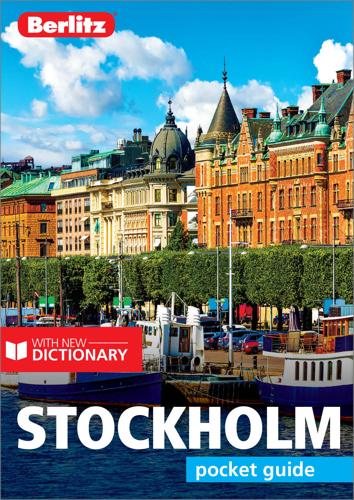
Berlitz Pocket Guide Stockholm
by
Berlitz
Published 19 Dec 2017
Browse in the shops on Västerlånggatan, then treat yourself to a coffee or an ice cream in Stortorget. 11.30am Garden delight Head for Kungsträdgården, the former aristocratic gardens, to enjoy open-air concerts and street performances in summer and ice skating in winter. 12 noon Retail therapy Pay a visit to one of Scandinavia’s finest department stores, Nordiska Kompaniet (NK) and you will soon understand why Sweden has such a high reputation for design. 1.30pm Lunch At the northern end of Kungsträdgården is Victoria, a popular restaurant with outside tables facing on to the square where you can enjoy a plate of traditional Swedish meatballs. 2.30pm Animal magic Back at the waterfront, take the short boat trip to Djurgården, remembering to admire the grand facades of Strandvägen to your left en route, and reach Skansen in time to watch the brown bears being fed in the zoo area and perhaps watch crafts such as glass-blowing or pottery, depending on the calendar. 5.30pm Cocktail hour Enjoy a cocktail, or perhaps a glass of aquavit, at Josefina.
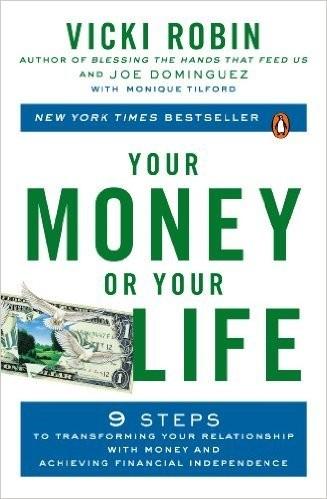
Your Money or Your Life: 9 Steps to Transforming Your Relationship With Money and Achieving Financial Independence: Revised and Updated for the 21st Century
by
Vicki Robin
,
Joe Dominguez
and
Monique Tilford
Published 31 Aug 1992
It could be a means of self-expression or a cover for self-rejection, as an attempt to make up for a poor self-image or to sell yourself. Then there is the endless advice in women’s magazines on how to dress to get a job (one wardrobe) or get a man (yet another wardrobe). Clothing is also used as a tranquilizer or stimulant: “I’m so depressed, I think I’ll go cheer myself up by buying a new outfit.” A friend of ours calls it “retail therapy.” Transportation By using appropriate subcategories for Transportation, you may gain insights that save you hundreds of dollars a year. Doing your tallies is a great opportunity to reflect on why you own a car at all instead of relying on public transportation. Convenience, status, necessity, fitting in, a sense of freedom . . . ?
…
Traditional economics would have you believe that more, better or different stuff can satisfy almost any need and is just a credit card swipe away. But who says frugal pleasures are less pleasurable because they are less pricey? For example, what’s the best way to lift your spirits? An antidepressant? Running? Cognitive therapy? A change of scenery? Going to a funny movie? Helping someone in a worse pickle? Retail therapy? Which works best for you? Do you have just one strategy or many different ones? When you feel depleted, where do you turn? Rest? Exercise? Caffeine? Therapy (retail or talk)? TV? In other words, there’s a difference between needs and the strategies we use to “satisfy” those needs. The Chilean economist Manfred Max-Neef has studied needs and the strategies that satisfy them.
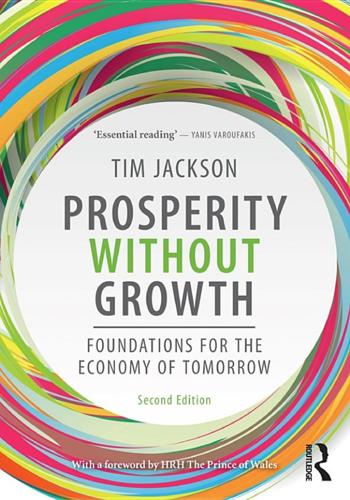
Prosperity Without Growth: Foundations for the Economy of Tomorrow
by
Tim Jackson
Published 8 Dec 2016
They allow us to identify what is sacred in our lives and distinguish it from the mundane. This kind of materialism, flawed though it may be, even offers some kind of substitute for religious consolation. In a secular world, having something to hope for is particularly important when things are going badly. Retail therapy works for a reason.27 Novelty plays an absolutely central role in all this. In the first place, of course, novelty has always carried information about social status. As Thorstein Veblen pointed out over a century ago, ‘conspicuous consumption’ proceeds through novelty. Many of the latest consumer appliances and fashions are accessible at first only to the rich.
…
INDEX Locators in italic refer to figures absolute decoupling 84–6; historical perspectives 89–96, 90, 92, 94, 95; mathematical relationship with relative decoupling 96–101, 111 abundance see opulence accounting errors, decoupling 84, 91 acquisition, instinctive 68 see also symbolic role of goods adaptation: diminishing marginal utility 51, 68; environmental 169; evolutionary 226 advertising, power of 140, 203–4 Africa 73, 75–7; life-expectancy 74; philosophy 227; pursuit of western lifestyles 70; growth 99; relative income effect 58, 75; schooling 78 The Age of Turbulence (Greenspan) 35 ageing populations 44, 81 agriculture 12, 148, 152, 220 Aids/HIV 77 algebra of inequality see inequality; mathematical models alienation: future visions 212, 218–19; geographical community 122–3; role of the state 205; selfishness vs. altruism 137; signals sent by society 131 alternatives: economic 101–2, 139–40, 157–8; hedonism 125–6 see also future visions; post-growth macroeconomics; reform altruism 133–8, 196, 207 amenities see public services/amenities Amish community, North America 128 An Inquiry into the Nature and Causes of the Wealth of Nations (Smith) 123, 132 angelised growth see green growth animal welfare 220 anonymity/loneliness see alienation anthropological perspectives, consumption 70, 115 anti-consumerism 131 see also intrinsic values anxiety: fear of death 69, 104, 115, 212–15; novelty 116–17, 124, 211 Argentina 58, 78, 78, 80 Aristotle 48, 61 The Art of Happiness (Dalai Lama) 49 arts, Baumol’s cost disease 171–2 assets, stranded 167–8 see also ownership austerity policies xxxiii–xxxv, 189; and financial crisis 24, 42–3; mathematical models 181 Australia 58, 78, 128, 206 authoritarianism 199 autonomy see freedom/autonomy Ayres, Robert 143 backfire effects 111 balance: private interests/common good 208; tradition/innovation 226 Bank for International Settlements 46 bank runs 157 banking system 29–30, 39, 153–7, 208; bonuses 37–8 see also financial crisis; financial system basic entitlements: enterprise as service 142; income 67, 72–9, 74, 75, 76, 78; limits to growth 63–4 see also education; food; health Basu, Sanjay 43 Baumol, William 112, 147, 222, 223; cost disease 170, 171, 172, 173 BBC survey, geographical community 122–3 Becker, Ernest 69 Belk, Russ 70, 114 belonging 212, 219 see also alienation; community; intrinsic values Bentham, Jeremy 55 bereavement, material possessions 114, 214–15 Berger, Peter 70, 214 Berry, Wendell 8 Better Growth, Better Climate (New Climate Economy report) 18 big business/corporations 106–7 biodiversity loss 17, 47, 62, 101 biological perspectives see evolutionary theory; human nature/psyche biophysical boundaries see limits (ecological) Black Monday 46 The Body Economic (Stuckler and Basu) 43 bond markets 30, 157 bonuses, banking 37–8 Bookchin, Murray 122 boom-and-bust cycles 157, 181 Booth, Douglas 117 borrowing behaviour 34, 118–21, 119 see also credit; debt Boulding, Elise 118 Boulding, Kenneth 1, 5, 7 boundaries, biophysical see limits (ecological) bounded capabilities for flourishing 61–5 see also limits (flourishing within) Bowen, William 147 Bowling Alone (Putnam) 122 Brazil 58, 88 breakdown of community see alienation; social stability bubbles, economic 29, 33, 36 Buddhist monasteries, Thailand 128 buen vivir concept, Ecuador xxxi, 6 built-in obsolescence 113, 204, 220 Bush, George 121 business-as-usual model 22, 211; carbon dioxide emissions 101; crisis of commitment 195; financial crisis 32–8; growth 79–83, 99; human nature 131, 136–7; need for reform 55, 57, 59, 101–2, 162, 207–8, 227; throwaway society 113; wellbeing 124 see also financial systems Canada 75, 206, 207 capabilities for flourishing 61–5; circular flow of the economy 113; future visions 218, 219; and income 77; progress measures 50–5, 54; role of material abundance 67–72; and prosperity 49; relative income effect 55–61, 58, 71, 72; role of shame 123–4; role of the state 200 see also limits (flourishing within); wellbeing capital 105, 107–10 see also investment Capital in the 21st Century (Piketty) 33, 176, 177 Capital Institute, USA 155 capitalism 68–9, 80; structures 107–13, 175; types 105–7, 222, 223 car industry, financial crisis 40 carbon dioxide emissions see greenhouse gas emissions caring professions, valuing 130, 147, 207 see also social care Cat on a Hot Tin Roof (Williams) 213 causal path analysis, subjective wellbeing 59 Central Bank 154 central human capabilities 64 see also capabilities for flourishing The Challenge of Affluence (Offer) 194 change see alternatives; future visions; novelty/innovation; post-growth macroeconomics; reform Chicago school of economics 36, 156 children: advertising to 204; labour 62, 154; mortality 74–5, 75, 206 Chile xxxiii, xxxvii, 58, 74, 74, 75, 76 China: decoupling 88; GDP per capita 75; greenhouse gas emissions 91; growth 99; life expectancy 74; philosophy 7; post-financial crisis 45–6; pursuit of western lifestyles 70; relative income effect 58; resource use 94; savings 27; schooling 76 choice, moving beyond consumerism 216–18 see also freedom/autonomy Christian doctrine see religious perspectives chromium, commodity price 13 Cinderella economy 219–21, 224 circular economy 144, 220 circular flow of the economy 107, 113 see also engine of growth citizen’s income 207 see also universal basic income civil unrest see social stability Clean City Law, São Paulo 204 climate change xxxv, 22, 47; critical boundaries 17–20; decoupling 85, 86, 87, 98; fatalism 186; investment needs 152; role of the state 192, 198, 201–2 see also greenhouse gas emissions Climate Change Act (2008), UK 198 clothing see basic entitlements Club of Rome, Limits to Growth report xxxii, xxxiii, 8, 11–16, Cobb, John 54 collectivism 191 commercial bond markets 30, 157 commitment devices/crisis of 192–5, 197 commodity prices: decoupling 88; financial crisis 26; fluctuation/volatility 14, 21; resource constraints 13–14 common good: future visions 218, 219; vs. freedom and autonomy 193–4; vs. private interests 208; role of the state 209 common pool resources 190–2, 198, 199 see also public services/amenities communism 187, 191 community: future visions of 219–20; geographical 122–3; investment 155–6, 204 see also alienation; intrinsic values comparison, social 115, 116, 117 see also relative income effect competition 27, 112; positional 55–61, 58, 71, 72 see also struggle for existence complexity, economic systems 14, 32, 108, 153, 203 compulsive shopping 116 see also consumerism Conference of the Parties to the UN Framework Convention on Climate Change (CoP21) 19 conflicted state 197, 201, 209 connectedness, global 91, 227 conspicuous consumption 115 see also language of goods consumer goods see language of goods; material goods consumer sovereignty 196, 198 consumerism 4, 21, 22, 103–4, 113–16; capitalism 105–13, 196; choice 196; engine of growth 104, 108, 120, 161; existential fear of death 69, 212–15; financial crisis 24, 28, 39, 103; moving beyond 216–18; novelty and anxiety 116–17; post-growth economy 166–7; role of the state 192–3, 196, 199, 202–5; status 211; tragedy of 140 see also demand; materialism contemplative dimensions, simplicity 127 contraction and convergence model 206–7 coordinated market economies 27, 106 Copenhagen Accord (2009) 19 copper, commodity prices 13 corporations/big business 106–7 corruption 9, 131, 186, 187, 189 The Cost Disease: Why Computers get Cheaper and Health Care Doesn’t (Baumol) 171, 172 Costa Rica 74, 74, 76 countercyclical spending 181–2, 182, 188 crafts/craft economies 147, 149, 170, 171 creative destruction 104, 112, 113, 116–17 creativity 8, 79; and consumerism 113, 116; future visions 142, 144, 147, 158, 171, 200, 220 see also novelty/innovation credit, private: deflationary forces 44; deregulation 36; financial crisis 26, 27, 27–31, 34, 36, 41; financial system weaknesses 32–3, 37; growth imperative hypothesis 178–80; mortgage loans 28–9; reforms in financial system 157; spending vs. saving behaviour of ordinary people 118–19; and stimulation of growth 36 see also debt (public) credit unions 155–6 crises: of commitment 192–5; financial see financial crisis critical boundaries, biophysical see limits (ecological) Csikszentmihalyi, Mihalyi 127 Cuba: child mortality 75; life expectancy 74, 77, 78, 78; response to economic hardship 79–80; revolution 56; schooling 76 Cushman, Philip 116 Dalai Lama 49, 52 Daly, Herman xxxii, 54, 55, 160, 163, 165 Darwin, Charles 132–3 Das Kapital (Marx) 225 Davidson, Richard 49 Davos World Economic Forum 46 Dawkins, Richard 134–5 de Mandeville, Bernard 131–2, 157 death, denial of 69, 104, 115, 212–15 debt, public-sector 81; deflationary forces 44; economic stability 81; financial crisis 24, 26–32, 27, 37, 41, 42, 81; financial systems 28–32, 153–7; money creation 178–9; post-growth economy 178–9, 223 Debt: The First Five Thousand Years (Graeber) 28 decoupling xix, xx, xxxvii, 21, 84–7; dilemma of growth 211; efficiency measures 84, 86, 87, 88, 95, 104; green growth 163, 163–5; historical perspectives 87–96, 89, 90, 92, 94, 95; need for new economic model 101–2; relationship between relative and absolute 96–101 deep emission and resource cuts 99, 102 deficit spending 41, 43 deflationary forces, post-financial crisis 43–7, 45 degrowth movement 161–3, 177 demand 104, 113–16, 166–7; post-financial crisis 44–5; post-growth economy 162, 164, 166–9, 171–2, 174–5 dematerialisation 102, 143 democratisation, and wellbeing 59 deposit guarantees 35 deregulation 27, 34, 36, 196 desire, role in consumer behaviour 68, 69, 70, 114 destructive materialism 104, 112, 113, 116–17 Deutsche Bank 41 devaluation of currency 30, 45 Dichter, Ernest 114 digital economy 44, 219–20 dilemma of growth xxxi, 66–7, 104, 210; basic entitlements 72–9, 74, 75, 76, 78; decoupling 85, 87, 164; degrowth movement 160–3; economic stability 79–83, 174–6; material abundance 67–72; moving beyond 165, 166, 183–4; role of the state 198 diminishing marginal utility: alternative hedonism 125, 126; wellbeing 51–2, 57, 60, 73, 75–6, 79 disposable incomes 27, 67, 118 distributed ownership 223 Dittmar, Helga 126 domestic debt see credit dopamine 68 Dordogne, mindfulness community 128 double movement of society 198 Douglas, Mary 70 Douthwaite, Richard 178 downshifting 128 driving analogy, managing change 16–17 durability, consumer goods 113, 204, 220 dynamic systems, managing change 16–17 Eastern Europe 76, 122 Easterlin, Richard 56, 57, 59; paradox 56, 58 eco-villages, Findhorn community 128 ecological investment 101, 166–70, 220 see also investment ecological limits see limits (ecological) ecological (ecosystem) services 152, 169, 223 The Ecology of Money (Douthwaite) 178 economic growth see growth economic models see alternatives; business-as-usual model; financial systems; future visions; mathematical models; post-growth macroeconomics economic output see efficiency; productivity ‘Economic possibilities for our grandchildren’ (Keynes) 145 economic stability 22, 154, 157, 161; financial system weaknesses 34, 35, 36, 180; growth 21, 24, 67, 79–83, 174–6, 210; post-growth economy 161–3, 165, 174–6, 208, 219; role of the state 181–3, 195, 198, 199 economic structures: post-growth economy 227; financial system reforms 224; role of the state 205; selfishness 137 see also business-as-usual model; financial systems ecosystem functioning 62–3 see also limits (ecological) ecosystem services 152, 169, 223 Ecuador xxxi, 6 education: Baumol’s cost disease 171, 172; and income 67, 76, 76; investment in 150–1; role of the state 193 see also basic entitlements efficiency measures 84, 86–8, 95, 104, 109–11, 142–3; energy 41, 109–11; growth 111, 211; investment 109, 151; of scale 104 see also labour productivity; relative decoupling Ehrlich, Paul 13, 96 elasticity of substitution, labour and capital 177–8 electricity grid 41, 151, 156 see also energy Elgin, Duane 127 Ellen MacArthur Foundation 144 emissions see greenhouse gas emissions employee ownership 223 employment intensity vs. carbon dioxide emissions 148 see also labour productivity empty self 116, 117 see also consumerism ends above means 159 energy return on investment (EROI) 12, 169 energy services/systems 142: efficiency 41, 109–11; inputs/intensity 87–8, 151; investment 41, 109–10, 151–2; renewable xxxv, 41, 168–9 engine of growth 145; consumerism 104, 108, 161; services 143, 170–4 see also circular flow of the economy enough is enough see limits enterprise as service 140, 141–4, 158 see also novelty/innovation entitlements see basic entitlements entrepreneur as visionary 112 entrepreneurial state 220 Environmental Assessment Agency, Netherlands 62 environmental quality 12 see also pollution environmentalism 9 EROI (energy return on investment) 12, 169 Essay on the Principle of Population (Malthus) 9–11, 132–3 evolutionary map, human heart 136, 136 evolutionary theory 132–3; common good 193; post-growth economy 226; psychology 133–5; selfishness and altruism 196 exchange values 55, 61 see also gross domestic product existential fear of death 69, 104, 115, 212–15 exponential expansion 1, 11, 20–1, 210 see also growth external debt 32, 42 extinctions/biodiversity loss 17, 47, 62, 101 Eyres, Harry 215 Fable of the Bees (de Mandeville) 131–2 factor inputs 109–10 see also capital; labour; resource use fast food 128 fatalism 186 FCCC (Framework Convention on Climate Change) 92 fear of death, existential 69, 104, 115, 212–15 feedback loops 16–17 financial crisis (2008) 6, 23–5, 32, 77, 103; causes and culpability 25–8; financial system weaknesses 32–7, 108; Keynesianism 37–43, 188; nationalisation of financial sector 188; need for financial reforms 175; role of debt 24, 26–32, 27, 81, 179; role of state 191; slowing of growth 43–7, 45; spending vs. saving behaviour of ordinary people 118–21, 119; types/definitions of capitalism 106; youth unemployment 144–5 financial systems: common pool resources 192; debt-based/role of debt 28–32, 153–7; post-growth economy 179, 208; systemic weaknesses 32–7; and wellbeing 47 see also banking system; business-as-usual model; financial crisis; reform Findhorn community 128 finite limits of planet see limits (ecological) Fisher, Irving 156, 157 fishing rights 22 flourishing see capabilities for flourishing; limits; wellbeing flow states 127 Flynt, Larry 40 food 67 see also basic entitlements Ford, Henry 154 forestry/forests 22, 192 Forrester, Jay 11 fossil fuels 11, 20 see also oil Foucault, Michel 197 fracking 14, 15 Framework Convention on Climate Change (FCCC) 92 France: GDP per capita 58, 75, 76; inequality 206; life-expectancy 74; mindfulness community 128; working hours 145 free market 106: financial crisis 35, 36, 37, 38, 39; ideological controversy/conflict 186–7, 188 freedom/autonomy: vs. common good 193–4; consumer 22, 68–9; language of goods 212; personal choices for improvement 216–18; wellbeing 49, 59, 62 see also individualism Friedman, Benjamin 176 Friedman, Milton 36, 156, 157 frugality 118–20, 127–9, 215–16 fun (more fun with less stuff) 129, 217 future visions 2, 158, 217–21; community banking 155–6; dilemma of growth 211; enterprise as service 140, 141–4, 147–8, 158; entrepreneur as visionary 112; financial crisis as opportunity 25; and growth 165–6; investment 22, 101–2, 140, 149–53, 158, 169, 208; money as social good 140, 153–7, 158; processes of change 185; role of the state 198, 199, 203; timescales for change 16–17; work as participation 140, 144–9, 148, 158 see also alternatives; post-growth macroeconomics; reform Gandhi, Mahatma 127 GDP see gross domestic product gene, selfish 134–5 Genuine Progress Indicator (GPI) 54, 54 geographical community 122–3 Germany xxxi; Federal Ministry of Finance 224–5; inequality 206; relative income effect 58; trade balance 31; work as participation 146 Glass Steagal Act 35 Global Commodity Price Index (1992–2015) 13 global corporations 106–7 global economy 98: culture 70; decoupling 86–8, 91, 93–5, 95, 97, 98, 100; exponential expansion 20–1; inequality 4, 5–6; interconnectedness 91, 227; post-financial crisis slowing of growth 45 Global Research report (HSBC) 41 global warming see climate change Godley, Wynne 179 Goldman Sachs 37 good life 3, 6; moral dimension 63, 104; wellbeing 48, 50 goods see language of goods; material goods; symbolic role of goods Gordon, Robert 44 governance 22, 185–6; commons 190–2; crisis of commitment 192–5, 197; economic stability 34, 35; establishing limits 200–8, 206; growth 195–9; ideological controversy/conflict 186–9; moving towards change 197–200, 220–1; post-growth economy 181–3, 182; power of corporations 106; for prosperity 209; signals 130 government as household metaphor 30, 42 governmentality 197, 198 GPI (Genuine Progress Indicator) 54, 54 Graeber, David 28 Gramm-Leach-Bliley Act 35 Great Depression 39–40 Greece: austerity xxxiii–xxxiv, xxxvii, 43; energy inputs 88; financial crisis 28, 30, 31, 77; life expectancy 74; schooling 76; relative income effect 58; youth unemployment 144 Green Economy initiative 41 green: growth xxxvii, 18, 85, 153, 166, 170; investment 41 Green New Deal, UNEP 40–1, 152, 188 greenhouse gas emissions 18, 85, 86, 91, 92; absolute decoupling 89–92, 90, 92, 98–101, 100; dilemma of growth 210–11; vs. employment intensity 148; future visions 142, 151, 201–2, 220; Kyoto Protocol 18, 90; reduction targets 19–20; relative decoupling 87, 88, 89, 93, 98–101, 100 see also climate change Greenspan, Alan 35 gross domestic product (GDP) per capita 3–5, 15, 54; climate change 18; decoupling 85, 93, 94; financial crisis 27, 28, 32; green growth 163–5; life expectancy 74, 75, 78; as measure of prosperity 3–4, 5, 53–5, 54, 60–1; post-financial crisis 43, 44; post-growth economy 207; schooling 76; wellbeing 55–61, 58 see also income growth xxxvii; capitalism 105; credit 36, 178–80; decoupling 85, 96–101; economic stability 21, 24, 67, 80, 210; financial crisis 37, 38; future visions 209, 223, 224; inequality 177; labour productivity 111; moving beyond 165, 166; novelty 112; ownership 105; post-financial crisis slowing 43–7, 45; prosperity as 3–7, 23, 66; role of the state 195–9; sustainable investment 166–70; wellbeing 59–60; as zero sum game 57 see also dilemma of growth; engine of growth; green growth; limits to growth; post-growth macroeconomy growth imperative hypothesis 37, 174, 175, 177–80, 183 habit formation, acquisition as 68 Hall, Peter 106, 188 Hamilton, William 134 Hansen, James 17 happiness see wellbeing/happiness Happiness (Layard) 55 Hardin, Garrett 190–1 Harvey, David 189, 192 Hayek, Friedrich 187, 189, 191 health: Baumol’s cost disease 171, 172; inequality 72–3, 205–6, 206; investment 150–1; and material abundance 67, 68; personal choices for improvement 217; response to economic hardship 80; role of the state 193 see also basic entitlements Heath, Edward 66, 82 hedonism 120, 137, 196; alternatives 125–6 Hirsch, Fred xxxii–xxxiii historical perspectives: absolute decoupling 86, 89–96, 90, 92, 94, 95; relative decoupling 86, 87–9, 89 Holdren, John 96 holistic solutions, post-growth economy 175 household finances: house purchases 28–9; spending vs. saving behaviour 118–20, 119 see also credit household metaphor, government as 30, 42 HSBC Global Research report 41 human capabilities see capabilities for flourishing human happiness see wellbeing/happiness human nature/psyche 3, 132–5, 138; acquisition 68; alternative hedonism 125; evolutionary map of human heart 136, 136; intrinsic values 131; meaning/purpose 49–50; novelty/innovation 116; selfishness vs. altruism 133–8; short-termism/living for today 194; spending vs. saving behaviour 34, 118–21, 119; symbolic role of goods 69 see also intrinsic values human rights see basic entitlements humanitarian perspectives: financial crisis 24; growth 79; inequality 5, 52, 53 see also intrinsic values hyperbolic discounting 194 hyperindividualism 226 see also individualism hyper-materialisation 140, 157 I Ching (Chinese Book of Changes) 7 Iceland: financial crisis 28; life expectancy 74, 75; relative income effect 56; response to economic hardship 79–80; schooling 76; sovereign money system 157 identity construction 52, 69, 115, 116, 212, 219 IEA (International Energy Agency) 14, 152 IMF (International Monetary Fund) 45, 156–7 immaterial goods 139–40 see also intrinsic values; meaning/purpose immortality, symbolic role of goods 69, 104, 115, 212–14 inclusive growth see inequality; smart growth income 3, 4, 5, 66, 124; basic entitlements 72–9, 74, 75, 76, 78; child mortality 74–5, 75; decoupling 96; economic stability 82; education 76; life expectancy 72, 73, 74, 77–9, 78; poor nations 67; relative income effect 55–61, 58, 71, 72; tax revenues 81 see also gross domestic product INDCs (intended nationally determined commitments) 19 India: decoupling 99; growth 99; life expectancy 74, 75; philosophy 127; pursuit of western lifestyles 70; savings 27; schooling 76 indicators of environmental quality 96 see also biodiversity; greenhouse gas emissions; pollution; resource use individualism 136, 226; progressive state 194–7, 199, 200, 203, 207 see also freedom/autonomy industrial development 12 see also technological advances inequality 22, 67; basic entitlements 72; child mortality 75, 75; credible alternatives 219, 224; deflationary forces 44; fatalism 186; financial crisis 24; global 4, 5–6, 99, 100; financial system weaknesses 32–3; post-growth economy 174, 176–8; role of the state 198, 205–7, 206; selfishness vs. altruism 137; symbolic role of goods 71; wellbeing 47, 104 see also poverty infant mortality rates 72, 75 inflation 26, 30, 110, 157, 167 infrastructure, civic 150–1 Inglehart, Ronald 58, 59 innovation see novelty/innovation; technological advances inputs 80–1 see also capital; labour productivity; resource use Inside Job documentary film 26 instant gratification 50, 61 instinctive acquisition 68 Institute for Fiscal Studies 81 Institute for Local Self-Reliance 204 institutional structures 130 see also economic structures; governance intended nationally determined commitments (INDCs) 19 intensity factor, technological 96, 97 see also technological advances intentional communities 127–9 interconnectedness, global 91, 227 interest payments/rates 39, 43, 110; financial crisis 29, 30, 33, 39; post-growth economy 178–80 see also credit; debt Intergovernmental Panel on Climate Change (IPCC) 18, 19, 201–2 International Energy Agency (IEA) 14, 152 International Monetary Fund (IMF) 45, 156–7 intrinsic values 126–31, 135–6, 212; role of the state 199, 200 see also belonging; community; meaning/purpose; simplicity/frugality investment 107–10, 108; ecological/sustainable 101, 152, 153, 166–70, 220; and innovation 112; loans 29; future visions 22, 101–2, 140, 149–53, 158, 169, 208, 220; and savings 108; social 155, 156, 189, 193, 208, 220–3 invisible hand metaphor 132, 133, 187 IPAT equation, relative and absolute decoupling 96 IPCC (Intergovernmental Panel on Climate Change) 18, 19, 201–2 Ireland 28; inequality 206; life expectancy 74, 75; schooling 76; wellbeing 58 iron cage of consumerism see consumerism iron ore 94 James, Oliver 205 James, William 68 Japan: equality 206; financial crisis 27, 45; life expectancy 74, 76, 79; relative income effect 56, 58; resource use 93; response to economic hardship 79–80 Jefferson, Thomas 185 Jobs, Steve 210 Johnson, Boris 120–1 Kahneman, Daniel 60 Kasser, Tim 126 keeping up with the Joneses 115, 116, 117 see also relative income effect Kennedy, Robert 48, 53 Keynes, John Maynard/Keynesianism 23, 34, 120, 174, 181–3, 187–8; financial crisis 37–43; financial system reforms 157; part-time working 145; steady state economy 159, 162 King, Alexander 11 Krugman, Paul 39, 85, 86, 102 Kyoto Protocol (1992) 18, 90 labour: child 62, 154; costs 110; division of 158; elasticity of substitution 177, 178; intensity 109, 148, 208; mobility 123; production inputs 80, 109; structures of capitalism 107 labour productivity 80–1, 109–11; Baumol’s cost disease 170–2; and economic growth 111; future visions 220, 224; investment as commitment 150; need for investment 109; post-growth economy 175, 208; services as engine of growth 170; sustainable investment 166, 170; trade off with resource use 110; work-sharing 145, 146, 147, 148, 148, 149 Lahr, Christin 224–5 laissez-faire capitalism 187, 195, 196 see also free market Lakoff, George 30 language of goods 212; material footprint of 139–40; signalling of social status 71; and wellbeing 124 see also consumerism; material goods; symbolic role of goods Layard, Richard 55 leadership, political 199 see also governance Lebow, Victor 120 Lehman Brothers, bankruptcy 23, 25, 26, 118 leisure economy 204 liberal market economies 106, 107; financial crisis 27, 35–6 life expectancy: and income 72, 73, 74, 77–9, 78; inequality 206; response to economic hardship 80 see also basic entitlements life-satisfaction 73; inequality 205; relative income effect 55–61, 58 see also wellbeing/happiness limits, ecological 3, 4, 7, 11, 12, 20–2; climate change 17–20; decoupling 86; financial crisis 23–4; growth 21, 165, 210; post-growth economy 201–2, 226–7; role of the state 198, 200–2, 206–7; and social boundaries 141; wellbeing 62–63, 185 limits, flourishing within 61–5, 185; alternative hedonism 125–6; intrinsic values 127–31; moving towards 215, 218, 219, 221; paradox of materialism 121–23; prosperity 67–72, 113, 212; role of the state 201–2, 205; selfishness 131–8; shame 123–4; spending vs. saving behaviour 118–21, 119 see also sustainable prosperity limits to growth: confronting 7–8; exceeding 20–2; wellbeing 62–3 Limits to Growth report (Club of Rome) xxxii, xxxiii, 8, 11–16 ‘The Living Standard’ essay (Sen) 50, 123–4 living standards 82 see also prosperity Lloyd, William Forster 190 loans 154; community investment 155–6; financial system weaknesses 34 see also credit; debt London School of Economics 25 loneliness 123, 137 see also alienation long-term: investments 222; social good 219 long-term wellbeing vs. short-term pleasures 194, 197 longevity see life expectancy love 212 see also intrinsic values low-carbon transition 19, 220 LowGrow model for the Canadian economy 175 MacArthur Foundation 144 McCracken, Grant 115 Malthus, Thomas Robert 9–11, 132–3, 190 market economies: coordinated 27, 106; liberal 27, 35–6, 106, 107 market liberalism 106, 107; financial crisis 27, 35–6; wellbeing 47 marketing 140, 203–4 Marmot review, health inequality in the UK 72 Marx, Karl/Marxism 9, 189, 192, 225 Massachusetts Institute of Technology (MIT) 11, 12, 15 material abundance see opulence material goods 68–9; identity 52; language of 139–40; and wellbeing 47, 48, 49, 51, 65, 126 see also symbolic role of goods material inputs see resource use materialism: and fear of death 69, 104, 115, 212–15; and intrinsic values 127–31; paradox of 121–3; price of 126; and religion 115; values 126, 135–6 see also consumerism mathematical models/simulations 132; austerity policies 181; countercyclical spending 181–2, 182; decoupling 84, 91, 96–101; inequality 176–8; post-growth economy 164; stock-flow consistent 179–80 Mawdsley, Emma 70 Mazzucato, Mariana 193, 220 MDG (Millennium Development Goals) 74–5 Meadows, Dennis and Donella 11, 12, 15, 16 meaning/purpose 2, 8, 22; beyond material goods 212–16; consumerism 69, 203, 215; intrinsic values 127–31; moving towards 218–20; wellbeing 49, 52, 60, 121–2; work 144, 146 see also intrinsic values means and ends 159 mental health: inequality 206; meaning/purpose 213 metaphors: government as household 30, 42; invisible hand 132, 133, 187 Middle East, energy inputs 88 Miliband, Ed 199 Mill, John Stuart 125, 159, 160, 174 Millennium Development Goals (MDG) 74–5 mindfulness 128 Minsky, Hyman 34, 35, 40, 182, 208 MIT (Massachusetts Institute of Technology) 11, 12, 15 mixed economies 106 mobility of labour, loneliness index 123 Monbiot, George 84, 85, 86, 91 money: creation 154, 157, 178–9; and prosperity 5; as social good 140, 153–7, 158 see also financial systems monopoly power, corporations 106–7 The Moral Consequences of Economic Growth (Friedman) 82, 176 moral dimensions, good life 63 see also intrinsic values moral hazards, separation of risk from reward 35 ‘more fun with less stuff’ 129, 217 mortality fears 69, 104, 115, 212–15 mortality rates, and income 74, 74–6, 75 mortgage loans 28–9, 35 multinational corporations 106–7 national debt see debt, public-sector nationalisation 191; financial crisis 38, 188 natural selection 132–3 see also struggle for existence nature, rights of 6–7 negative emissions 98–9 negative feedback loops 16–17 Netherlands 58, 62, 206, 207 neuroscientific perspectives: flourishing 68, 69; human behaviour 134 New Climate Economy report Better Growth, Better Climate 18 New Deal, USA 39 New Economics Foundation 175 nickel, commodity prices 13 9/11 terrorist attacks (2001) 121 Nordhaus, William 171, 172–3 North America 128, 155 see also Canada; United States Norway: advertising 204; inequality 206; investment as commitment 151–2; life expectancy 74; relative income effect 58; schooling 76 novelty/innovation 104, 108, 113; and anxiety 116–17, 124, 211; crisis of commitment 195; dilemma of growth 211; human psyche 135–6, 136, 137; investment 150, 166, 168; post-growth economy 226; role of the state 196, 197, 199; as service 140, 141–4, 158; symbolic role of goods 114–16, 213 see also technological advances Nudge: Improving Decisions about Health, Wealth, and Happiness (Thaler and Sunstein) 194–5 Nussbaum, Martha 64 nutrient loading, critical boundaries 17 nutrition 67 see also basic entitlements obesity 72, 78, 206 obsolescence, built in 113, 204, 220 oceans: acidification 17; common pool resources 192 Offer, Avner 57, 61, 71, 194, 195 oil prices 14, 21; decoupling 88; financial crisis 26; resource constraints 15 oligarchic capitalism 106, 107 opulence 50–1, 52, 67–72 original sin 9, 131 Ostrom, Elinor and Vincent 190, 191 output see efficiency; gross domestic product; productivity ownership: and expansion 105; private vs. public 9, 105, 191, 219, 223; new models 223–4; types/definitions of capitalism 105–7 Oxfam 141 paradoxes: materialism 121–3; thrift 120 Paris Agreement 19, 101, 201 participation in society 61, 114, 122, 129, 137; future visions 200, 205, 218, 219, 225; work as 140–9, 148, 157, 158 see also social inclusion part-time working 145, 146, 149, 175 Peccei, Aurelio 11 Perez, Carlota 112 performing arts, Baumol’s cost disease 171–2 personal choice 216–18 see also freedom/autonomy personal property 189, 191 Pickett, Kate 71, 205–6 Piketty, Thomas 33, 176, 177 planetary boundaries see limits (ecological) planning for change 17 pleasure 60–1 see also wellbeing/happiness Plum Village mindfulness community 128 Polanyi, Karl 198 policy see governance political leadership 199 see also governance Political Economy Research Institute, University of Massachusetts 41 pollution 12, 21, 53, 95–6, 143 polycentric governance 191, 192 Poor Laws 10 poor nations see poverty population increase 3, 12, 63, 96, 97, 190; Malthus on 9–11, 132–3 porn industry 40 Portugal 28, 58, 88, 206 positional competition 55–61, 58, 71, 72 see also social comparison positive feedback loops 16–17 post-growth capitalism 224 post-growth macroeconomics 159–60, 183–4, 221; credit 178–80; degrowth movement 161–3; economic stability 174–6; green growth 163–5; inequality 176–8; role of state 181–3, 182, 200–8, 206; services 170–4; sustainable investment 166–70 see also alternatives; future visions; reform poverty 4, 5–6, 216; basic entitlements 72; flourishing within limits 212; life expectancy 74, 74; need for new economic model 101; symbolic role of goods 70; wellbeing 48, 59–60, 61, 67 see also inequality; relative income effect power politics 200 predator–prey analogy 103–4, 117 private credit see credit private vs. public: common good 208; ownership 9, 105, 191, 219, 223; salaries 130 privatisation 191, 219 product lifetimes, obsolescence 113, 204, 220 production: inputs 80–1; ownership 191, 219, 223 productivity: investment 109, 167, 168, 169; post-growth economy 224; services as engine of growth 171, 172, 173; targets 147; trap 175 see also efficiency measures; labour productivity; resource productivity profits: definitions of capitalism 105; dilemma of growth 211; efficiency measures 87; investment 109; motive 104; post-growth economy 224; and wages 175–8 progress 2, 50–5, 54 see also novelty/innovation; technological advances progressive sector, Baumol’s cost disease 171 progressive state 185, 220–2; contested 186–9; countering consumerism 202–5; equality measures 205–7, 206; governance of the commons 190–2; governance as commitment device 192–5; governmentality of growth 195–7; limit-setting 201–2; moving towards 197–200; post-growth macroeconomics 207–8, 224; prosperity 209 prosocial behaviour 198 see also social contract prosperity 1–3, 22, 121; capabilities for flourishing 61–5; and growth 3–7, 23, 66, 80, 160; and income 3–4, 5, 66–7; limits of 67–72, 113, 212; materialistic vision 137; progress measures 50–5, 54; relative income effect 55–61, 58, 71, 72; social perspectives 2, 22, 48–9; state roles 209 see also capabilities for flourishing; post-growth macroeconomics; sustainable prosperity; wellbeing prudence, financial 120, 195, 221; financial crisis 33, 34, 35 public sector spending: austerity policies 189; countercyclical spending strategy 181–2, 182; welfare economy 169 public services/amenities: common pool resources 190–2, 198, 199; future visions 204, 218–20; investment 155–6, 204; ownership 223 see also private vs. public; service-based economies public transport 41, 129, 193, 217 purpose see meaning/purpose Putnam, Robert 122 psyche, human see human nature/psyche quality, environmental 12 see also pollution quality of life: enterprise as service 142; inequality 206; sustainable 128 quality to throughput ratios 113 quantitative easing 43 Queen Elizabeth II 25, 32, 34, 37 quiet revolution 127–31 Raworth, Kate 141 Reagan, Ronald 8 rebound phenomenon 111 recession 23–4, 28, 81, 161–3 see also financial crisis recreation/leisure industries 143 recycling 129 redistribution of wealth 52 see also inequality reforms 182–3, 222; economic structures 224; and financial crisis 103; financial systems 156–8, 180 see also alternatives; future visions; post-growth economy relative decoupling 84–5, 86; historical perspectives 87–9, 89; relationship with absolute decoupling 96–101, 111 relative income effect 55–61, 58, 71, 72 see also social comparison religious perspectives 9–10, 214–15; materialism as alternative to religion 115; original sin 9, 131; wellbeing 48, 49 see also existential fear of death renewable energy xxxv, 41, 168–169 repair/renovation 172, 220 resource constraints 3, 7, 8, 11–15, 47 resource productivity 110, 151, 168, 169, 220 resource use: conflicts 22; credible alternatives 101, 220; decoupling 84–9, 92–5, 94, 95; and economic output 142–4; investment 151, 153, 168, 169; trade off with labour costs 110 retail therapy 115 see also consumerism; shopping revenues, state 222–3 see also taxation revolution 186 see also social stability rights: environment/nature 6–7; human see basic entitlements risk, financial 24, 25, 33, 35 The Road to Serfdom (Hayek) 187 Robinson, Edward 132 Robinson, Joan 159 Rockström, Johan 17, 165 romantic movement 9–10 Roosevelt, Franklin D. 35, 39 Rousseau, Jean Jacques 9, 131 Russia 74, 76, 77–80, 78, 122 sacred canopy 214, 215 salaries: private vs. public sector 130, 171; and profits 175–8 Sandel, Michael 150, 164, 218 São Paulo, Clean City Law 204 Sardar, Zia 49, 50 Sarkozy, Nicolas xxxi, 53 savage state, romantic movement 9–10 savings 26–7, 28, 107–9, 108; investment 149; ratios 34, 118–20, 119 scale, efficiencies of 104 Scandinavia 27, 122, 204 scarcity, managing change 16–17 Schumpeter, Joseph 112 Schwartz, Shalom 135–6, 136 schooling see education The Science of Desire (Dichter) 114 secular stagnation 43–7, 45, 173 securitisation, mortgage loans 35 security: moving towards 219; and wellbeing 48, 61 self-development 204 self-expression see identity construction self-transcending behaviours see transcendence The Selfish Gene (Dawkins) 134–5 selfishness 133–8, 196 Sen, Amartya 50, 52, 61–2, 123–4 service concept/servicization 140–4, 147–8, 148, 158 service-based economies 219; engine of growth 170–4; substitution between labour and capital 178; sustainable investment 169–70 see also public services SFC (stock-flow consistent) economic models 179–80 shame 123–4 shared endeavours, post-growth economy 227 Sheldon, Solomon 214 shelter see basic entitlements shopping 115, 116, 130 see also consumerism short-termism/living for today 194, 197, 200 signals: sent out by society 130, 193, 198, 203, 207; social status 71 see also language of goods Simon, Julian 13 simplicity/simple life 118–20, 127–9, 215–16 simulations see mathematical models/simulations slow: capital 170; movement 128 smart growth 85, 163–5 see also green growth Smith, Adam 51, 106–7, 123, 132, 187 social assets 220 social boundaries (minimum standards) 141 see also basic entitlements social care 150–1 see also caring professions social comparison 115, 116, 117 see also relative income effect social contract 194, 198, 199, 200 social inclusion 48, 69–71, 114, 212 see also participation in society social investment 155, 156, 189, 193, 208, 220–3 social justice 198 see also inequality social logic of consumerism 114–16, 204 social stability 24, 26, 80, 145, 186, 196, 205 see also alienation social status see status social structures 80, 129, 130, 137, 196, 200, 203 social tolerance, and wellbeing 59, 60 social unrest see social stability social wage 40 social welfare: financial reforms 182–3; public sector spending 169 socialism 223 Sociobiology (Wilson) 134 soil integrity 220 Solon, quotation 47, 49, 71 Soper, Kate 125–6 Soros, George 36 Soskice, David 106 Soviet Union, former 74, 76, 77–80, 78, 122 Spain 28, 58, 144, 206 SPEAR organization, responsible investment 155 species loss/extinctions 17, 47, 62, 101 speculation 93, 99, 149, 150, 154, 158, 170; economic stability 180; financial crisis 26, 33, 35; short-term profiteering 150; spending: behaviour of ordinary people 34, 119, 120–1; countercyclical 181–2, 182, 188; economic stability 81; as way out of recession 41, 44, 119, 120–1; and work cycle 125 The Spirit Level (Wilkinson and Pickett) 71, 205–6 spiritual perspectives 117, 127, 128, 214 stability see economic stability; social stability stagflation 26 stagnant sector, Baumol’s cost disease 171 stagnation: economic stability 81–2; labour productivity 145; post-financial crisis 43–7, 45 see also recession state capitalism, types/definitions of capitalism 106 state revenues, from social investment 222–3 see also taxation state roles see governance status 207, 209, 211; and possessions 69, 71, 114, 115, 117 see also language of goods; symbolic role of goods Steady State Economics (Daly) xxxii steady state economies 82, 159, 160, 174, 180 see also post-growth macroeconomics Stern, Nicholas 17–18 stewardship: role of the state 200; sustainable investment 168 Stiglitz, Joseph 53 stock-flow consistent (SFC) economic models 179–80 Stockholm Resilience Centre 17, 201 stranded assets 167–8 see also ownership structures of capitalism see economic structures struggle for existence 8–11, 125, 132–3 Stuckler, David 43 stuff see language of goods; material goods; symbolic role of goods subjective wellbeing (SWB) 49, 58, 58–9, 71, 122, 129 see also wellbeing/happiness subprime lending 26 substitution, between labour and capital 177–178 suffering, struggle for existence 10 suicide 43, 52, 77 Sukdhev, Pavan 41 sulphur dioxide pollution 95–6 Summers, Larry 36 Sunstein, Cass 194 sustainability xxv–xxvi, 102, 104, 126; financial systems 154–5; innovation 226; investment 101, 152, 153, 166–70, 220; resource constraints 12; role of the state 198, 203, 207 see also sustainable prosperity Sustainable Development Strategy, UK 198 sustainable growth see green growth sustainable prosperity 210–12; creating credible alternatives 219–21; finding meaning beyond material commodities 212–16; implications for capitalism 222–5; personal choices for improvement 216–18; and utopianism 225–7 see also limits (flourishing within) SWB see subjective wellbeing; wellbeing/happiness Switzerland 11, 46, 157; citizen’s income 207; income relative to wellbeing 58; inequality 206; life expectancy 74, 75 symbolic role of goods 69, 70–1; existential fear of death 212–16; governance 203; innovation/novelty 114–16; material footprints 139–40; paradox of materialism 121–2 see also language of goods; material goods system dynamics model 11–12, 15 tar sands/oil shales 15 taxation: capital 177; income 81; inequality 206; post-growth economy 222 technological advances 12–13, 15; decoupling 85, 86, 87, 96–8, 100–3, 164–5; dilemma of growth 211; economic stability 80; population increase 10–11; role of state 193, 220 see also novelty/innovation Teilhard de Chardin, Pierre 8 terror management, and consumption 69, 104, 115, 212–15 terrorist attacks (9/11) 121 Thailand, Buddhist monasteries 128 Thaler, Richard 194 theatre, Baumol’s cost disease 171–2 theology see religious perspectives theory of evolution 132–3 thermodynamics, laws of 112, 164 Thich Nhat Hanh 128 thrift 118–20, 127–9, 215–16 throwaway society 113, 172, 204 timescales for change 16–17 tin, commodity prices 13 Today programme interview xxix, xxviii Totnes, transition movement 128–9 Towards a Green Economy report (UNEP) 152–3 Townsend, Peter 48, 61 trade balance 31 trading standards 204 tradition 135–6, 136, 226 ‘Tragedy of the commons’ (Hardin) 190–1 transcendence 214 see also altruism; meaning/purpose; spiritual perspectives transition movement, Totnes 128–9 Triodos Bank 156, 165 Trumpf (machine-tool makers) Germany 146 trust, loss of see alienation tungsten, commodity prices 13 Turkey 58, 88 Turner, Adair 157 21st Conference of the Parties to the UN Framework Convention on Climate Change (2015) 19 UBS (Swiss bank) 46 Ubuntu, African philosophy 227 unemployment 77; consumer goods 215; degrowth movement 162; financial crisis 24, 40, 41, 43; Great Depression 39–40; and growth 38; labour productivity 80–1; post-growth economy 174, 175, 183, 208, 219; work as participation 144–6 United Kingdom: Green New Deal group 152; greenhouse gas emissions 92; labour productivity 173; resource inputs 93; Sustainable Development Strategy 198 United Nations: Development Programme 6; Environment Programme 18, 152–3; Green Economy initiative 41 United States: credit unions 155–6; debt 27, 31–32; decoupling 88; greenhouse gas emissions 90–1; subprime lending 26; Works Progress Administration 39 universal basic income 221 see also citizen’s income University of Massachusetts, Political Economy Research Institute 41 utilitarianism/utility, wellbeing 50, 52–3, 55, 60 utopianism 8, 38, 125, 179; post-growth economy 225–7 values, materialistic 126, 135–6 see also intrinsic values Veblen, Thorstein 115 Victor, Peter xxxviii, 146, 175, 177, 180 vision of progress see future visions; post-growth economy volatility, commodity prices 14, 21 wages: and profits 175–8; private vs. public sector 130, 171 walking, personal choices for improvement 217 water use 22 Wealth of Nations, An Inquiry into the Nature and Causes (Smith) 123, 132 wealth redistribution 52 see also inequality Weber, Axel 46 welfare policies: financial reforms 182–3; public sector spending 169 welfare of livestock 220 wellbeing/happiness 47–50, 53, 121–2, 124; collective 209; consumer goods 4, 21, 22, 126; growth 6, 165, 211; intrinsic values 126, 129; investment 150; novelty/innovation 117; opulence 50–2, 67–72; personal choices for improvement 217; planetary boundaries 141; relative income effect 55–61, 58, 71, 72; simplicity 129; utilitarianism 50, 52–3, 55, 60 see also capabilities for flourishing western lifestyles 70, 210 White, William 46 Whybrow, Peter 68 Wilhelm, Richard 7 Wilkinson, Richard 71, 205–6 Williams, Tennessee 213 Wilson, Edward 134 wisdom traditions 48, 49, 63, 128, 213–14 work: as participation 140–9, 148, 157, 158; and spend cycle 125; sharing 145, 146, 149, 175 Works Progress Administration, USA 39 World Bank 160 World Values Survey 58 youth unemployment, financial crisis 144–5 zero sum game, growth as 57, 71

Lonely Planet Kauai
by
Lonely Planet
,
Adam Karlin
and
Greg Benchwick
Published 18 Sep 2017
Allerton Garden | Design Pics Inc/Alamy Stock Photo © Top Experiences Shopping Spree in Hanalei Quirky mixed-media sculpture, refined oil paintings, high-end beach fashion, masks and spears carved by Asmat warriors, the cutest bikinis and the most luscious lotions – designed and crafted on the island – and some spectacular vintage mid-century heirlooms can all be found in the storefronts and boutiques lined up in a hedgerow along Kuhio Hwy in Hanalei. If you're beached out and the trails aren't calling, it's time for some retail therapy. Eric Farrelly/Alamy Stock Photo © Top Experiences Snorkeling & Diving the South Shore The South Shore is a wonderland of underwater sights. Here you'll find lava caves and ledges home to resident monk seals, napping turtles and sharks, and rock reefs home to all manner of tropical fish.
…
Regions at a Glance Hanalei & the North Shore Surfing Hanalei Bay If you conjured a surf town from stardust, it would be populated by sun-bronzed barefoot, young-at-heart souls who descend on a beautiful blue bay surrounded by mountains weeping with waterfalls. The bay would swell with waves small and beyond large, gentle and hollow as an endless barrel. Welcome to Eden. Retail Therapy Hanalei's main drag offers evocative art, sensational mid-century antiques and tasteful fashion. You won't go home empty-handed. North Shore Nourishment A bakery for morning coffee and treats. Organic grocer and farmers markets. Wonderful tapas bar with a wine list to match. An all-time classic dive bar.
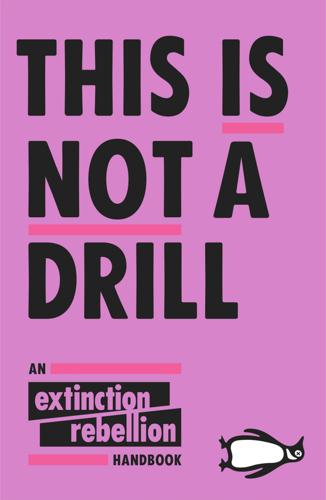
This Is Not a Drill: An Extinction Rebellion Handbook
by
Extinction Rebellion
Published 12 Jun 2019
And for governments seeking to raise tax revenues without raising the tax rate, more growth is the all-too-convenient answer. Our economies are also socially addicted to growth, thanks to a century of consumerist propaganda, invented by Edward Bernays, nephew of Sigmund Freud. He realized that he could turn the insights of his uncle’s psychotherapy into very lucrative retail therapy by convincing the public that the promise of feeling admired, envied, loved or secure is only always just one purchase away. Here’s the real trouble with this structural lock-in to endless growth. Look to nature, which has been thriving for 3.8 billion years, so it’s a pretty good example to learn from if we, too, want to stick around.

Insight Guides Pocket Turkey (Travel Guide eBook)
by
Insight Guides
Published 31 Jul 2019
All development has been kept blessedly far inland at cheerful Gelemiş resort, thanks to the ruins and the presence of loggerhead turtles. Kalkan and Kaş Relatively free of important ruins, Kalkan and its near neighbour Kaş, both former Greek fishing villages, offer the ruin-weary traveller bougainvillea-shaded café terraces, breezy seaside promenades and plenty of retail therapy. Both are charming resorts and excellent bases from which to explore the coast. Kalkan, 13km (8 miles) east of the Patara turn-off on Highway 400, is marginally the smaller of the two towns. The old quarter of stone-built, tile-roofed houses, some occupied by shops, restaurants and pansiyons, clings to a steep hillside descending to a small harbour.
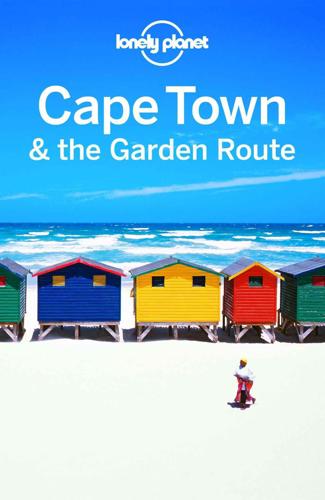
Lonely Planet Cape Town & the Garden Route (Travel Guide)
by
Lucy Corne
Published 1 Sep 2015
East City, District Six, Woodstock & Observatory Sights Eating Drinking & Nightlife Entertainment Shopping Sports & Activities East City, District Six, Woodstock & Observatory Neighbourhood Top Five 1Learn about Cape Town’s troubled past at the District Six Museum, which is as much for the people of the destroyed inner city as it is about them. 2Browse the Old Biscuit Mill for retail therapy and gourmet eats. 3Discover South African artists at galleries such as Stevenson and What If The World. 4Enjoy top class theatre and digital movie events at the Fugard. 5Admire the dazzling street art brightening up East City, District Six and Woodstock. Explore East City, District Six, Woodstock & Observatory East of the City Bowl are a string of working-class and industrial suburbs that are regenerating and partly gentrifying.
…
The speciality is Chalmar beef, though you'll also find lots of South African favourites including ostrich, Karoo lamb and traditional dishes such as bobotie (delicately flavoured curry with a topping of beaten egg baked to a crust). Reservations recommended. 7Shopping Old Nick VillageARTS & CRAFTS (www.oldnickvillage.co.za) For a bit of retail therapy, head for this complex 3km east of town, with resident artists, a weaving museum, antiques and a restaurant. 2Sports & Activities Ocean Blue AdventuresBOAT TOUR ( GOOGLE MAP ; %044-533 5083; www.oceanadventures.co.za; Hopewood St, Milkwood Centre; dolphin/whale watching R440/700) Trips on 30-person boats to view dolphins and whales in season.

Lonely Planet Pocket Florence (Travel Guide)
by
Planet, Lonely
,
Maxwell, Virginia
and
Williams, Nicola
Published 31 Dec 2013
Enjoy a well-deserved rest over lunch at Da Ruggero ( Click here ), a traditional Tuscan trattoria, or opt for a glass of wine and a snack at Enoteca Fuori Porta ( Click here ) – its range of Tuscan and Piemontese reds is particularly impressive. Afterwards, walk through San Niccolò, indulge in a spot of retail therapy at Alessandro Dari ( Click here ) and Lorenzo Villoresi ( Click here ), and then head up Via del Monte alla Croce to visit one of the city’s Romanesque gems, the Basilica di San Miniato al Monte ( Click here ). Watch the sun set over the city from Piazzale Michelangelo ( Click here ) and make your way to Le Volpi e l’Uva ( Click here ) for a pre-dinner drink.
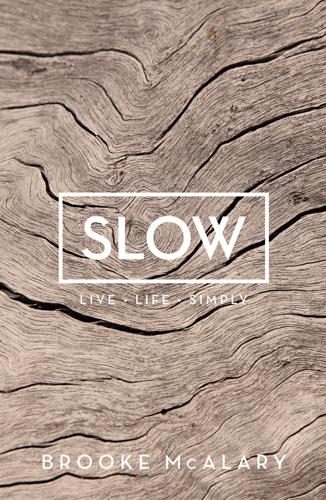
Slow
by
Brooke McAlary
Published 22 Aug 2017
And believe me, I get it. As homes get bigger and self-storage facilities blossom in the suburbs, we find ourselves obsessed with the acquisition of ever more: stuff, status, activity, likes, followers, friends and money. Catalogues arrive daily. Online shopfronts ring with purchases made day and night. Retail therapy is mistaken for actual therapy. Social media is used to sell us new clothes, new lifestyles, new business opportunities, new health trends. Advertisements bombard us with the next big thing, making us feel inadequate until we relent and buy, just to fit in. To paraphrase American actor Will Rogers, we buy things we can’t afford to impress people we don’t like.
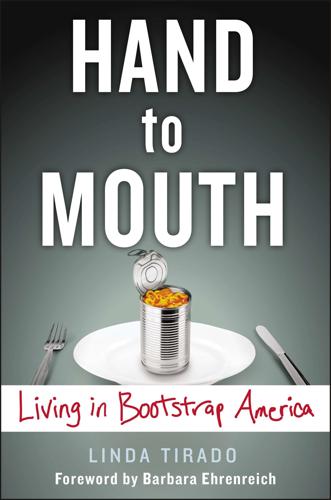
Hand to Mouth: Living in Bootstrap America
by
Linda Tirado
Published 1 Oct 2014
Why are other people’s coping mechanisms better than poor people’s? Because they’re prettier. People with more money drink better wine out of nicer glasses. And maybe they get a prescription for benzos from their own personal on-call psychiatrist instead of buying a pack of cigarettes. They can buy whatever they like and it’s okay, because retail therapy is a recognized course of treatment for the upper classes. Poor people don’t have those luxuries. We smoke because it’s a fast, quick hit of dopamine. We eat junk because it’s cheap and it lights up the pleasure centers of our brain. And we do drugs because it’s an effective way to feel good or escape something.
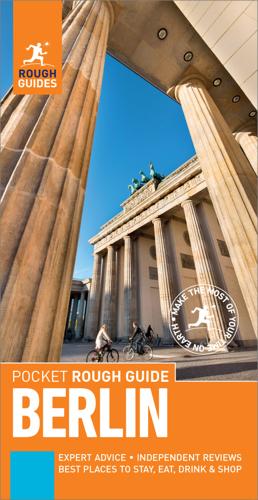
Pocket Rough Guide Berlin (Travel Guide eBook)
by
Rough Guides
Published 16 Oct 2019
Linger over coffee or a budget lunch at Café Savigny. Story of Berlin. This museum does precisely what it says on the tin, covering eight centuries of Berlin's history in an insightful and impressive manner. Shopping on Ku’damm. Since you’re on the mighty Kurfürstendamm it’d be a shame not to indulge in some retail therapy. Don’t forget to check the side streets too for a host of excellent, independent boutiques. Dinner. Try some thoroughly old-fashioned Silesian and Pomeranian food at Marjellchen, a marvellous timewarp. < Back to Itineraries GDR Berlin Take an “Ostalgie” tour through former East Berlin, its monumental sights, kitsch icons and memorials to the city’s divided past.
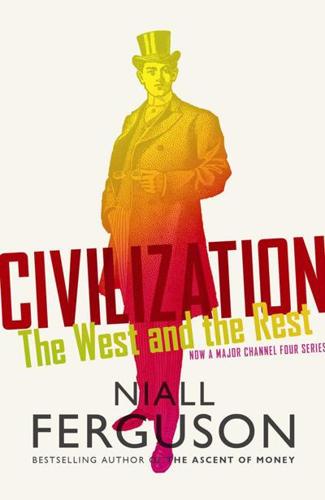
Civilization: The West and the Rest
by
Niall Ferguson
Published 28 Feb 2011
Western ‘hard power’ seems to be struggling in the Greater Middle East, from Iraq to Afghanistan, just as the ‘Washington Consensus’ on free-market economic policy disintegrates. The financial crisis that began in 2007 also seems to indicate a fundamental flaw at the heart of the consumer society, with its emphasis on debt-propelled retail therapy. The Protestant ethic of thrift that once seemed so central to the Western project has all but vanished. Meanwhile, Western elites are beset by almost millenarian fears of a coming environmental apocalypse. What is more, Western civilization appears to have lost confidence in itself. Beginning with Stanford in 1963, a succession of major universities have ceased to offer the classic ‘Western Civ.’ history course to their undergraduates.
…
Or does the West’s consumer society have an antidote to the veil as effective as blue jeans once were to Maoist pyjamas? Perhaps, on reflection, these are the wrong questions to ask. For they imply that all the achievements of Western civilization – capitalism, science, the rule of law and democracy – have been reduced to nothing more profound than a spot of shopping. Retail therapy may not be the answer to all our problems. Maybe the ultimate threat to the West comes not from radical Islamism, or any other external source, but from our own lack of understanding of, and faith in, our own cultural heritage. Work Christianity will go. It will vanish and shrink. I needn’t argue about that; I’m right and I will be proved right.
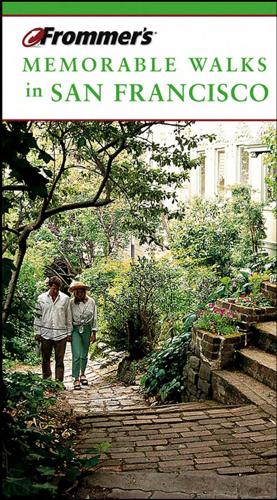
Frommer's Memorable Walks in San Francisco
by
Erika Lenkert
Published 15 Mar 2003
Unfortunately, there’s not a lot to look at on the way, other than empty retail spaces once filled to the rafters with dot-commers. But just when you think I’ve sent you into a never-ending concrete nightmare, you can consider stopping at: 6. Jeremys, at 2 South Park (the entrance is on Second), for a little retail therapy. This beautiful store offers top designer fashions, from shoes to suits and gowns, at rockbottom prices. There are no cheap knockoffs here, just entirely fashionable clothes and accessories for far less than you’ll pay elsewhere. Exit Jeremys and turn right onto: 7. South Park, one of SoMa’s sweetest attributes, and previously famous as the heart of the daily dot-com caffeine and lunching scene, today’s South Park is amazingly quiet and quaint.
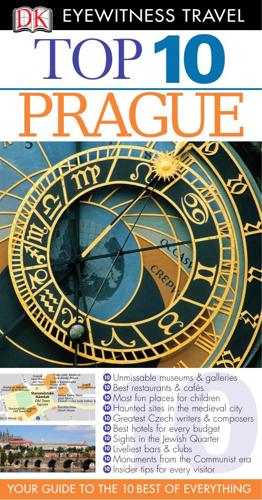
Top 10 Prague
by
Schwinke, Theodore.
Sadly, American bombs demolished the monastery’s original Baroque steeples on St Valentine’s Day 1945, as part of the Allies’ World War II military campaign. d Map E6 Morning Start your day with breakfast at Hotel Evropa (see p78), then head to Wenceslas Square (see pp30–31) to begin the day’s sightseeing. A quick peep inside the National Museum (see p36) will probably suffice unless it’s raining or you’re a big fan of natural history. From there, proceed to St Wenceslas’s statue and the monument to Communism’s victims, where you can pay tribute to the nation’s growing pains. Get in a bit of retail therapy along the square as you walk up to Můstek, then visit the Museum of Communism (see p37), ironically located above McDonald’s and a casino. Around Town – New Town led by Jan Želivský hurled the Catholic mayor and his councillors from a New Town Hall window in the first of Prague’s defenestrations (see p11).

Buried in Treasures: Help for Compulsive Acquiring, Saving, and Hoarding
by
David Tolin
,
Randy O. Frost
and
Gail Steketee
Published 14 Dec 2013
In some cases, they buy more than they need at stores, yard sales, or flea markets. In other cases, they acquire free things such as extra newspapers, advertisements, or discarded items from street trash or dumpsters. A few people with hoarding have even resorted to stealing to satisfy their urge to accumulate things. Accumulating objects is sometimes a form of “retail therapy” in which the buying and acquiring soothes a negative mood or distracts the person from uncomfortable thoughts. Although some people get a good deal of joy and fulfillment from buying things they like or finding “good deals,” it is a problem when the person doesn’t have enough money and space in the home to keep pace with the number of objects acquired.
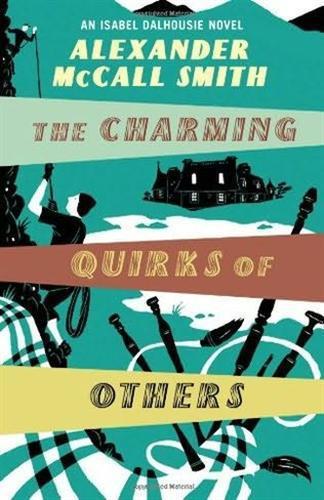
The Charming Quirks of Others: An Isabel Dalhousie Novel
by
Alexander McCall Smith
Published 11 Oct 2010
You know how we all have worries—silly things. But they worry us.” “And they usually are silly,” said Grace. “Aren’t they?” Isabel nodded silently. Not this one, she thought. This is not silly. “Go shopping,” said Grace. “Treat yourself. Go to Jenners. Buy something.” Isabel smiled weakly. “Retail therapy?” “Precisely. It always works.” Isabel shook her head. “Not for me. It makes me feel guilty.” Grace started to leave the room, carrying Charlie, who was waving a small hand at his mother. “You feel guilty about far too much,” came her parting shot. “It’s all that philosophy. How guilty they must all have felt, those people.

Buyology
by
Martin Lindstrom
Published 14 Jul 2008
When you see that shiny digital camera, or those flashy diamond earrings, for example, dopamine subtly flushes your brain with pleasure, then wham, 08/08/2009 10:45 26 of 83 file:///D:/000004/Buy__ology.html before you know it, you’ve signed the credit card receipt (researchers generally agree that it takes as little as 2.5 seconds to make a purchasing decision).8 A few minutes later, as you exit the store, bag in hand, the euphoric feelings caused by the dopamine recede, and all of a sudden you wonder whether you’ll really ever use that damn camera or wear those earrings. Sound familiar? Surely we’ve all heard the term “retail therapy.” And as we all know, whether our vice is shoes, CDs, or electronics, shopping can be addictive. If nothing else, shopping—for anything from Twinkies to Maytag refrigerators to Bulgari watches—has become an enormous part of what we do in our spare time. But does it actually make us happier? All scientific indicators point to yes—at least in the very short term.
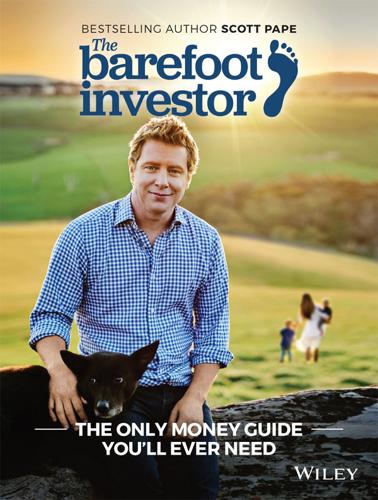
The Barefoot Investor: The Only Money Guide You'll Ever Need
by
Scott Pape
Published 22 Nov 2016
After all, we didn't have a home, let alone cupboards, to put anything in yet. So, for the next 12 months we bought pretty much … nothing. Huh? Yes, the bulk of the cash sat in our (high-interest online Mojo) account. Perhaps if you were in our situation you would have shopped till you dropped. After all, it's called retail therapy for a reason, right? Well, when you lose everything you own, it changes the way you think about ‘stuff'. How could it not? Now, you could set fire to your home and all your possessions to experience this epiphany ... though there are less expensive (and less traumatic) ways to get to the same place.
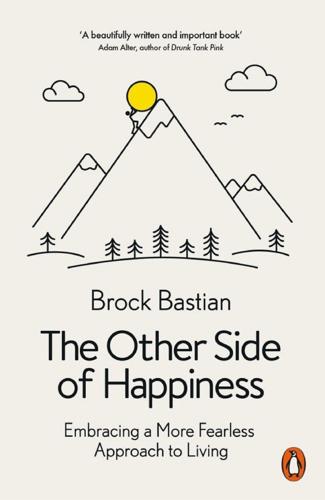
The Other Side of Happiness: Embracing a More Fearless Approach to Living
by
Brock Bastian
Published 25 Jan 2018
Drawing on the logic of opponent processes, we would also expect that as with initially negative events (recall the example of jogging in the morning above), over repeated instances we begin to adapt to the initial positive experience (e.g. the joy of shopping) but the negative opponent process becomes stronger (e.g. the sense of regret). This certainly suggests that the concept of ‘retail therapy’ has its limits, and that seeking endless pleasure not only does not work, but works less and less over repeated instances. Although the above examples rely on an underlying emotional opponent process to understand how a positive event may lead to a subsequent negative experience, there are also other ways that seeking pleasant experiences might undermine our enjoyment in life.
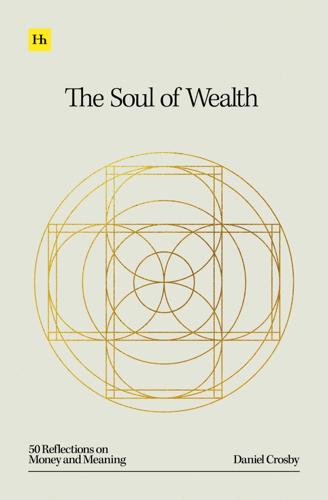
The Soul of Wealth
by
Daniel Crosby
Published 19 Sep 2024
Reducing your time on social media can help improve your overall well-being and decrease the desire to impress based on unrealistic standards. Research has found that people who throttled back their social media usage to just ten minutes per platform daily showed significant drops in depression and loneliness.208 Those two conditions commonly result in retail therapy in a fruitless effort to boost social standing in our minds. Experiment with creativity: While impressing others is almost necessarily an act in conformity, creativity is the opposite; the building of something new and heretofore non-existent. As you begin to create your reality instead of parroting others’, your perspective will shift.

On the Slow Train Again
by
Michael Williams
Published 7 Apr 2011
Half-close your eyes and you can summon up the seventeenth-century world of Captain Marryat’s Children of the New Forest, which was partly set here, or the Victorian era, when Edward Gibbon, author of The History of Decline and Fall of the Roman Empire, was the town’s MP. Lymington’s High Street is a paradise for anyone seeking yachtie retail therapy with shops bearing nautical names such as Crew Clothing or the Chandlery – not surprising, since this is the home of some of the world’s most famous regattas, including the Royal Lymington Cup – but what is the West Cornwall Pasty Company doing here? For more than a century it was the railway that created the town’s prosperity, but no longer.
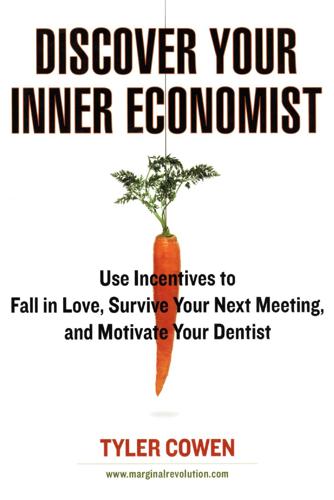
Tyler Cowen-Discover Your Inner Economist Use Incentives to Fall in Love, Survive Your Next Meeting, and Motivate Your Dentist-Plume (2008)
by
Unknown
Published 20 Sep 2008
But for many other human desires, using money in a marketplace does not work very well, and sometimes it doesn't work at all. Getting what we want is not always so simple. Say you feel low because you've just broken up with a boyfriend or girlfriend. Characters on television sitcoms often advise "retail therapy"; the claim is that he who thinks that money doesn't buy happiness doesn't know where to shop in the mall. This is exactly wrong. The Beatles were closer to the truth when they sang "Can't Buy Me Love." Rather than knowing where to shop, it is more important to know how to shop, and also to know when not to shop.
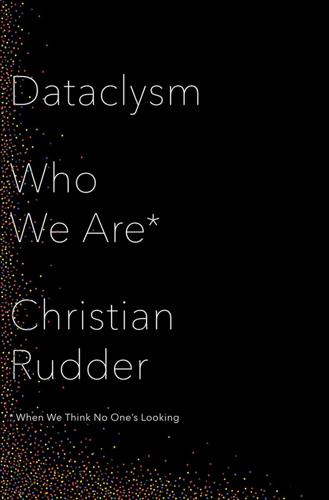
Dataclysm: Who We Are (When We Think No One's Looking)
by
Christian Rudder
Published 8 Sep 2014
The lists below were made using the same math as the OkCupid lists above, but they use the text from users’ tweets. most typical words for … men women good bro my nails done ps4 my sissy james harden mani pedi mark sanchez my makeup my beard my purse cp3 girls night in 2k my hair for bynum prom dress the squad girls day bro we retail therapy manziel thanks girl in nba my future husband year deal to dye iverson dress shopping yeah bro too girl kyrie happy girl hoopin bobby pins free agent wanelo tim duncan my boyfriend and scorer my belly button offseason my roomie hof girlies xbox one dying my david stern cute texts yds girl crush fantasy team my boyfriends gameplay eyebrows done gasol curl my lbj my hubby bro u us girls This gives you the distilled essences of men and women—read and grow stupider.
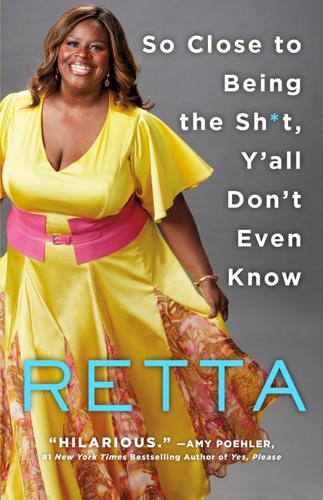
So Close to Being the Sh*t, Y'all Don't Even Know
by
Retta
Published 28 May 2018
For you that’s good.” “Fifteen THOUSAND.” “You just spent fifteen grand on the pot??” “I know. I feel like a Hilton.” It’s true, people. I bought a bag on the bowl. Basically, I charged the equivalent of a Honda Civic on my credit card in less than forty seconds. It may have been an impulse buy—retail therapy to nurture my broken heart—but don’t they always say to go with your gut? Whoever “they” are. I went into justification mode. It was a BARGAIN! That bag would normally cost at least $30,000! I don’t regret what I did. My Birkin is my most prized possession and I take excellent care of it, along with the fifteen Louis, twelve Guccis, and dozens of other bags I’ve collected over the years.
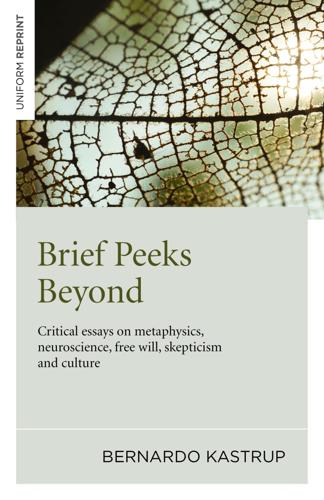
Brief Peeks Beyond: Critical Essays on Metaphysics, Neuroscience, Free Will, Skepticism and Culture
by
Bernardo Kastrup
Published 28 May 2015
Our obfuscated psyche tries to correct our course through an array of signals: unexplained unease, depression, anxieties, intuitive epiphanies and odd drives. We then diligently proceed to ignore and repress all these signals through distractions: idiotic television shows, fanatic rooting for sports teams, alcohol, retail ‘therapy,’ hollow social networking, compulsive money-making and status-chasing, compulsive casual dating and whatnot. This is understandable in that nobody likes to remain exposed to the anguish, frustration and anxiety emerging from the obfuscated psyche while it attempts to force a change. But if those feelings are not allowed self-reflective mental space to be acknowledged, processed and integrated, not only will they harm us even more from within – think of psychoses and even physical illness, as discussed in essay 8.3 – we will not give ourselves any chance to find the meaning of our lives again.
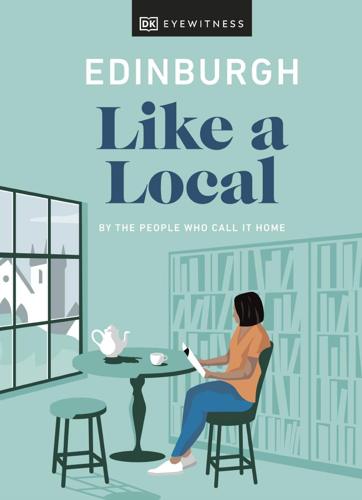
Edinburgh Like a Local: By the People Who Call It Home
by
Dk Eyewitness
Published 28 Sep 2021
www.scottishdesignexchange.com Something of a hybrid between a shop and gallery, this stylish space sells gorgeous handmade ceramics, prints, clothes, textiles, accessories THE TARTAN BL ANKET CO. and quirky homewares by up-and-coming artists and designers. Map 4; 170 Great Junction Street, Leith; ///bliss.muddy.skill; Retail therapy is all the more satisfying when you know that your www.tartanblanketco.com hard-earned cash is going straight to the makers, right? And with Whether it’s used as an oversized scarf to keep out the wind, to wrap over 300 involved to date, you’ll be spoiled for choice. up a wee one asleep in the car or thrown over your sofa for curling » Don’t leave without checking out the “Meet the Artists” page on up with a cuppa, the classic tartan blanket will never go out of style, the SDX website to find out more about the artists represented in store.

How Much Is Enough?: Money and the Good Life
by
Robert Skidelsky
and
Edward Skidelsky
Published 18 Jun 2012
As Schor puts it, “It becomes far more profitable for a company to hire a smaller number of people for long hours than to extend those hours over more workers (who would also be paid benefits).”23 The consequence is that the labor force is becoming segmented into a shrinking core of full-time permanent employees, who probably work more than they want, and an expanded periphery of unemployed and partly employed who work less than they want, and whose wages need to be topped up with tax credits to keep them in employment at all. In this type of account, consumerism figures as a sop to workers deprived of the leisure they crave. To relieve their frustration (and keep them docile), they are offered a stream of useless, mind-numbing consumer goods. Shopping is wittily, but accurately, called “retail therapy”—a compensation for unpleasant or depressing experiences. The creation of artificial needs ensures workers’ loyalty to the work ethic. As Schor puts it in her essay “Towards a New Politics of Consumption,” “there may well be a path for the economy that involves less work and less stuff, and is preferred by people to the high-work/high-consumption track.
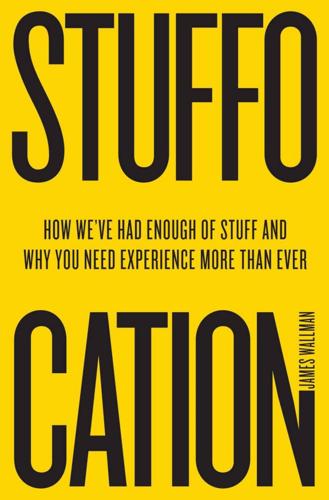
Stuffocation
by
James Wallman
Published 6 Dec 2013
But in our materialistic consumer culture, we have come to rely on material goods too much, and they are letting us down. In today’s materialistic culture, many people believe material things can solve emotional problems. But this, as the psychologist Oliver James wrote, is a “false promise”. Retail therapy, in other words, does not work. Instead, it is more likely to make your problems worse – by putting you in debt, for instance. In today’s culture, material goods have become substitutes for deep and genuinely meaningful human desires and questions. Consumer culture has become a sort of pseudo-religion.
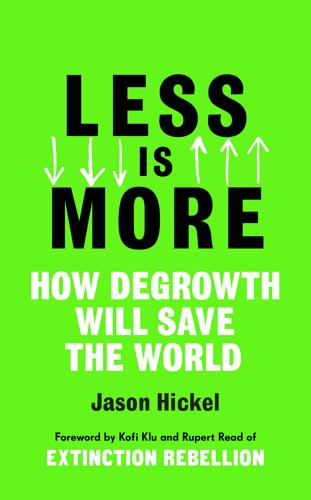
Less Is More: How Degrowth Will Save the World
by
Jason Hickel
Published 12 Aug 2020
Studies in the US have found that people who work shorter hours are happier than those who work longer hours, even when controlling for income.24 When France downshifted to the thirty-five-hour week, workers reported that their quality of life improved.25 An experiment in Sweden showed that employees who reduced their working time to thirty hours reported improved life satisfaction and better health outcomes.26 Data also shows that shorter hours leave people feeling more satisfied with their jobs, boosting morale and happiness.27 And – perhaps best of all – shorter hours are associated with greater gender equality, both in the workplace and at home.28 Some critics worry that if you give people more time off they’ll spend it on energy-intensive leisure activities, like taking long-haul flights for holidays. But the evidence shows exactly the opposite. It is those with less leisure time who tend to consume more intensively: they rely on high-speed travel, meal deliveries, impulsive purchases, retail therapy, and so on. A study of French households found that longer working hours are directly associated with higher consumption of environmentally intensive goods, even when correcting for income.29 By contrast, when people are given time off they tend to gravitate towards lower-impact activities: exercise, volunteering, learning, and socialising with friends and family.30 These effects play out across whole countries.
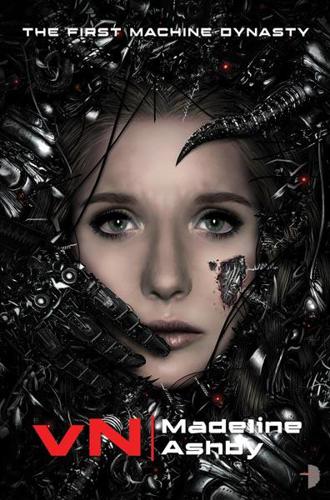
vN: The First Machine Dynasty (The Machine Dynasty Book 1)
by
Madeline Ashby
Published 28 Jul 2012
Things their moms had said. Things their dads had never said. Charlotte was different. Charlotte was vN. She had no hormones to influence her decision-making, no feast-or-famine cycle driving dopamine or serotonin. She didn't get cramps or headaches or nightmares or hangovers. She didn't need retail therapy or any other kind. Her "childhood" was difficult – her mother abandoned her in a junkyard – but her spirit was as strong as the titanium sheathing her graphene coral bones, her personal integrity as impermeable as the silicone skin overlaying the polymerdoped memristors embedded there, her wit as quick as the carbon aerogel currents wafting through and shaping the musculature of her body.
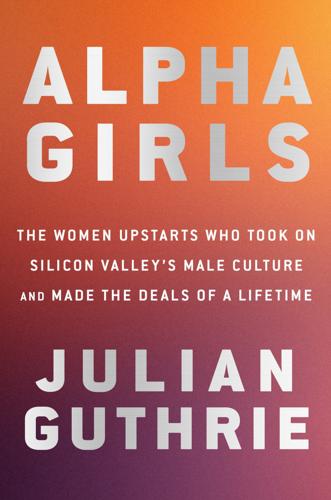
Alpha Girls: The Women Upstarts Who Took on Silicon Valley's Male Culture and Made the Deals of a Lifetime
by
Julian Guthrie
Published 15 Nov 2019
She had far surpassed her college dream of moving to Silicon Valley and earning six figures. Tensions surfaced between Theresia and Tim without either of them discussing why. Tim was now managing his money and Theresia’s money. It was the only arrangement Theresia knew. It was what married couples did. But Theresia got tired of Tim criticizing her for her “retail therapy”—those occasional shopping trips to Neiman Marcus to find a gorgeous pair of shoes on the sales rack. So she negotiated with him: In the future, she would manage 10 percent of her bonus, putting the money into her own account, to be used as she wanted. To avoid arguments, she took to waiting until he was out of the house to spirit bags of new shoes from the trunk of her car into her closet.
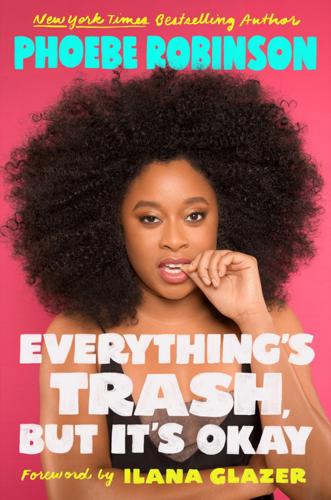
Everything's Trash, but It's Okay
by
Phoebe Robinson
Published 15 Oct 2018
So, to deal, we frequently dip into our complaint attaché cases* to use tools that help us defend ourselves when it may seem, in the moment, that our lives, core values, sense of selves, or even just our valuable time are on the line. And yes, everyone has their very own monogrammed complaint attaché case. I don’t care how nice you are. You complain. Regularly. Firing off a snarky tweet that garners tons of faves and retweets, spending money on retail therapy or actual therapy, or simply expressing frustration in hopes of either finding a resolution or blowing off steam? I’ve been there, done all of that, and most likely so have you. In fact, so have many Americans, as we are quick to bust out the case at the first sign of discomfort. Don’t get me wrong; sometimes the complaints are necessary.
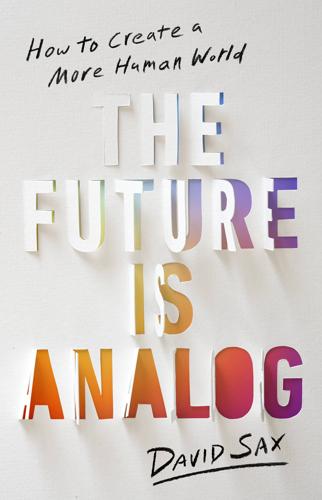
The Future Is Analog: How to Create a More Human World
by
David Sax
Published 15 Jan 2022
Working with direct-to-consumer brands, which began online and moved into stores, Kondrat had learned about the powerful place of analog commerce in the lives of consumers. “If we only ever shopped for exactly what we needed to survive, maybe there’d be a future where there’s no brick-and-mortar retail, because that’s all we needed. Retail therapy is a phrase for a reason. That is going to continue five to twenty years from now. The formats of stores will change, some of the technology will change, but there will always be this touch/try/delight element to retail, and the human interaction part of that won’t change drastically.” Kondrat believes in a digital future for retail, but in her view most technology belongs in the background.

Empire of Things: How We Became a World of Consumers, From the Fifteenth Century to the Twenty-First
by
Frank Trentmann
Published 1 Dec 2015
Three-year-olds today can recognize McDonald’s golden arches before they can recall their own surname. By the age of ten, British children command a knowledge of 350 brands but can name only twenty birds. Mattel created an interactive doll, Diva Starz, which introduced six- to eleven-year-olds to retail therapy, telling them, ‘I’m in a bad mood. Let’s go shopping.’ In Nottingham, England, an eight-year-old girl was bombarded with pre-approved credit-card offers. In the United States, pupils are subject to in-school advertising and branded give-aways. Girl Scouts no longer just learn to build a campfire but can also earn a ‘fashion adventure’ badge for a trip to the mall and a visit to a pre-teen clothing store.
…
B. 305–6, 528 print culture 47 see also books Prittwitz, Moritz von 116 privacy 94, 223, 236, 245–6, 377, 398, 546; durables and the privacy of the home 253; private lifestyles and socialist regimes 333, 375–6, 377; for those suffering from mental illness 555 private consumption see consumption: private privatism 392, 399 privatization 329, 375–7, 391, 535, 596 production: and class/caste 381; colonialism and tropical production 78–9, 80, 90, 91, 162–3; and company leisure see company leisure activities; and company towns 524–8, 534; consumption as ‘sole end’ of 3, 54, 100, 151; consumption subordinated to 11, 41; corporate-led consumption see company services, and corporate-led consumption; empire writing out the colonial producer 173; environmental damage from 683 see also pollution; factory production 146 see also factories; leisure from high productivity 287; as a man’s role 11, 43; mass see mass production; monopolized by husbands 43; national products 297–300; outsourced 683; politics of productivity 294; separation from consumption 246; standardized see standardization; united with consumption in the home 269, 270; war production 529 ‘progressive individualism’ 237–8 propaganda 69, 126, 277–8, 293, 616, 644 property prices 423, 428 prosperity gospel 610–11, 615 Protestant American teenagers 613 Protestant revival in China 607 Providence, water consumption 187, 188 Provident Clothing and Supply Company 412 Provident Loan Society 412 prudence 109, 116, 236, 593 see also thrift Prudential 500 Prussia 205, 264, 415 Pu Zhongqian 47 Public Citizen 555 public consumption 331, 335, 373, 537, 538, 540, 541, 542–4, 548 see also public services; social spending; welfare; cities as providers of 183; public support for cultural consumption 546–7 public housing 243, 553–5, 681 public services 1–2, 278, 331, 548–61 see also electricity; gas; water, running; American 450; and consumer politics 391; ‘consumerization’ of 548; fairness in 549, 561; and Ombudsmen 557–8; protection of ‘service to the citizens’ 389; utility networks 175–6, 180, 181, 183, 188–9, 220, 248, 670, 681 public space see space public spending see social spending Puddletown, Dorset 511 Puget Sound golf association 529–30 Pugh, Sarah 156 Pullman Palace Car Company 524 puppets 105; puppet theatres 105, 472 purchasing power see spending power purgatory 405 Purimix 328 Puritanism 75, 99, 218; Puritan values 118; Puritan work ethic 450, 455 Pythagoras 105 Qing dynasty 48, 49, 52, 110 Quakers 128, 237 Que Choisir 276 Queensland 166 queueism 277 Quito 64, 208 Quran 619, 620; Challenge Board Game 618; instructors 620 race: American racism 136; commodity racism 171; and credit 423–4; ethnic food and racial prejudice 600–601; exotic goods and racism 168–9; hardening of racial thinking 121, 129; hierarchies destabilized by Second World War 305; racial asymmetry 121; scientific racism 129, 171; segregation 305, 577; tourism and the racial state 291 radio 259, 263, 264–6, 267–9, 284, 311, 346, 464, 471, 681; clubs 264; collective listening 265; French law on French content of broadcasts 353; hobbyists 264; in India 366, 388; legislation for listener protection 265; and morse code 264; and printed circuits 657; programmes exhorting self-denial 306; Roosevelt’s radio chats 287; sets/receivers 4, 14, 223, 247, 263, 264–5, 270, 279, 280, 290, 293, 294, 295, 333, 366; ‘social authoritarianism’ of 266; Volksempfänger 290 radioactive waste 684 Radiofiduciaire 411 Radiola 264, 265 rag-and-bone men 628, 633, 635 rag pickers 626, 628, 629, 630, 633–4 rag trade 628–9 railways 609 Rajput 362 Ramadan 618 Ramanandis 142 Ramey, Valerie 445 Ramsay, Allan 101 rare-earth elements 684 Rathje, William 650, 651 ‘rational recreation’ 216, 456, 545–6 rationing 276–7, 328 Rauschenberg, Robert 637 Rawls, John 95 Reader’s Digest 306, 310 reading 217, 307, 320, 354, 456, 457, 459, 460–61, 467, 475, 507; clubs 351; by the elderly 506; in national time-use surveys 454, 458–9; shared reading aloud 462 Reagan, Ronald 553; Tax Reform Bill (1986) 427 Reagan administration 544, 553 rebranding 4, 167, 256, 299–300, 419, 566 recession 287, 403, 405, 420, 426, 428, 521, 668, 683 record industry 263, 268, 685 see also music: recordings and broadcasting recreation see also dance; games; play; sports: as collective endeavour 528–9; companies subsidizing commercial recreation 532; companyfacilitated 525, 526–31, 535–6; and Congo women 472; defining generations 506; and delinquency 217; demands 305; as developmental 219; for the elderly 503–6, 509, 511–12, 516; family activities 340; family spending on 148, 339; investment in public 219; in Japan 359, 473; leisure as primarily recreational 469; moral defence of 261; and national parks 281; ‘rational’ 216, 456, 545–6; recreational crafts 261; recreational shopping 100, 480–82; regulation 215; retirement given meaning by 503; Sunday 476–7, 479; US armed forces centres for 543; as a waste of money 342 recreational crafts 261–2 recycling of waste 628–9, 631, 632, 635, 638–47, 648, 651–2, 662–4, 675; bottle banks 639; European regions of 644, 645; European Union 640, 652, 653; Freecycle network 654, 682; legislation and regulation 639; and thrift 629, 642–3; used electronics 662–4 Redeemed Christian Church of God (RCCG) 614, 615 Reformation 1 refrigeration 208, 244, 588, 650 refrigerators see fridges Refurbished Information Technology Equipment Association (RITEA) 660 religion see also spiritual life: American teenagers following parents’ religion 613; beliefs about God 613; Buddhist see Buddhism; Christian see Christian religion and Church; commercial culture used by 607–13; Confucian philosophy/religion see Confucianism; consumer culture, affluence and 606–21; and the Englightement 606; Hindu see Hinduism; impact of urbanization 196; materialism as the new religion 606; as moral balancing rod 387; Mormons 608, 609–10; Muslim see Islam/Muslims; religious attendance 306, 475, 477, 479, 606, 607, 608; rituals 79, 616; and the shift to modernity 606; Shinto 585, 615–16; syncretism 613 remittances, marriage 592 remittances, migrant worker 334, 383, 589–96; in form of consumer goods 596; and household access to ICT in African countries 594; household use in African countries 592; outside the family 596 Renaissance 22, 28–38, 96; courtesy literature 108 rent 103, 114, 116, 242–3, 331, 408, 425, 655; in America 239, 242, 244; control 242, 243, 278; in England 243–4, 555; Krupp workers 523; maximized 249; in the Raj 145; rebates 601; strikes 243; and water rates 184 repairing 659–60, 682; repair cafés 682; tax exemption on repair services 682 reputation 94 Resident Welfare Associations 392 RESO (Folkrörelsernas Reseorganisation) 534 restaurants 107, 353, 531; in China 190, 357; and elderly people 508; and the elite 605; ethnic restaurants and migrant food cultures 597, 600–601, 603, 604; in Germany 597–8, 601, 603, 604; in Paris 181; serving ‘local’ food 580, 582–3; slow-food 470; travel in France to 685 restraint 37, 41, 114, 141, 390, 527 see also self-control; self-denial; thrift; bourgeois 117, 118, 311; clash with desire 38; collapse of self-restraint 8, 343, 405, 406, 439; moral restraints 143; sexual 365; thrown by easy credit 405 retail therapy 485 retail trade see also customer service: department stores see department stores; market halls 207–8, 209; ‘sales’ 194; shopkeepers see shopkeepers; shopping see shopping; shops see shops; supermarkets see supermarkets; turnover 194 retirement 450, 498–519 see also elderly people; communities 498–9, 514, 519; homes 504, 505, 506, 508, 510, 511 revolution 111–12, 113, 147, 190 Reynolds, Frances 108, 109 Ricardo, David 151 Ricci, Matteo 43–4 rice 27, 44, 45, 46, 128, 358, 359, 383, 585, 599, 602, 604, 635, 645; fields 666 Riesman, David 302, 436, 450 riots: food 278; youth 310, 496 rituals see also routines: coffee drinking 87; eating 14; impact of empire on taste and 78–93; and imperial identity 144; maté 80–81; religious 79, 616 Riú, Luis 512 Robbins, Lionel 152 Robertson, James 536 Robertson, Pat, ‘700 Club’ 611 Robinson, Harold 264 Robinson, John 444 Rochdale Pioneers 206 Roche, Daniel 42 Roche (pharmaceutical company) 532 rock’n’roll 311, 314, 327, 329, 351, 467; Christian rock albums 611; ‘Jailhouse rock’ 313; state-sponsored rock bands 333 Rökk, Marika 313 Rolling Stones 352 Romania 327, 645 romanticism 290, 496 Rome 156 Rooiyard, Johannesburg 252 Roosevelt, Edith 227 Roosevelt, Franklin Delano 285–6, 287 Roosevelt, Theodore 9 Röpke, Wilhelm 306 Roppongi-zoku 378 Roscher, Wilhelm 3, 116 Rosenberg, Ethel 307 Rosenberg, Julius 307 Rosenfeld, Art 671 Rouen 124 Round about a Pound a Week 149 Rousseau, Jean-Jacques 95, 100–101, 117, 230, 234, 279, 435, 677 routines 14, 87, 688 see also habits; rituals Rowntree, Seebohm 306, 313 Royal British Legion 512 Royal Society 97 Royal Tailors 201 Royer Law (1973), France 349 rubber 225 rum 166 running water 221 Russell, Bertrand 234 Russia 122–3, 203, 276–7, 292–6, 328, 480, 535 see also Soviet Union; 1917 revolution 276; Bolsheviks 276–7; company services 535–6; consumer politics 276–7, 294–5; tea-drinking 80, 163 Russian empire 80 Ryukyu 25 safety 226 SAGA 512 Sagan, Françoise 311 Sainsbury, Alan 350 Saint-Geours, Jean 325–6 Saint-Pierre, Bernadin de 79 St Petersburg 225, 512, 558 salesmanship 69 ‘Salon of Taste’, Turin 470 salt 141 salt merchants 49, 52 Salter, James 86 Salut des copains 312 Salviati family chapel 33 San Francisco 671 Sánchez, Fernando 588–9 Sandys, George 78 Sankey, Ira 608–9, 612 Santander 77 Sant’Elia, Antonia 636 Santiago, Jalisco 591 São Paulo 176, 204, 208 Sartre, Jean-Paul 307 Saßnitz 331 satin 21, 31, 51, 60, 64, 140 Saudi Arabia 590, 618 Savanarola, Girolamo 36 Save Money and Reduce Trash (SMART) 648 savings 342, 363; in America 305, 342, 418, 420, 421, 422; in Asia 11, 362–4, 372, 417, 418, 420, 421, 426, 438, 679, 681; banks 243, 362, 417, 418, 419; bonds see bonds (savings/financial); in Britain 418–19, 420, 421, 430; campaigns as trojan horse for world of goods 419; in Canada 540; channelled by banks into sub-prime mortgages 426; compulsory 371, 418; credit, spending and 417–28; in Finland 364, 418, 419, 420, 421, 679; in Germany 414–15, 422, 426, 430, 438, 679–80; global decline in 1980s and 1990s 422–3; household savings rates 362–3, 372, 417, 420, 421; lifecycle model 420–21, 422; motivations for 420–22; and nationalism 364, 415; permanent-income model 420, 421–2; and public assistance 681; save and spend model of consumption 362–4; stamps 417; ‘target’ saving 364, 419; and tax exemptions 414–15; Volkswagen saving scheme 290–91; and war 417–18, 419 Saxony 81, 88, 148 Say, Jean-Baptiste 153, 157 Scandinavia 40–41, 225, 320, 339, 426–7, 438–9, 449, 460, 531–2, 537, 541, 547, 551, 557, 679 see also individual countries; elderly people 507, 508, 510, 557; household waste 1980–2005 643 scarcity 41, 98, 185, 284; affluence and ‘increasing scarcity of time’ 460; bolstering state power 277; and consumer activists 393; economy 332; protection against 278; shaping world view 290–91, 393 scavenging 216, 382, 651 Schaffendes Volk exhibition 291–2 Schama, Simon 57, 324 Schäuble, Wolfgang 479 Schelling, Friedrich 233 Schlink, Fred 287 Schloesser, Robert 276 Schmidt-Bleek, Friedrich 665 schnapps 166 Scholes, Abner 94 School Xhosa 347–8 schools 305, 312; American in-school advertising and branded give-aways 485; in Beijing 494; clothes 497; consumer clubs in Indian schools 390; free water in 177; hygiene in 177–8, 189; Indian 391; meals 543–4; shaping tastes and leisure 543–4; and waste 648 Schor, Juliet 443–4 Schorndorf 575 Schulze, Oskar 503 Schumpeter, Joseph 119, 141 Schütte-Lihotzky, Grete 249–50 Schweppes 639 Schwitters, Kurt 636–7 science 96, 609; home science 256 Scotland 104, 186, 475, 478, 513; Scottish Enlightenment 102 Scrivener, Christiane 552 Scuttler gangs 498 second-hand goods market 71, 145, 375, 629, 632–3, 656–7, 658–9, 660 Second World War 272, 279, 312, 504, 573; destabilizing hierarchies of class, gender and race 305; and the mutation of company services 529; and mutual dependence 573; post-war consumer boom 10, 12; post-war cultural reconstruction 351–2; production 529; and US savings bonds 418 secularism 306, 606, 607 see also materialism security 238, 272, 307, 341, 392, 579, 614, 661; guards 313; and savings 420–22 see also savings; social see welfare; and the veil 619 Seeber, Guido, Wanderkino 212 Seibu 384 Seikosha 359 Seiyu (department store) 534 self see also identity: authentic 96, 100, 235; and body see body; cult of the self 284, 285; as a fiction (Hume) 101–2; material see material self; a pure self 101; restless 231; role of things in development of 231–5; separated from things 95–7, 230–31, 235–6; socialist 294 self-control 35, 36, 419 see also restraint self-denial 117, 287, 306 see also restraint self-expression 314–15, 387, 439; and finding of identity through consumption, goods and possessions 6, 104–5, 231–5, 314–15, 320, 344, 375, 484, 677, 681, 686 self-fashioning 30, 63, 94, 108, 281, 323, 498, 681 self-fulfilment/improvement 229–30, 316, 348, 411; Asian ideas of 387, 472, 473 self-help 555, 556; manuals 107–8; and Pentecostalism 614 self-identity see identity self-realization/actualization 94, 316, 323 self-reliance 261, 680 self-respect 135, 177 self-restraint see restraint self-service 69, 348, 349, 350–51; shops 328, 329, 330, 349 see also supermarkets selfishness 105, 156, 297, 568, 613; and consumption 102, 156, 397, 403; and neo-liberalism 567; self-centred hedonism 5 see also hedonism; selfish culture of instant gratification 607 see also instant gratification; selfish individualism 549 see also individualism/individualization; selfish materialism 224, 273 Selfridge, Gordon 199, 201 Selfridges 193, 194, 199, 201 Seligman, E.
…
R. 412–13 Semedo, álvaro 44 Sen, Amartya 539 Seneca 677, 678 Senegal 591 Senegambia 124, 125 Seoul 351, 384, 661 serfdom 123, 203 SERO (Kombinat für Sekundärstofferfassung) 646 servants 21, 22, 42, 43, 78, 90; Asian 48, 51, 144; dress 21, 22, 67, 68, 73–4; Elizabethan 58–9; French 68 Seventeen 312 sewage 178, 179, 180, 634 sex 304, 305, 441, 453, 454, 455; and affluence in South Korea 384; consumption and libido 320; and the elderly 501; and family planning 365; and Freudianism 284; premarital, in China 369; promiscuous 313; selling power of 196; sexual freedom 304, 325; and shopping 485; teenage 217, 311, 313, 333 Sha’arawi, Huda 202–3 Shakespeare, William 107, 499 shamanism 616 Shandong 46, 299 Shanghai 149, 178, 179, 180, 299, 374, 376–7; cholera 633; credit and debt 408; kitchens 249, 250; labourers 361, 408; municipal markets 208; as ‘Paris of the East’ 359; pawnshops 408; wages 408; waste disposal 633–4 Sharar, Abdul Halim 137 shares 423, 428, 436, 437 Shinto 585, 615–16 shipping 23, 24–6, 84, 88, 120, 124, 168, 357, 565 Shiseido 516 shoes 38–9, 51, 58, 114, 143, 282, 293, 660; repairmen 660; sports shoes 320 Shonen Jump magazine 492 shop assistants 196, 197, 202, 281, 350, 351, 480, 486, 487, 495 shopkeepers 35, 40, 76, 141, 192 shoplifting 197, 306–7, 321 shoppers’ leagues 275, 549–50 shopping 3, 6, 190–210, 403, 456, 618 see also customer service; fair trade; and advertisers’ view of shoppers 288; in America 371; arcades 194, 198; bags 671; binges 13, 14, 681; and Chanukah 615; in China 190–91, 371; Christmas 156, 477, 529, 574; and the city 190–210; and class 350; clothes shopping by British women 674; and control of one’s life 324; as core element of public concern and policy 9; on credit 201, 328, 407, 412, 424, 429 see also credit; cultured 295; customer control 317; dehumanizing impacts of 197; Empire shopping weeks 300, 572; empowerment through 6, 203; ethical 155, 390, 567, 569 see also fair trade; in France 685; galleries 192; and gender 6, 156, 198–9, 200–201, 204, 332, 350; habits 570; in India 141, 371, 375; in inter-war Russia 276–7; as a leisure activity 93, 191, 480–82; for local/regional food 580–88; mail order 416–17, 524; as a meaningful social experience 6; and men 200–201; moral and sexual anxieties about 196, 197; in music-hall song 201; Muslim 618, 619; opening hours for 295, 332, 349, 372, 476, 477–81; for pleasure 154, 659, 678; and public space 194, 198, 207, 208; and Ramadan 618; recreational 100, 480–82; by Renaissance aristocrats 35; Renaissance suspicion of 35; retail therapy 485; rhythms 209–10; ‘sales’ 194; self-service see self-service; and sex 485; in Spain 196; ‘specials’ and over-shopping 649; from street sellers see street sellers; supermarket shopping see supermarkets; total shopping 194, 206; travel for 685; in USSR 295; virtual 481–2; and women 6, 156, 198–9, 200, 204, 332, 350 Shopping Hours Reform Council 478–9 shops see also retail trade: architecturally notable 192; Benjamin on 198; candy stores 217, 219; charge plates 412; charity 574, 624, 654, 657; Chinese 190–91; clothing shops for infants and children 486; co-operative 205–7; company shops 524–5, 528; with covered arcades 194, 198; decorating 89; department stores see department stores; discount stores 205, 221, 372, 478; displays 160, 192, 194, 202, 263, 295; English Shops Act (1911) 476; ethnic 597; fair-trade/world shops 564, 565, 566, 574–5, 576; French 351; hypermarkets 371, 618; Japanese 372; luxury shops in East Germany 334; multiplication of small shops across Europe 205; ‘national’ 300; opening hours 295, 332, 349, 372, 476, 477–81; with own cafés 330; pawnshops/pawnbrokers 71, 113, 114, 361, 406, 408, 409, 410; proliferation with urban growth 191; and public space 194, 198, 207, 208; second-hand 145, 632–3, 656; self-service 328, 329, 330, 349 see also supermarkets; Soviet 293, 295–6, 330, 334; stealing from 197, 306–7, 321; Sunday closure/restrictions 156, 476, 477–81; supermarkets see supermarkets; virtual 481–2; Western shops in the Gulf region 618 Shostakovich, Dmitri 292 Shufuren (All-Japan Housewives’ Association) 393 Sichuan, China 359 Sicilians 215 Siemans, Werner von 523 Siemens (company) 523, 526 Sierra Leone 130 Siliguri, Bengal 375 silk 23, 26, 27, 28, 29, 33, 39, 40, 41, 42, 43, 45, 47, 48, 49, 50, 51, 58, 64, 67, 83, 140; artificial 144, 299–300, 381; British export 67; and the EIC directors 70; embroidery 36, 48; French export 67; industry 32, 58, 67; London production 58; plush 60; smuggled 65; stockings 140, 293, 294, 299; trade routes 45 Silk Road 23 silkworms 64 silver 25–6, 29–30, 34, 37, 42, 45, 46, 56, 57; China and 25–6, 46, 90; jewellery 48, 140; and maté rituals 80–81; Spain and 25–6, 64; spoons 29–30, 31, 32, 34, 55, 87; tableware 29–30, 31, 32, 34, 55, 87; thread 139 Simmel, Georg 197, 211, 214 Simon, Arthur 577 Simon, Heidi 272–3 Simon, John 177 Sims, George 209 Sinatra, Nancy 352 Singapore 265, 362, 371, 379, 517–18, 552, 558; Central Provident Fund 418; forced savings 371, 418; New World amusement park 220; public housing 681 Singer, Hans 573 Singh, Gooroo Churn 145 Single European Act 559 Siwertz, Sigfrid 196 Skansen museum 231 SKF 531 skirts 21 Slater, Samuel 523 slavery/slaves 27–8, 63, 91, 122–3, 128; abolition by Britain 121, 122, 123, 125, 572; within Africa 122, 123, 125, 127, 131; African shift from trade in humans to trade in goods 129–31; anti-slavery boycotts 128, 156, 184, 559, 571–2; Ashanti 131; battle against slavery 121, 123–4, 128; as constraint of choice 132; and consumption 123; and destruction of home life 238–9; and eating of English food 170; end of domestic slavery in Africa 122; imperial flow of goods and slaves 82–3; land grants to freed slaves 163; and luxury 123; Portuguese use of 163; slave plantations 79, 91, 123, 162, 163; slavery to wants and pleasure 74, 677; slaves eating English food 170; and sugar 27–8, 79, 91, 162, 571; women slaves 132 sleeves 21, 37, 43, 69 Slow Food movement 442, 470, 580, 581, 587 slow movement 441–2, 470 slums 179, 329, 553, 554, 575 ‘smart’ technologies 686 smartphones 464, 465, 482 Smiles, Samuel 419 Smith, Adam 3, 54, 100, 102–3, 104, 151, 274, 390, 611 Smolensk 546 smuggling 24, 44, 65, 91, 162, 170 Snow White (Disney film) 489 snuffboxes/snuff bottles 22, 103, 110 soap 59, 170, 178, 254, 262, 294, 315, 358; adverts 171; in Asia 359, 360, 366, 367; in East Germany 645 sociability 14, 30, 52, 87, 108, 109, 155, 191–2, 270 see also socializing; feminine 87; and politeness 108–9; socializing effect of the internet 687 see also social networking; and trade 96 social activism 154 social capital 142, 340 social citizenship 157, 278 see also citizenship, consumer social control 7, 42–3 see also sumptuary laws Social Democrats 159, 324 social equality 12, 13, 36–7, 100–101, 161–2, 383, 438, 681 see also inequalities social exclusion 178, 327, 432 social gerontology 502, 503 social inclusion 135, 325, 389–90 social life 3, 155, 239, 341, 461–2, 554, 650 see also leisure; sex; of the elderly 509; of goods 4, 79; urban see cities and urban life social metabolism 664, 668, 677 social mobility see mobility social motivation 13 social networking 464, 465, 654 social positioning see status and social positioning social services 12, 304, 538; company services see company services, and corporate-led consumption; of religious bodies 612 social spaces 107, 109, 674–5 social spending 12–13, 284–5, 304 see also consumer activism; welfare; and affluence 304–5, 326, 373; American 304, 305, 539–40, 541, 542; British 537, 539; Canadian 540; and the Cold War 542; and consumer durables 542; cultural 546–7; and distribution of money from richer to poorer 681; on education 148, 304, 326, 537; on energy 538; EU 537, 537, 538, 541; Finnish 539; French 537, 537, 539, 679; German 537, 539, 541; on health 148, 304, 326, 429, 537, 542; household consumption and social transfers 539; Japanese 12, 537, 539; justified by Galbraith’s The Affluent Society 304, 305; in New Zealand 537; OECD countries 12, 537, 539; on pensions 12, 542–3, 681; as percentage of GDP 326, 537, 537, 538, 539, 541; and private savings 681; by Russian state enterprises 535; Scandinavian 537, 541, 679; ‘social transfers’ 13, 243, 538, 539, 541–2, 681; South Korean 384, 539; Spanish 537; transferred to the private sphere in Communist China 372; on welfare 537 socialism: advertising 327; affluence and the socialist consumer culture 326–37; aspirations measured against Western watermark 327, 333, 337; and austerity 331, 337; and the Cold War see Cold War; communist see communism; Maoism; Marxism; Stalinism; consumers’ responsibility for building 295; and consumption 276–7, 295, 326–37; Crosland’s The Future of Socialism 302, 303; French socialists 552; housing under 329, 330, 331, 535; and leisure 327, 545–6; private lifestyles and socialist regimes 333, 375–6, 377; as recipe for private austerity and public squalor 331; Russian 276–7, 292–6 see also Stalinism; the socialist self 294; Soviet/socialist propaganda 293, 644; standard of living under 277, 334; view of the consumer 397; and waste 331, 644–6 socializing 53, 346, 456, 457, 459, 461, 464, 507 see also sociability; in national time-use surveys 458–9; social networking 464, 465 Society for the Deceleration of Time 441 Soconusco 79 Socrates 98 Soelami, Miss 263 solar power 325 Solzhenitsyn, Alexander 324 Sombart, Werner 174, 191, 203, 319, 416 Somerset Waste Partnership 648 Song Lin 47 Songjiang 73 souls 102, 105, 385 South Africa 158, 236, 254, 285, 590; apartheid 577; Xhosa migrating to East London 347–8 South Carolina Negro Act (1735) 63 South Korea 355, 362, 363–4, 371, 372, 379; boycotts and duties on foreign goods 385; company services and leisure 535; conspicuous consumption and the state 384–5; department stores 385; electronic waste 652; ‘excessive consumption’ 384–5, 407; K-pop 379; luxury goods 438; nationalism 385; public sports grounds 545; ratio of children to old people 518; savings 418; shamans 616; social spending 384, 539; and US bankruptcy code 418 South London Gas Consumers’ Mutual Association 183 Soviet Union 245, 246, 292–6 see also Bolsheviks; Russia; Cold War see Cold War; collapse of 535, 646, 668, 669; collectivization 277, 331–2; consumer culture and the path to self-destruction 324, 327–37; consumer durables 327; consumer goods spread, 1960s–1970s 301; consumer politics 276–7, 294–5; cultured (kul’turnost’) lifestyle 294–6; department stores 293, 295, 685; education 330, 331–2; factories 330; fashion cravings 302; furniture 327, 330; housing/the home 329, 330, 331, 335; industry 330; leisure 327, 545–6; material culture 293–6; media 329; oil 330; politics of productivity 294; radios 293, 294, 295; shops/shopping 293, 295–6, 330, 334; Stakhanovites 245, 293, 294; Stalinism see Stalinism; state subsidies 330; teenagers 330; tourism 327; ‘uninterrupted work weeks’ 475 space: shops and public space 194, 198, 207, 208; urban entertaining spaces 210–21 Spain 12, 25, 64, 77, 464; Catalonia 75–6; and cocoa/chocolate 80, 81, 84; consumer protection 557, 558; electronic waste 652; food banks 338–9; foreign pensioners and ‘Costa Geriatrica’ 512–13; gender gap in leisure and unpaid work 450; holiday homes in 655; household waste 1980–2005 643; mobile phones 464; New Spain 25, 64, 84 see also Spanish empire; nobility corroded by luxury 100; Ombudsmen 557; paper waste 644; recycling 644, 645; shopping 196; and silver 25–6, 64; social spending 537; Sunday restrictions 478; waste generation lowering 640; water supply 182 Spanish empire 64, 77, 162; breakup 162; and cocoa/chocolate 80, 81, 84; colonial customs zone 162; flow of goods and slaves (1770) 82–3 spending: credit, saving and 417–28 see also credit; emulation in 8, 316, 325, 340, 374, 383, 438; on food 338, 339, 340; on furniture by labourers after English Civil War 75; Japanese credit-card spending and indebtedness 371–2, 424; on leisure 340, 342, 347; power see spending power; public see social spending; spiral of aspirational spending 74 spending power 12, 76, 146–7, 149, 216, 246, 283, 286, 287, 289, 357, 366, 398, 485, 517, 687 see also standard of living; African depression of 173; of children and teenagers 312, 485, 491, 493, 495–6; and loss of time to spend 477; and social services 526; of young British workingclass men 281 Spice Islands 96 spices 23, 25, 28 see also pepper Spiegel House Furnishing Company 411 spinning wheel 297–8 Spinoza, Baruch 102 spiritual life see also religion: affluence, consumer culture and 386–7, 606–21; interplay between spiritual and material rebirth in Africa 614; and the material order 126, 284, 606; New Age spirituality and baby boomers 613; spiritual beauty 620–21; spiritual seekers 613 Spitalfields 65 Spon, Jacob 85 sports 3, 14, 153, 304, 342, 346, 354, 457, 458, 462, 463; clubs 347; companybased 456, 523, 525, 526, 527, 531, 533, 534; and the elderly 515; equipment 219, 280, 322; extreme sports 469; facilities 545; football 347, 477, 617; grounds 219, 536, 545; martial arts 472; in national time-use surveys 458–9; state sponsoring, and ‘sport for all’ 545; televised 365; US boom in spectator sport 463 sportswear 201, 320 Squarciafico, Marquis 29 Sri Lanka/Ceylon 79, 146, 375, 541 Stakhanovites 245, 293, 294 Stalin, Joseph 122–3, 292, 293, 294 Stalinism 245, 246, 274, 292–6, 328 stamp money 408 standard of living 9, 58, 72–3, 72, 129, 147–8, 149, 157, 159, 205, 688–9 see also living conditions; spending power; American 149, 150, 240, 280–83; fair standard of clothing requirements, Philadelphia 150; and the Food and Agriculture Organization 573; and GDP 538–9; German exhibit on 308; inter-war 280–83; in Lower Yangzi 71; Russian 277; socialist 277, 334; in Tokugawa Japan 108 standardization 3, 138, 223, 225, 288, 463, 634 see also homogenization; mass production; and Americanization 348, 349; in car production 634; and Ford 634; of homes 237, 240, 242, 250, 378, 525; in menus 601; the ‘standard package’ (Riesman) 436; standardized living 525; and supermarkets 349 Stanley, Henry Morton 171 Starbucks 562–3 states: and alimentary localism 587; as benefactors of cultural life 547; British state 65–6, 77, 92, 121 see also Britain and the United Kingdom; Chinese state 92 see also China; consumer activism and the relationship between state and citizen 557–9; consumer lives defined by people’s relation to 277; consumption promoted and shaped by 12, 13, 286–96, 371, 536–48 see also social spending; control of goods 277; control of growth 368, 394; credit liberalization by 419–20; demands on the state 283; and ethnic cuisine 603–4; European expansionist state system 76; helping industry 65–6, 77; interventions and materially intensive lifestyle 688–9; leisure supported by 544–8; ‘nanny state’ 553; paternalist see paternalism; pension control 139; power bolstered by scarcity 277; price supervision 27, 278; private capitalism versus state capitalism 288; promotion of higher standard of living 688–9; propaganda 277–8; and public services see public services; response to consumers 548–61; social bargains between consumers and 278; social spending and transfers see social spending; and ‘sport for all’ 545; state fairs 203; state parks (US) 544; subsidies 330, 546–7, 681; taxation see taxation; totalitarian see totalitarianism; tourism and the racial state 291; trade barriers 120, 136, 159, 160, 298, 572, 580; welfare states see welfare state status and social positioning 13–14, 123 see also caste; class; and accumulation and display 227–8; and affluence 303, 316, 339–48; based on place in production system 381; Chinese competition for 48–9; and clothes 13, 39, 41, 94; and connoisseurship 52; conspicuous consumption as moral threat to 380; and durables 260; and ethnic food cultures 602; knowing one’s place 41; and opulence 36–7; and proximity to the Communist Party 374; slowing down of competitive status-seeking with affluence 303, 316; status of ‘customer’ 391; symbolic status goods 14; and taste 109 steam engine 72 steamships 132, 146, 161, 167, 193 steel 122, 222, 635, 669; Krupp steel maker 166, 523; shortages 376; stainless 365; steel-plated cutlery 359; thimbles 59; waste 652 Steuart, James 74 Stevenson, Robert Louis 449 Stiftung Warentest 276 Stiglitz, Joseph E. 539, 679 Stirling, Scotland 648 Stockholm 671, 684 stockings 59, 67, 143, 149, 150, 203, 282, 312, 495; children’s 486; silk 140, 293, 294, 299 Stollwerck 172–3 storage: as alternative to wasting 660–62, 663; and space in the home 674; warehouses 661; wealth storage 34, 37, 55 stoves 59; electric see cookers: electric; gas 176, 180, 181, 189; oil 360; spirit 87 Strasbourg 39; 1660 law 41 Strasser, Susan 623 Stravinsky, Igor 267 street entertainment 191 street lighting 176, 181–2 street sellers 204, 207, 208–9, 221 see also hawkers; pedlars Strozzi, Filippo 29 Strozzi, Palazzo 33 Strozzi family 33 Stuarts 59 students 96, 190, 313, 333, 358, 390, 495, 522; advertising role 494–5; as advertising target 312, 495; American 281–2, 312, 495, 497, 650; and boycotts 299; in Cairo 299; Chinese 299; and credit/debt 407, 429; female 257, 281–2; French 496; and Gide 155; Indonesian 620; and material comfort 334, 369; and Patten 154; Piaster Plan 299; radical students and simple living 577; and transition from charity to trade justice 574–5 Stumpf, Ludwig 574 sub-Saharan Africa 252 suburbanization/suburbs: American 239, 270, 305, 309, 340–41; Amsterdam 310–11; Chinese 398; satire on the suburban home 229–30; suburban council estates 243 Suchard 167 suffrage 156–7, 283, 680 suffragettes 156, 157 Sufis 80 sugar 23, 26, 27, 44, 45, 47, 58, 74, 75, 79, 81, 88, 92, 161, 162, 163; American consumption 164; and the armed forces 166–7; British consumption 91, 165–6; cane 79, 163; China and 91; in coffee 90; French consumption 165, 166–7; Queensland consumption 166; and the slave trade 27–8, 79, 91, 162, 571; taxes 91; and the working class 165, 166 suicide, with debt 371–2, 408 Sumatra, Dutch 142 sumo wrestling 365 sumptuary laws 37, 39–43, 63, 66, 68, 103, 136, 331, 360, 677–8 Sun City, Arizona 514 Sundays 341, 450, 470, 473–83; closure, and opening restrictions 156, 476, 477–81; deregulation 478, 482–3 Sunningdale civil service college 389 superiority feelings 13 supermarkets 1, 9, 348, 371, 551, 584, 651; and Americanization 348–51; and choice 348, 350, 522; in Eastern Bloc 329; electronic check-outs 349; and fair trade 562, 565, 568, 579; hypermarkets 371, 618; in literature 350; and local food 587, 588, 605; opening hours 349 Surat 139 Surinam 79 surplus 157 Susanna tutta panna 301–2 sustainability 12, 18, 236, 301, 676, 688–90 see also climate change; environment; consumer rights and sustainable development 552; eco-gastronomic politics of 442; Global e-Sustainability Initiative 686; and growth 301, 302, 541; and ICT 686; in social spending 541; sustainable products 404; and zero-waste 670–71 Suzuki motorcycles 315 swadeshi (home industry) 297, 298, 380; Swadeshi League 298 Swahili 135–6 sweatshops and sweated goods/labour 128, 155, 156, 184, 355, 567, 578 Sweden 196, 328, 331, 471, 684–5; advertising restrictions 485; artists 547; ‘cashing out’ on the home 428; communal leisure halls 545; consumer complaints 558; credit cards 424; elderly people 507, 508, 510; energy consumption 673; fair trade 564, 568; free time activities of men and women aged 20 to 74 (1998–2002) 458–9; freezers 650; home ownership 236, 428; income share of the rich 436, 437; leisure hours 452; National Consumer Council 551; National Institute for Consumer Issues 551; Ombudsmen 557; paper waste 644; recycling 639–40, 645; shopping hours 478, 480–81; solo living 654; Sunday deregulation and shopping 478, 481; Waste Minimization Programmes 648, 684; water supply 182; welfare 542 Swift, Jonathan 105 swimming baths 190 swimming pools 183, 219, 417, 475 swine fever/viruses 631, 632 Switzerland 117–18, 156, 275, 319, 349, 482, 643; 50plus Hotels 513; fair trade 564, 568 sympathy 103, 107 table linen/tablecloths 25, 34, 55, 56, 61, 77, 203, 294 tableware 29, 30, 32, 37, 55, 76, 88; silver 29–30, 31, 32, 34, 55, 87 Tadgell, John 62–3 Taft-Harley Act (1947) 529 Tago Ichimin 257 Taipei 351 Taiwan 355, 379, 493, 518 Tale of Genji 472 Talmadge, Norma 282 Tampere 179 Tango King and Queen, Finland 352 Tanizaki, Jun’ichirō 181 tape recorders 464 tarboosh 299 tariffs 159 Tarzan films 312 taste 1, 6, 108–9, 270; ambassadors of 81–4; barriers 81; and class 79, 108–9, 226, 304, 344–6, 436–8, 548; as creator of cultural capital 50; and demand 74; democratization of 346; dulling of European taste buds 168; and education 214, 548; elite taste 436–7; for exotic food and drink 58, 78–93, 120, 165, 166, 579, 601, 603, 678; for exotic goods 4, 10, 32, 162, 170–71, 678; flow of 78–9, 165, 203, 214–15, 589, 596–605; hierarchies of 5; impact of empire on 78–93, 119, 170–71; and individuality 226; for the local 169–73, 580–88; mass culture versus educated taste 304; migration and the diffusion of 79, 165, 214–15, 596–602; national tastes 81, 547, 566; people and things brought together by (Bourdieu) 344–5; popularization of new tastes 78–93; power of 601; private tastes with public consequences 466; refined 108; social structuring of personal taste 605; subsidized by the state 546–7; travel, tourism and the flow of foreign tastes 602–3 Tate & Lyle 568 Taut, Bruno 222–3, 225, 227, 229, 230, 241, 386 tax credits 309 taxation: in British empire 121, 139, 141, 161–2; on coffee 86, 91–2; on department stores 199; exemption on repair services 682; under liberal imperialism 121, 139; luxury taxes 331; rebates 371; relief 546; savings exemptions 414–15; and smuggling 162; Spanish consumption taxes 77; on sugar 91; tax collectors 137; on tea 91, 92, 162; on tobacco 162; tribute tax 131; US Tax Reform Bill (1986) 427 Tbilisi 312–13 tea 4, 10, 23, 27, 44, 45, 49, 53, 74, 78, 79, 80, 83, 84, 87, 88, 90, 168, 678; annual consumption 81; Assam 79, 169; Bohea 92; Boston tea party 111; boycotts 111; Britain and 60, 61, 65, 75, 79, 81, 90, 91–2, 162, 165; colonial tea plantations 79; green 80, 169; Indian 79, 169; Japanese tea hour 473; parties 80, 87; powdered green tea 80; Russia and 80, 163; sweetened 162; taxes 91, 92, 162; Victorians’s branding of Chinese tea 169 teapots/tea ware 71, 87, 88 technology: and acceleration of life 442, 471; and disenchantment 235; domestic labour-saving and convenience technologies see domestic appliances and technologies; facilitating ‘voice’ 558; ICT see information and communication technology; ‘smart’ 686 see also smartphones; and time 465 Teddy-Boys 303 teenagers see youth and teenagers Tekbir 620 Tel Aviv 633 Telefunkensuper 264 televangelism 610–11 television 307, 321, 324; advertising 319–20, 489–90; in America 454, 455, 489, 673, 674; in Asia 355, 363, 364, 365, 366, 367, 368, 374, 375, 378, 379, 382, 383, 388, 393, 472, 473; and children 489; and class 346; and the elderly 510; in France 353, 411, 455; in Italy 321, 324; and pluralism 346; and privatized lifestyle 329; repairmen 659–60; romances 329; sets 2, 179, 247, 254, 301, 323, 327, 331, 337, 355, 363, 364, 365, 367, 370, 461, 542, 622, 652, 653, 662, 663, 674; stations 353, 379; televangelism 610–11; uneven TV habits across Europe 461; wasted/recycled TVs 622, 652, 653; watching 346, 453, 454, 455, 457, 458–9, 459, 461, 467, 489 temperance groups 166 Tenco, Luigi 352 terrorism 321–2 Tesco 587 testing organizations 275–6 Texas 248, 433 textiles: Asian textiles in France 65; British textiles bought in India 139–40; cheap British 139, 140; cotton see cotton; Dutch Republic 54; in England 58; factory textiles 139; Indian textiles in East Africa 132; linen see linen; Renaissance local textiles 30; and silver 25; trade routes 25, 45; as wealth storage 34; woollen see wool textual culture 47 see also books Thailand 518 Thatcher, Margaret 375, 478, 479, 553, 555 Thatcher government 640 theatre 112, 190, 214, 220, 463, 466, 467; gas-lit theatres 181; puppet theatres 105, 472; state-supported 546 Thelwall, John 112 theobromine 80 Thiesing, Hans 627 Third World movement 574–5, 576–7 see also fair trade Thirty Years War 38, 41 Thompson, E.
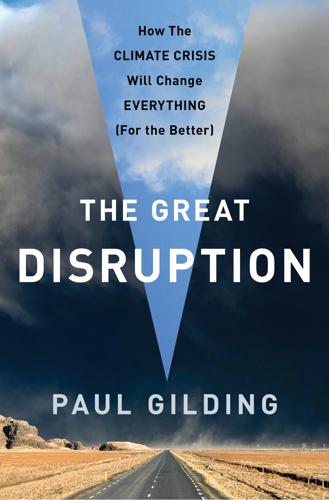
The Great Disruption: Why the Climate Crisis Will Bring on the End of Shopping and the Birth of a New World
by
Paul Gilding
Published 28 Mar 2011
While we cannot argue they are the cause of it, marketers exploit our tendency with very negative results, as argued in The Spirit Level, referring to Tim Kasser’s work: Young adults who focus on money, image and fame tend to be more depressed, have less enthusiasm for life and suffer more physical symptoms such as headaches and sore throats than others (The High Price of Materialism, MIT Press, 2002). Kasser believes that people tend to embrace material values when they are feeling insecure (retail therapy, anyone?). “Advertisements have become more sophisticated,” says Kasser. “They try to tie their message to people’s psychological needs. But it is a false link. It is toxic.” So as we circle all these issues, the noose begins to close around the neck of economic growth. While it is clear that more stuff doesn’t make us happy, most of us don’t believe this.
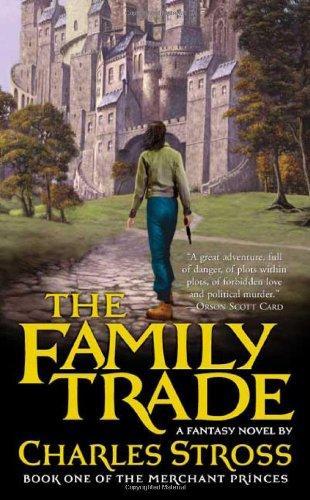
Family Trade
by
Stross, Charles
Published 6 Jan 2004
See if we can pitch it at Andy or Steve. Cover the angles. If we do this, they will turn nasty. Call FBI? 4. See if whatever I did last night is repeatable. Get evidence, then a witness. If it's me, seek help. If it's not me . . . 5. Get the story. That afternoon Miriam went shopping. It was, she figured, retail therapy. Never mind the job-hunting, there'd be time for that when she knew for sure whether or not she was going insane in some obscurely nonstandard manner. It was October, a pretty time of year to go hiking, but fall had set in and things could turn nasty at the drop of a North Atlantic depression.
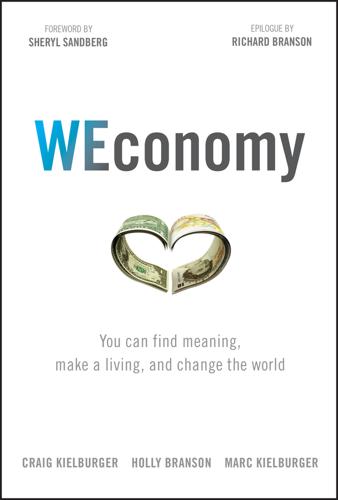
WEconomy: You Can Find Meaning, Make a Living, and Change the World
by
Craig Kielburger
,
Holly Branson
,
Marc Kielburger
,
Sir Richard Branson
and
Sheryl Sandberg
Published 7 Mar 2018
Head to the Mall When you think about charity, a shiny shopping mall is not the first thing that comes to mind. Malls are consumer magnets where handbags are encased in glass, multiplex theaters screen blockbusters, food courts fry up funnel cakes, and public restrooms display ads. But in fact, your disposable spending at the mall can go a long way toward doing good, and I don't just mean retail therapy. A Partnership on the Move International courier DHL Express offers free shipping for our Artisans products—from Africa and Ecuador, no less! Since the partnership began in 2012, DHL has shipped more than 5 million Artisans products, helping to connect Maasai mamas in Kenya to a greater market for their traditional beadwork.
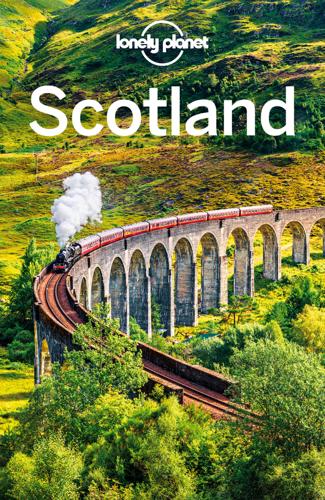
Lonely Planet Scotland
by
Lonely Planet
Stein Inn A lochside pub in Skye with fine ales, fresh seafood and a view to die for. Captain Flint’s Don’t plan on a quiet pint in this boisterous harbourside Shetland pub; a great place for a chat with locals. The Horse Shoe, Glasgow | NEIL SETCHFIELD / GETTY IMAGES © Shopping Scotland offers countless opportunities for shoppers to indulge in retail therapy, from designer frocks and shoes in city malls, to local art, handmade pottery and traditional textiles in Highland and island workshops. Glasgow The centre of Glasgow is a shopper’s paradise, with everything from designer boutiques to secondhand records. Barras Glasgow’s legendary flea market is a boisterous and intriguing place to browse for a taste of the city.
…
Inverness Museum & Art GalleryMUSEUM ( MAP GOOGLE MAP ; %01463-237114; www.inverness.highland.museum; Castle Wynd; h10am-5pm Tue-Sat Apr-Oct, noon-4pm Thu-Sat Nov-Mar)F Inverness Museum & Art Gallery has wildlife dioramas, geological displays, period rooms with historic weapons, Pictish stones and exhibitions of contemporary Highland arts and crafts. Victorian MarketMARKET ( MAP GOOGLE MAP ; Academy St; h9am-5pm Mon-Sat) If the rain comes down, you could opt for a spot of retail therapy in the Victorian Market, a shopping mall that dates from the 1890s and has rather more charm than its modern equivalents. Inverness CastleCASTLE ( MAP GOOGLE MAP ; Castle St) The hill above the city centre is topped by the picturesque Baronial turrets of Inverness Castle, a pink-sandstone confection dating from 1847 that replaced a medieval castle blown up by the Jacobites in 1746; it serves today as the Sheriff's Court.

Augmented: Life in the Smart Lane
by
Brett King
Published 5 May 2016
Success and the future of business is experiential and this is the time to learn how to create and cultivate meaningful experiences.” From X: The Experience When Business Meets Design by Brian Solis Depending on the day and our mood, shopping can be a necessity, a social event, a research project or an outlet for our emotions. Sometimes, we even call it “retail therapy”. On some days, we attack it head-on with a list and a single-minded focus. On other days, we might join friends at the mall and shop with complete abandon, arriving home with goods we neither needed nor wanted. Then there are days we plan for extensively, seeking recommendations, reading reviews, researching online and comparing prices.
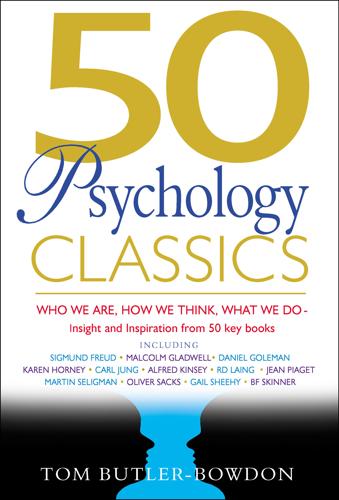
50 Psychology Classics
by
Tom Butler-Bowdon
Published 14 Oct 2007
Successful couples know this and therefore decide to accept each other “warts and all.” Happy marriages are unusually open and honest The truth is, plenty of good marriages shove a lot of issues “under the rug.” When many couples have a fight, the man storms off to watch television, and the woman rushes off for some retail therapy. A couple of hours later, the argument has blown over and they are pleased to see each other again. Many partnerships remain stable and satisfied without airing deep feelings. Gender differences are a big problem The fact that men are from Mars and women are from Venus may have an impact on marriage problems, Gottman notes, but it does not actually cause them.
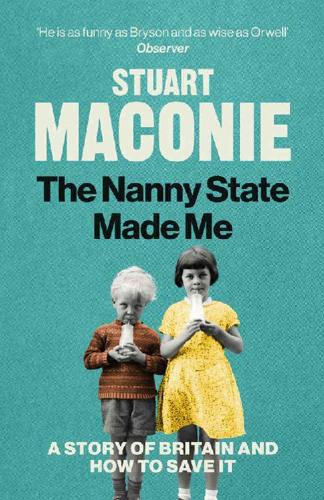
The Nanny State Made Me: A Story of Britain and How to Save It
by
Stuart Maconie
Published 5 Mar 2020
The C&A will doubtless be a Primark now and I bet you couldn’t get a stuffed paratha from a street vendor back in 1973 like you can today. But the principle is the same, shopping as mass recreation, and the accents heard are that same rich, unusual mixture of Brummie drone and Archers burr. On this warm, balmy afternoon much of Telford has decided that the best way to spend it is indoors engaged in retail therapy with the listless ennui of the flâneur rather than the dedication and purpose of the bargain hunter or housewife. And we have become obsessed with slogans and messages on our clothes, bodies and accessories. Men of fifty who would once have sported a uniform of dark suits, sports jackets or cardigan now wear baggy shorts and shirts imploring me to Just Do It or reminding me that You Only Live Once (YOLO).
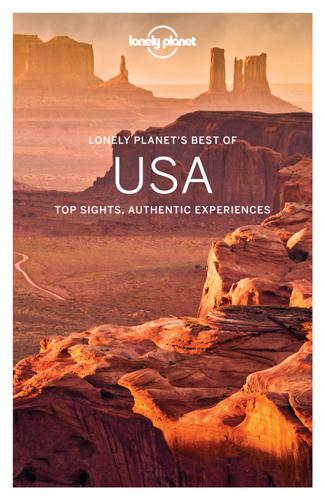
Lonely Planet's Best of USA
by
Lonely Planet
Hollywood & Griffith Park 1 Sights 1 Dolby Theatre C2 2 Egyptian Theatre D3 3 Griffith Observatory E2 4 Griffith Park F1 5 Griffith Park Merry-Go-Round F1 6 Griffith Park Southern Railroad F1 7 Hollywood Forever Cemetery D3 8 Hollywood Sign D1 9 Hollywood Walk of Fame C3 10 Los Angeles County Museum of Art C4 11 Page Museum & La Brea Tar Pits C4 TCL Chinese Theatre (see 1) 2 Activities, Courses & Tours 12 Bike-rental Concession F1 13 Paramount Pictures D3 TMZ Tours (see 1) 5 Eating 14 Oaks Gourmet D2 15 Original Farmers Market C4 16 Pizzeria & Osteria Mozza C3 Ray’s (see 10) 6 Drinking & Nightlife 17 Abbey B3 18 Akbar F3 19 Bar Marmont B3 20 Nic’s Beverly Hills A4 21 No Vacancy D2 3 Entertainment American Cinematheque (see 2) 22 Greek Theatre E2 23 Hollywood Bowl D2 7 Shopping 24 Melrose Avenue C3 25 Robertson Boulevard B4 26 Rodeo Drive A4 7 SHOPPING Although Beverly Hills’ Rodeo Drive is the most iconic shopping strip in LA, the city abounds with other options for retail therapy. Fashionistas and their paparazzi piranhas flock to Mid-City’s Robertson Blvd. You also might spot celebs shopping on nearby 3rd St. Unusual and unique local boutiques line Main St in Santa Monica, Venice’s Abbot Kinney Blvd and Sunset Blvd in Silver Lake. Rodeo Drive Shopping Map Google Map The city’s most famous shopping street, spanning three glittery blocks in Beverly Hills.
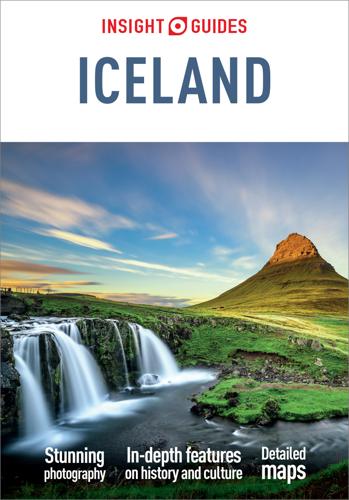
Insight Guides Iceland
by
Insight Guides
Published 6 Dec 2024
S Shopping Icelandic products are perfect for those who appreciate quality and smart design – if your credit card can take the strain. Most shops in Reykjavík are small, one-off boutiques, located within a relatively small area centred around Laugavegur. If the weather is bad, two large shopping malls (Kringlan and Smáralind) on the outskirts of the city offer under-cover retail therapy. Good buys include books, unusual food (salted liquorice, dried fish, a bottle of brennivín), music from Iceland’s independent record labels, traditional handknitted hats and sweaters (beware of ‘made in China’ imposters!) or cutting-edge outdoor clothing, skin-care products and beautifully made homeware.
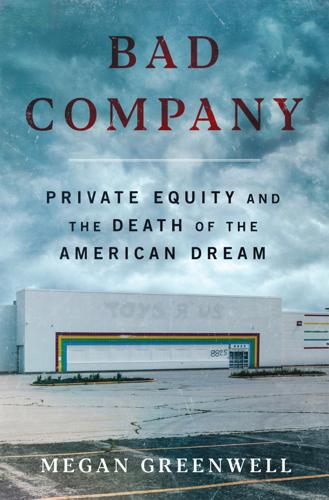
Bad Company
by
Megan Greenwell
Published 18 Apr 2025
In one short speech outside a KKR office tower, Liz told a group of supporters, “I have given my whole self to Toys R Us. I wish Toys R Us treated us the way I treat my team.” At the same event, Michelle spoke about her customers. “I believe that our relationships made Toys R Us and Babies R Us the company it was. My team members and I provided immense emotional support, and gave a new meaning to ‘retail therapy’ because we were there to listen and to offer vital support.” Henry’s schedule didn’t allow him to care for the couple’s youngest child, Daniyel, by himself, so Liz would often take him along when she traveled. In one photo, Daniyel and a girl with braided pigtails are seen from behind, their arms slung over each other’s shoulders in front of a San Francisco office tower—co-owned by Vornado Realty Trust and the Trump Organization—where KKR leased space.
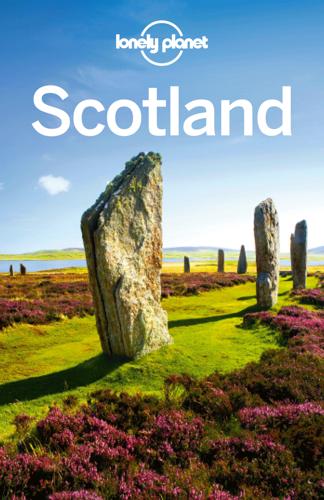
Scotland Travel Guide
by
Lonely Planet
What’s more, it’s got sensational views across the water to Skye (Click here ) Horse Shoe This place – all real ales and polished brass – is Glasgow’s best traditional pub (Click here ) Stein Inn A lochside pub in Skye with fine ales, fresh seafood and a view to die for (Click here ) Captain Flint’s Don’t plan on a quiet pint in this boisterous harbourside Shetland pub; a great place for a chat with locals ( Click here ) Shopping Scotland offers countless opportunities for shoppers to indulge in retail therapy, from designer frocks and shoes in city malls, to local art, handmade pottery and traditional textiles in Highland and island workshops. Glasgow The centre of Glasgow is a shopper’s paradise, with everything from designer boutiques to second-hand records ( Click here ) Barras Glasgow’s legendary flea market is a boisterous and intriguing place to browse for a taste of the city (Click here ) Edinburgh Competes with Glasgow as the country’s shopping epicentre, with its Harvey Nicks, malls, cashmere, tartan and quirky little gift shops (Click here ) Wigtown An amazing array of second-hand and specialist bookshops cluster around the square in this small, out-of-the-way village ( Click here ) Isle of Skye It seems as if every second cottage on Skye is home to a workshop or an artist’s studio, making the island a great place to find quality handmade arts and crafts (Click here ) Classic Walks Scotland’s wild, dramatic scenery and varied landscape has made hiking a hugely popular pastime.
…
Inverness Museum & Art Gallery MUSEUM (www.inverness.highland.museum; Castle Wynd; 10am-5pm Mon-Sat) Between the castle and the tourist office is Inverness Museum & Art Gallery, with wildlife dioramas, geological displays, period rooms with historic weapons, Pictish stones and contemporary Highland arts and crafts. Victorian Market MARKET If the rain does come down, you could opt for a spot of retail therapy in the Victorian Market, a shopping mall that dates from the 1890s and has rather more charm than its modern equivalents. Inverness Castle CASTLE The hill above the city centre is topped by the picturesque Baronial turrets of Inverness Castle, a pink-sandstone confection dating from 1847 that replaced a medieval castle blown up by the Jacobites in 1746; it serves today as the Sheriff’s Court.
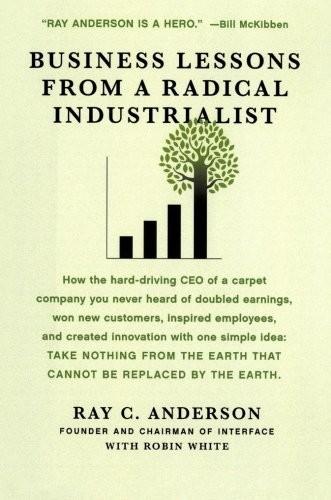
Business Lessons From a Radical Industrialist
by
Ray C. Anderson
Published 28 Mar 2011
I think it stems from our dangerous faith in what is clearly a broken industrial model that is yoked to our infatuation with stuff—namely, consumerism. I use the word infatuation deliberately, as in “a state of mind characterized by intrusive thinking, longing, uncertainty, hope, misperception, fantasies, and passion.” Here’s an example: I read the other day about a woman who went to the mall for some “retail therapy” and used her credit card to buy a pair of shoes. They cost about forty dollars—a bargain. But at the end of the month, after paying her mortgage, her health insurance, her food, gasoline, and utilities, she didn’t have enough to go around. A few months later, her credit card company notified her that those forty-dollar shoes, with all the late fees and penalties added in, were now going to cost her twelve hundred dollars.
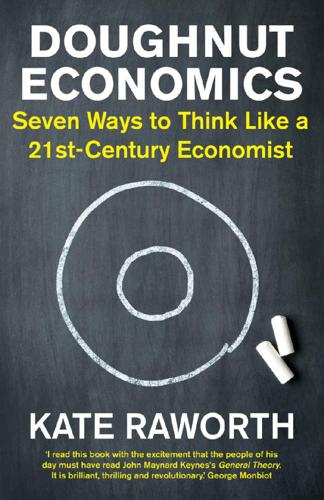
Doughnut Economics: Seven Ways to Think Like a 21st-Century Economist
by
Kate Raworth
Published 22 Mar 2017
Despite being far richer than kings of old, we are too easily trapped on a treadmill of consumerism, continually searching for identity, connection and self-transformation through the things that we buy. Keeping up with the Joneses has us forever chasing the promise of that next purchase. As we saw in Chapter 3, Freud’s nephew Edward Bernays realised that his uncle’s psychotherapy opened up a very lucrative world of retail therapy. His method of persuasion – tastefully named ‘public relations’ – transformed marketing worldwide and, over the course of the twentieth century, embedded consumer culture as a way of life. As the media theorist John Berger put it in his book, Ways of Seeing, ‘publicity is not merely an assembly of competing messages: it is a language in itself which is always being used to make the same general proposal … it proposes to each of us that we transform ourselves, and our lives, by buying something more’.68 Do we have a chance of shaking off this twentieth-century inheritance?

Lonely Planet Best of Spain
by
Lonely Planet
Published 1 Nov 2016
The Old City tour explores the Roman and medieval history of Barcelona, visiting highlights in the Ciutat Vella. The Gaudí tour takes in the great works of Modernista Barcelona; it involves two trips on the metro. Also has ghostly evening tours and a Kids & Family walking tour. Check the website for departure times. 7 Shopping If your doctor has prescribed an intense round of retail therapy to deal with the blues, then Barcelona is the place. Across the Ciutat Vella (the Barri Gòtic, El Raval and La Ribera), L’Eixample and Gràcia is spread a thick mantle of boutiques, historic shops, original one-off stores, gourmet corners, wine dens and more designer labels than you can shake your gold card at.
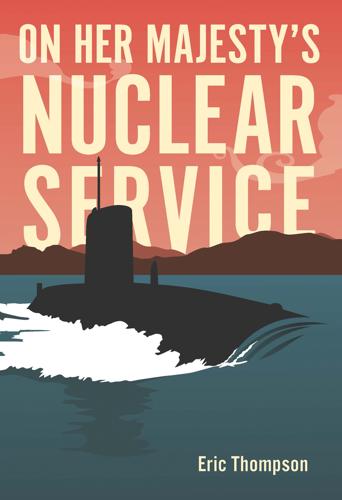
On Her Majesty's Nuclear Service
by
Eric Thompson
Published 18 Apr 2018
There was no obvious sign of extreme poverty or starvation but we had entered a different world, a police state, a barren land devoid of freedom in which even members of one’s own family could not be trusted. People were shot simply for trying to move from one side of the city to the other. We were even taken to the supposedly prestigious GUM department store, the high temple of Soviet retail therapy. Compared with Harrods, it seemed more like a government surplus store in downtown Glasgow. We had gone back seventy years into the world of the Bolsheviks, to a society living in a war economy. We also visited the Berlin Air Traffic Control Centre, still operated by the four victorious military powers as if the Second World War had just ended.
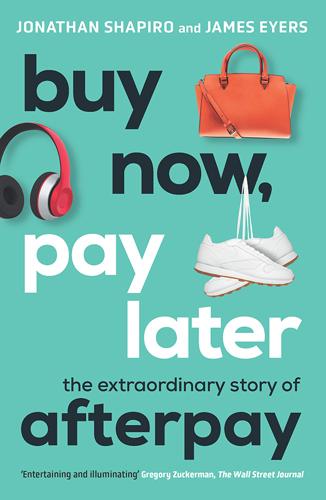
Buy Now, Pay Later: The Extraordinary Story of Afterpay
by
Jonathan Shapiro
and
James Eyers
Published 2 Aug 2021
Economists overloaded with information surmised that household incomes would be materially higher even than before the crisis. For Afterpay and other buy now, pay later businesses, that was undeniably good news. Although Afterpay Day in 2020 was meant to mark a moment of solidarity among retailers, it actually helped birth an online retail boom. Stuck at home and in need of retail therapy, many Australians tried buying things online for the first time. In the big investment firms, risk-averse bank analysts who doubted the viability of Afterpay’s model were finally gaining the upper hand in their long-running intellectual stoush with their tech peers. This was the crisis that would test Afterpay.
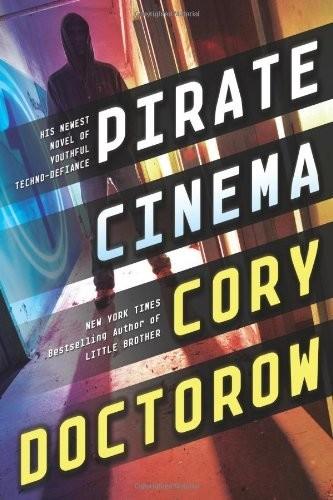
Pirate Cinema
by
Cory Doctorow
Published 2 Oct 2012
We got on the tube and headed back to the Zeroday, absolutely drunk on delight. * * * * * * Down and out in the commercial interlude What breathtaking precision! In and out, no messing about, everyone gets away clean. Makes you want to take a victory lap, huh? Why not celebrate with a little (ahem) retail therapy, by patronizing one of the fine independent bookstores across the land, or getting a book sent straight to you, or downloaded to your ebook reader (without any DRM encumbrance). Or you could share the joy by donating a copy to a school or library. USA: Amazon Kindle (DRM-free) Barnes and Noble Nook (DRM-free) Google Books (DRM-free) Apple iBooks (DRM-free) Kobo (DRM-free) Amazon Booksense (will locate a store near you!)
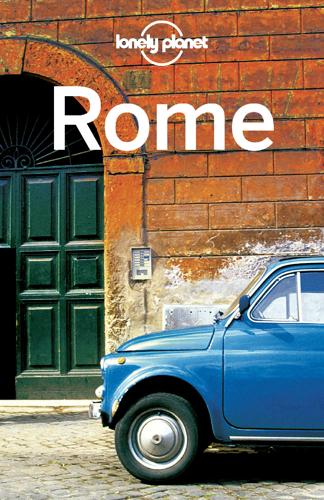
Rome
by
Lonely Planet
Best Classical Venues Auditorium Parco della Musica (Click here ) Teatro dell’Opera di Roma (Click here ) Terme di Caracalla (Click here) Auditorium Conciliazione (Click here ) Best for Live Gigs Circolo degli Artisti (Click here ) Fanfulla 101 (Click here ) Villaggio Globale (Click here ) Micca Club (Click here ) Best Theatres Silvano Toti Globe Theatre (Click here ) Ostia Antica (Click here ) Teatro Argentina (Click here ) Teatro Palladium (Click here ) Teatro Valle (Click here ) Best Festivals Estate Romana (Click here ) Lungo il Tevere (Click here) Concerti dei Tempietto (Click here ) Roma Incontra il Mondo (Click here ) Shopping Classic style at Davide Cenci (Click here) PAOLO CORDELLI / LONELY PLANET IMAGES © Rome’s shops, studios and boutiques make retail therapy diverting enough to distract you from the incredible cityscape. Wander the backstreets and you’ll find yourself glancing into dusty workshops: framers and furniture restorers. Narrow lanes are dotted by beautiful boutiques and department stores have an old-style glamour. That’s not to say that there are no chain stores in Rome, but the city is still dominated by the individual shop.
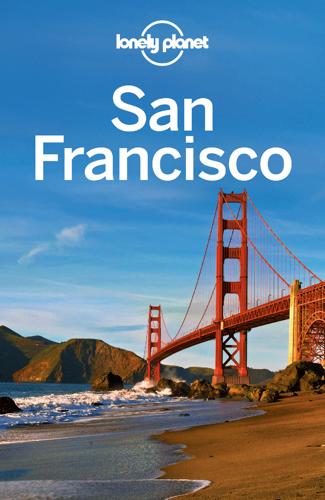
San Francisco
by
Lonely Planet
Don’t Miss… » Haight Flashback walking tour » Mysterious 4:20 clock at Haight & Ashbury Sts » Anarchists of the Americas mural at Bound Together Anarchist Book Collective » Lower Haight bars Practicalities » Haight St btwn Fillmore & Stanyan Sts » Haight St Lower & Upper Haight Since the ’60s, Haight St has divided into two major splinter factions, divided by a Divisadero St strip of indie boutiques, trendy bars and restaurants. The Upper Haight specializes in potent coffee, radical literature and retail therapy for rebels, while the Lower Haight has better bars, more economic and ethnic diversity, and a pot-club mellow occasionally disrupted by gang activity northeast of Fillmore and Haight Sts. Haight St has its share of grit, but it remains a magnet. Hayes Valley Sights 1 Hayes Valley Farm B2 2 Zen Center B3 Eating 3 Bar JulesA2 4 Chantal Guillon Macarons B2 5 JardiniéreC1 6 NojoC1 7 Suppenküche A2 8 Zuni Cafe C3 Drinking & Nightlife 9 Hôtel Biron C3 10 Martuni's C4 11 Momi Toby's Revolution Café A2 12 Pisco Latin Lounge B4 Entertainment 13 Rebel Bar C4 14 SF Lesbian Gay Bisexual Transgender Community CenterB4 Shopping 15 Fiddlesticks B1 16 Flax C4 17 Flight 001 B2 18Gangs of San FranciscoC3 19 Gimme Shoes C1 20 Green Arcade C3 21 Isotope C2 22 Lotus Bleu C1 23 MAC C1 24 Miette B2 25 Nancy Boy C1 26 Peace Industry A2 27 Polanco C1 28 ReliquaryB1 29 Residents Apparel GalleryB1 Sleeping 30Sleep Over SauceC3 31 Hayes Valley InnC1 32ParsonnageB4 The Haight Top Sights Alamo SquareG3 Sights 1 Buena Vista Park E6 2 Grateful Dead House C6 Eating 3 Axum Cafe G5 4 Bar Crudo E3 5 Cole Valley Cafe B6 6 Escape from New York Pizza A6 7 Little ChihuahuaF4 8 Magnolia BrewpubC5 9 Ragazza F4 10 Rosamunde Sausage GrillG5 11 Three Twins Ice CreamH5 12 Ziryab F3 Drinking & Nightlife 13 Alembic B5 14 Aub Zam Zam B6 15 Coffee to the People C5 16 Madrone F4 17 Noc Noc H5 18 ToronadoH5 19 Uva Enoteca G4 20 Vinyl Wine Bar F4 Entertainment 21 Booksmith B5 22 Independent F3 Shopping 23 Amoeba Music A6 24 Bound Together Anarchist Book Collective D5 25 Braindrops D5 26 Goorin Brothers Hats C5 27 Loved to Death B6 28 Loyal Army ClothingB5 29 Piedmont Boutique C5 30 Prairie CollectiveF5 31 Revolver H5 32 SFO Snowboarding & FTC Skateboarding B5 33 Upper Playground H5 34 WastelandB5 35 Xapno G5 Sports & Activities 36 Aqua Surf Shop B5 37 Avenue Cyclery A6 38 Koret Pool A3 Sleeping 39Chateau TivoliG2 40Grove InnH3 41Metro HotelF4 42Red Victorian Bed, Breakfast & ArtB6 43Stanyan Park HotelA6 The Haight & Hayes Valley Eating | Drinking & Nightlife | Entertainment | Shopping | Sports & Activities Sights Weekends are quite a scene in the Upper Haight, with hippies reliving their glory days trailed by teenage relatives pretending not to know them, suburban punks wearing too much aftershave and Harajuku hipsters dragging suitcases full of prime vintage attire for resale in Tokyo.
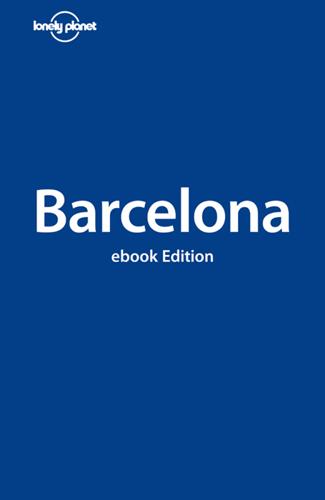
Barcelona
by
Damien Simonis
Published 9 Dec 2010
PLAZA Map Fashion LEFTIES Map Fashion CASTELLÓ Map Music TERANYINA Map Textiles LA RIBERA ANTICH Map Accessories OLD CURIOSITY SHOP Map Antiques & Bric-A-Brac GALERIA MAEGHT Map Art CAFÉ DE LA PRINCESA Map Boutique EL MAGNÍFICO Map Coffee VILA VINITECA Map Drink COQUETTE Map Fashion CUSTO BARCELONA Map Fashion GAMAYA Map Fashion OUTLET DEL BORN Map Fashion CASA GISPERT Map Food HOFMANN PASTISSERIA Map Food LA BOTIFARRERIA Map Food OLISOLIVA Map Food EL REY DE LA MAGIA Map Magic NU SABATES Map Shoes & Accessories PORT VELL & LA BARCELONETA MAREMÀGNUM Map Shopping Centre L’EIXAMPLE EL BULEVARD DELS ANTIQUARIS Map Antiques ALTAÏR Map Books CASA DEL LLIBRE Map Books COME IN Map Books LAIE Map Books CACAO SAMPAKA Map Chocolate NORMA COMICS Map Comics EL CORTE INGLÉS Map Department Store CUBIÑA Map Design VINÇON Map Design XAMPANY Map Drink ADOLFO DOMÍNGUEZ Map Fashion ANTONIO MIRÓ Map Fashion ARMAND BASI Map Fashion GI JOE Map Fashion LOEWE Map Fashion PURIFICACIÓN GARCÍA Map Fashion MANGO Map Fashion & Accessories ELS ENCANTS VELLS Map Flea Market FLORISTERÍA NAVARRO Map Florist JOAN MURRIÀ Map Food NOSOTRAOS Map Gay & Lesbian BAGUÉS Map Jewellery SERGIO ARANDA Map Jewellery REGIA Map Perfume CAMPER Map Shoes FARRUTX Map Shoes GRÀCIA & PARK GÜELL HIBERNIAN Map#x00A0;#x00A0;#x00A0;#x00A0;#x00A0;Books ÉRASE UNA VEZ Map Fashion RED MARKET Map Fashion LA ZONA ALTA JAMIN PUECH Map Accessories LAVINIA Map Drink BEA BEA Map Fashion SIETE BESOS Map Fashion LA BOTIGA DEL BARÇA Map Souvenirs * * * * * * top picks Caelum (Click here) Papabubble (Click here) Custo Barcelona (Click here) Jamin Puech (Click here) Vila Viniteca (Click here) Antonio Miró (Click here) Cubiña (Click here) Herboristeria del Rei (Click here) Joan Murrià (Click here) Vinçon (Click here) * * * What’s your recommendation? www.lonelyplanet.com/barcelona If your doctor has prescribed an intense round of retail therapy to deal with the blues, then Barcelona is the place. Across Ciutat Vella (Barri Gòtic, El Raval and La Ribera), L’Eixample and Gràcia is spread a thick mantle of countless boutiques, historic shops, original one-off stores, gourmet corners, wine dens and more designer labels than you can shake your gold card at.
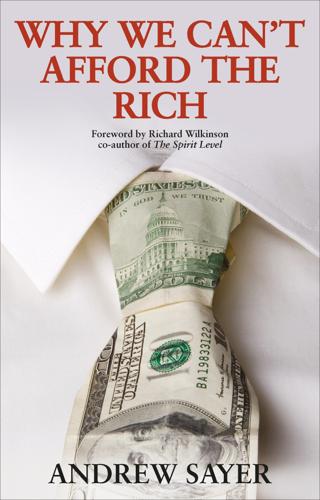
Why We Can't Afford the Rich
by
Andrew Sayer
Published 6 Nov 2014
The American jibe ‘if you’re so clever how come you ain’t rich?’ sums up this capitalist consumer culture. As I showed in Part Two, structural economic inequalities prevent many people from contributing fully to society and being able to enjoy the recognition and sense of worth that comes from that. So it’s not surprising that many see consumption – retail therapy – as a way of compensating. Yes, many things we buy may enhance our lives too, enabling us to do things we couldn’t do otherwise – from mobile phones, online videos and musical instruments, to meals out and visits to the cinema. That’s not the issue, this is not an argument for the hair shirt.
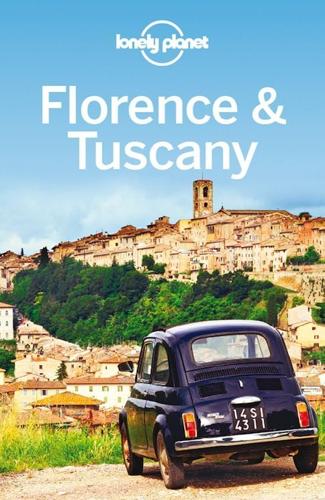
Lonely Planet Florence & Tuscany
by
Lonely Planet
,
Virginia Maxwell
and
Nicola Williams
Published 1 Dec 2013
Today, the city is known for its churches, museums and cultural life. It’s also known for its shopping – Arentini (residents of Arezzo) flock to the huge antiques fair held in Piazza Grande on the first weekend of every month, and love nothing more than combining the passeggiata with a spot of upmarket retail therapy on Corso Italia. Arezzo Top Sights 1 Cappella Bacci B3 2 Duomo di Arezzo C2 3 Pieve di Santa Maria C2 Sights Basilica di San Francesco (see 1) 4 Casa Museo di Ivan Bruschi C2 5 Casa Vasari B1 6 Fortezza Medicea D2 7 Giardino del Prato D2 8 Museo Archeologico Nazionale 'Gaio Cilnio Mecenate'B4 9 Palazzo della Fraternità dei Laici C2 10 Palazzo delle Logge Vasariane C2 11 Piazza Grande C3 Sleeping 12 Graziella Patio Hotel C3 13 La Corte Del Re C3 14 Palazzo dei Bostoli C3 Eating 15 La Bottega di Gnicche C3 16 La Torre di Gnicche D3 17 LAB Pasticceria C3 18 Trattoria del Leone B3 Drinking & Nightlife 19 Caffè dei Costanti B2 Sights & Activities Cappella Bacci CHURCH MAP GOOGLE MAP ( 0575 35 27 27; www.pierodellafrancesca.it; Piazza San Francesco; adult/reduced €8/5; 9am-6.30pm Mon-Fri, to 5.30pm Sat & 1-5.30pm Sun May-Aug; 9am-5.30pm Mon-Fri, to 5pm Sat & 1-5pm Sun Sep-Apr) Gracing the apse of the 14th-century Basilica di San Francesco MAP GOOGLE MAP is the Capella Bacci, a chapel housing one of the greatest works of Italian art, Piero della Francesca’s fresco cycle of the Legend of the True Cross.
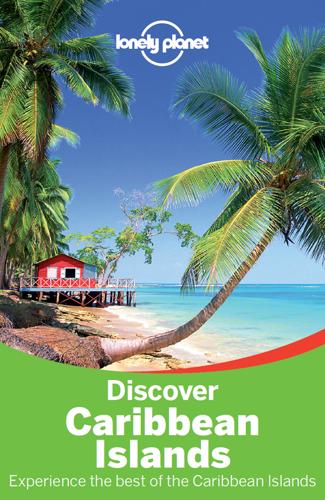
Discover Caribbean Islands
by
Lonely Planet
Grand-Rivière (Click here), Martinique BRUNO DE HOGUES/GETTY IMAGES © Sint Maarten to Bonaire Discover the Dutch side of the Caribbean The French provide the perfect accent on this Dutch adventure that begins in the northeast and ends in the dry southwest. Along the way enjoy some of the region’s best beauty above and below the water. St-Martin/Sint Maarten (Click here) On St-Martin/Sint Maarten, head down to Philipsburg, which allows time for some retail therapy. Bounce over to the French side of the island and hang out in Grand Case, where your dining choices range from beach-shack casual to fine-French bistro. For beach time try the local favorite Friar’s Bay. Or head further afield to Baie Longue or Le Galion. When you start feeling antsy, hit the lively bar scene at Maho Beach.

Consumed: How Markets Corrupt Children, Infantilize Adults, and Swallow Citizens Whole
by
Benjamin R. Barber
Published 1 Jan 2007
In the United Kingdom, the website www.addictions.co.uk cites a 1998 Mintel marketing study that reports “almost one in four Britons admits being addicted to shopping,” with “twice as many women as men” saying that they “frequently set off on a shopping expedition even though they had nothing specific in mind to buy.”60 This help site says shopping addiction is more than just a kind of “retail therapy” in which people treat other disorders and “unpleasant realities” with the buzz that shopping can bring. Real shopping addiction, however, results in an “overwhelming sense of shame, remorse and guilt accompanied by feelings of hopelessness and helplessness,” and leads not only “to despair” but often to still “more addictive behaviour resulting in more self destructive feelings.”
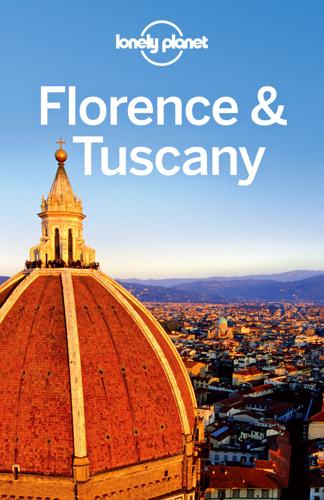
Florence & Tuscany
by
Lonely Planet
A free republic as early as the 10th century, it supported the Ghibelline cause in the violent battles between pope and emperor and was eventually subjugated by Florence in 1384. Today, the city is known for its churches, museums and shopping – Arentini (residents of Arezzo) flock to the huge antiques fair held in Piazza Grande on the first weekend of every month, and love nothing more than combining the passeggiata with a spot of upmarket retail therapy on Corso Italia. The birthplace of two great Renaissance figures – the poet Petrarch and the painter, architect and art historian, Giorgio Vasari – it has a long and very proud reputation as an important cultural centre. TERRE DI AREZZO The Arezzo region boasts one DOCG and five DOC wines: Chianti Colli Arentini DOCG, Vinsanto del Chianti Colli Arentini DOC, Vinsanto del Chianti Colli Arentini Occhio di Pernice DOC, Valdichiana DOC, Cortona DOC and Pietraviva DOC.
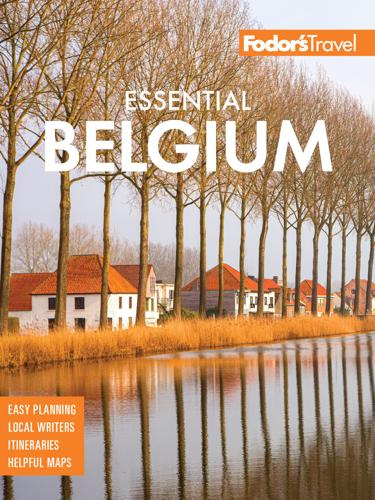
Fodor's Essential Belgium
by
Fodor's Travel Guides
Published 23 Aug 2022
Stadsfeestzaal MALL | Built in 1908 as an exhibitions and events space, the Stadsfeestzaal was gutted by a major fire in 2000. Now fully restored, it houses a lively shopping mall across 40 shops. Clothing stores include Urban Outfitters, Green Ice, and COS. Even if you’re not in the mood for retail therapy, it’s worth dropping by just to marvel at the spectacular neoclassical architecture. EMeir 78, Meir P03/202–3100 wstadsfeestzaal.com. DIAMONDS The heart of the city’s diamond industry is in and around Appelmansstraat, near the Centraal Station. Here merchants from the world over have dealt in diamonds for 500 years.
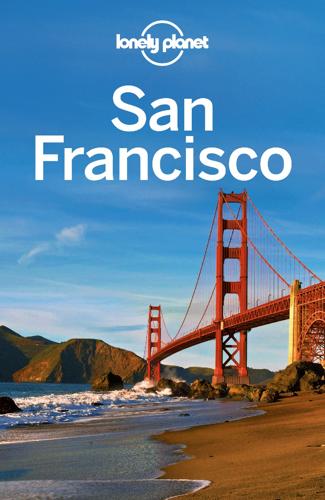
San Francisco
by
Lonely Planet
Don’t Miss… » Haight Flashback walking tour » Mysterious 4:20 clock at Haight & Ashbury Sts » Anarchists of the Americas mural at Bound Together Anarchist Book Collective » Lower Haight bars Practicalities » Haight St btwn Fillmore & Stanyan Sts » Haight St Lower & Upper Haight Since the ’60s, Haight St has divided into two major splinter factions, divided by a Divisadero St strip of indie boutiques, trendy bars and restaurants. The Upper Haight specializes in potent coffee, radical literature and retail therapy for rebels, while the Lower Haight has better bars, more economic and ethnic diversity, and a pot-club mellow occasionally disrupted by gang activity northeast of Fillmore and Haight Sts. Haight St has its share of grit, but it remains a magnet. Hayes Valley Sights 1 Hayes Valley Farm B2 2 Zen Center B3 Eating 3 Bar JulesA2 4 Chantal Guillon Macarons B2 5 JardiniéreC1 6 NojoC1 7 Suppenküche A2 8 Zuni Cafe C3 Drinking & Nightlife 9 Hôtel Biron C3 10 Martuni's C4 11 Momi Toby's Revolution Café A2 12 Pisco Latin Lounge B4 Entertainment 13 Rebel Bar C4 14 SF Lesbian Gay Bisexual Transgender Community CenterB4 Shopping 15 Fiddlesticks B1 16 Flax C4 17 Flight 001 B2 18Gangs of San FranciscoC3 19 Gimme Shoes C1 20 Green Arcade C3 21 Isotope C2 22 Lotus Bleu C1 23 MAC C1 24 Miette B2 25 Nancy Boy C1 26 Peace Industry A2 27 Polanco C1 28 ReliquaryB1 29 Residents Apparel GalleryB1 Sleeping 30Sleep Over SauceC3 31 Hayes Valley InnC1 32ParsonnageB4 The Haight Top Sights Alamo SquareG3 Sights 1 Buena Vista Park E6 2 Grateful Dead House C6 Eating 3 Axum Cafe G5 4 Bar Crudo E3 5 Cole Valley Cafe B6 6 Escape from New York Pizza A6 7 Little ChihuahuaF4 8 Magnolia BrewpubC5 9 Ragazza F4 10 Rosamunde Sausage GrillG5 11 Three Twins Ice CreamH5 12 Ziryab F3 Drinking & Nightlife 13 Alembic B5 14 Aub Zam Zam B6 15 Coffee to the People C5 16 Madrone F4 17 Noc Noc H5 18 ToronadoH5 19 Uva Enoteca G4 20 Vinyl Wine Bar F4 Entertainment 21 Booksmith B5 22 Independent F3 Shopping 23 Amoeba Music A6 24 Bound Together Anarchist Book Collective D5 25 Braindrops D5 26 Goorin Brothers Hats C5 27 Loved to Death B6 28 Loyal Army ClothingB5 29 Piedmont Boutique C5 30 Prairie CollectiveF5 31 Revolver H5 32 SFO Snowboarding & FTC Skateboarding B5 33 Upper Playground H5 34 WastelandB5 35 Xapno G5 Sports & Activities 36 Aqua Surf Shop B5 37 Avenue Cyclery A6 38 Koret Pool A3 Sleeping 39Chateau TivoliG2 40Grove InnH3 41Metro HotelF4 42Red Victorian Bed, Breakfast & ArtB6 43Stanyan Park HotelA6 The Haight & Hayes Valley Eating | Drinking & Nightlife | Entertainment | Shopping | Sports & Activities Sights Weekends are quite a scene in the Upper Haight, with hippies reliving their glory days trailed by teenage relatives pretending not to know them, suburban punks wearing too much aftershave and Harajuku hipsters dragging suitcases full of prime vintage attire for resale in Tokyo.

Berlin
by
Andrea Schulte-Peevers
Published 20 Oct 2010
* * * top picks MITTE – SCHEUNENVIERTEL Heckmann Höfe Museum für Naturkunde (opposite) Neue Synagoge (opposite) * * * Which is to say that the Scheunenviertel reveals its greatest charms in the village-like labyrinth of lanes off Oranienburger Strasse. Embark on an aimless wander and you’ll find surprises lurking around every corner: here an idyllic courtyard or intriguing public sculpture, there a bleeding-edge gallery, a cosy watering hole or 19th-century ballroom. Retail therapy too gets a unique Berlin twist here with edgy and stylish boutiques that are light years away from high-street conformity. Alte Schönhauser Strasse, Neue Schönhauser Strasse, Gipsstrasse and Rosa-Luxemburg-Strasse are particularly promising for fashion. Art-ficionados, meanwhile, still flock to Auguststrasse, which shepherded emerging local artists to fame in the 1990s but has since gone rather mainstream and expensive; edgier stuff, meanwhile, is rocking the galleries along Brunnenstrasse between Torstrasse and Bernauer Strasse.
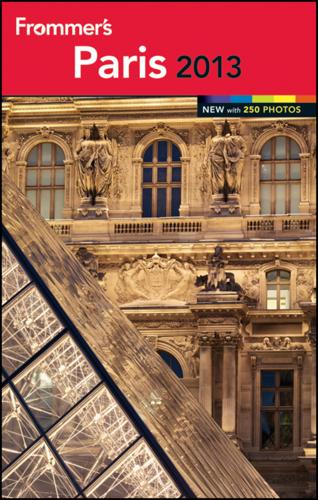
Frommer's Paris 2013
by
Kate van Der Boogert
Published 24 Sep 2012
Opéra & Grands Boulevards (9e) Two of Paris’s major department stores are located just above Opéra, and they set the tone for this dynamic shopping district which extends west along the tree-lined boulevard Haussmann and east up to the “Grands Boulevards” Metro station. Best For: Travelers looking for some retail therapy and proximity to monuments (Opéra). Drawbacks: Can be high-voltage. Very Expensive Banke Hotel 4S* In the tradition of Derby Hotels Collection, this luxurious boutique hotel is art oriented. Works of art adorn both the public rooms and the accommodations. The building dates from the Belle Époque–era and contains a majestic hall from that time, which is embellished with a great mosaic.
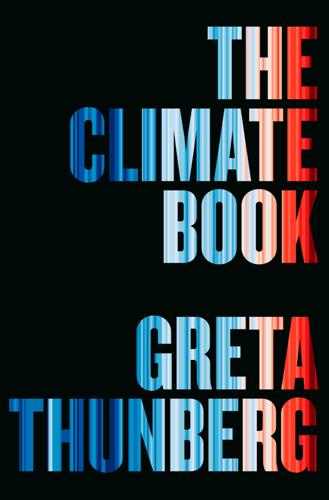
The Climate Book: The Facts and the Solutions
by
Greta Thunberg
Published 14 Feb 2023
‘Mass production is profitable only if its rhythm can be maintained,’ wrote Edward Bernays in his classic 1928 book Propaganda, arguing that business ‘cannot afford to wait until the public asks for its product; it must maintain constant touch, through advertising and propaganda . . . to assure itself the continuous demand which alone will make its costly plant profitable’. Fascinatingly, Bernays – who invented the ‘public relations’ industry – was the nephew of Sigmund Freud, and he realized that the ideas underlying psychotherapy could be turned into very lucrative retail therapy if he could connect people’s deepest desires to the latest products on sale. In the 1920s he convinced women (on behalf of the American Tobacco Corporation) that cigarettes were their ‘torches of freedom’, while persuading the nation (on behalf of the Beech-Nut Packing Company’s pork department) that bacon and eggs were the ‘hearty’ all-American breakfast.

Sweden
by
Becky Ohlsen
Published 19 Jun 2009
* * * Tjallamalla (Map; 640 78 47; www.tjallamalla.com; Bondegatan 46; noon-6pm Mon-Fri, noon-4pm Sat) Raid the racks at this fashion icon for rookie designers like Hot Sissy, Papagaio and organic Malmö streetwear label, Kärleksgatan. Graduates from Stockholm’s prestigious Beckmans College of Design School sometimes sell their collections here on commission. For your all-in-one retail therapy, scour department-store giant Åhléns (Map; 676 60 00; Klarabergsgatan 50) or its upmarket rival NK (Map; 762 80 00; Hamngatan 12-18). Return to beginning of chapter GETTING THERE & AWAY Air Stockholm’s main airport, Stockholm-Arlanda (797 60 00; www.arlanda.se, www.lfv.se), is 45km north of the city centre and can be reached from central Stockholm by both bus and express train (Click here).

Sweden Travel Guide
by
Lonely Planet
You'll find top-name brands and several nice cafes, and the basement levels are great for stocking up on souvenirs and gourmet groceries. Around Christmas, check out its inventive window displays. ÅhlénsDEPARTMENT STORE ( MAP GOOGLE MAP ; %08-676 60 00; Klarabergsgatan 50; h10am-9pm Mon-Fri, 10am-7pm Sat, 11am-7pm Sun; dT-Centralen) For your all-in-one retail therapy, scour department-store giant Åhléns. It's especially good for housewares, bedding and Swedish-made items to bring home as gifts. E TorndahlDESIGN ( MAP GOOGLE MAP ; www.etorndahl.se; Västerlånggatan 63; h10am-8pm; dGamla Stan) This spacious design shop, run by the women of the Torndahl family since 1864, is a calm and civilised oasis on busy Västerlånggatan, offering jewellery, textiles and clever Scandinavian household objects.
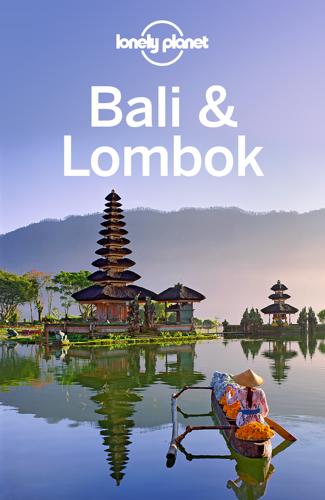
Bali & Lombok Travel Guide
by
Lonely Planet
The retail strip branches off into the prime real estate of Jl Kayu Aya and Jl Kayu Jati while continuing north on Jl Raya Kerobokan into Kerobokan itself. Of course, this being Bali, try not to get too overwhelmed by the glitz or you'll step into one of the yawning pavement caverns that persist amid newly added sidewalks. If you need help navigating this retail paradise, check out the 'Retail Therapy' feature in the Bali Advertiser (www.baliadvertiser.biz). It's written by the singularly named Marilyn (www.retailtherapybali.com), who brings a veteran retailer's keen eye to the local scene and offers custom shopping tours. Accessories oVivacquaACCESSORIES ( MAP GOOGLE MAP ; %0361-736212; Jl Basangkasa 8; h10am-6pm) Bags of all shapes and sizes, from stylish ones you'll take to a top Kerobokan restaurant so you can filch a breadstick to large ones ready to haul beach paraphernalia.

England
by
David Else
Published 14 Oct 2010
Warwickshire County Cricket Club ( 0121-446 5506; www.edgbaston.com; County Ground, Edgbaston; tickets from £15) Tickets for international test matches sell out early, but local matches are usually available. The Twenty20 games are pulsating, even for the uninitiated. SHOPPING Custard Factory ( 0121-224 7777; Click here has leaflets detailing notable retail outlets and artisans. Other options for serious retail therapy: Bullring ( 0121-632 1500) This hellhole-turned-gleaming mall boasts ‘26 football pitches worth of shops, boutiques and restaurants’. The curved, silver Selfridges department store is worth a visit for the architecture alone. Clone Zone ( 0121-666 6640; 84 Hurst St; 11am-9pm Mon-Sat, noon-7pm Sun) A branch of the world’s largest gay retail chain, this place sells sex toys, clothes, accessories and adult novelties.
…
The factory is now Salt’s Mill ( 01274-531163; www.saltsmill.org.uk; admission free; 10am-5.30pm Mon-Fri, 10am-6pm Sat & Sun), a splendidly bright and airy building where the main draw is a permanent exhibition of art by local boy David Hockney (1937–). In a fitting metaphor for the shift in the British economy from making things to selling them, this former engine of industry is now a shrine to retail therapy, housing shops selling books, crafts and outdoor equipment, and a cafe. Saltaire’s tourist office ( 01274-774993; www.visitsaltaire.com; 2 Victoria Rd; 10am-5pm) has maps of the village and runs hour-long guided walks (adult/child £3.50/2.50) through the town throughout the year. Saltaire is 9 miles west of Leeds centre, and 3 miles north of Bradford centre.
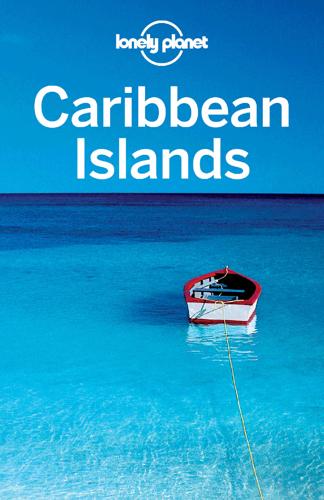
Caribbean Islands
by
Lonely Planet
For beach time try the local favorite Friar’s Bay . From Marigot , make the 25-minute ferry run to Anguilla . Once there, choose between two beaches: popular Shoal Bay East or the quieter, windswept Junk’s Hole . Back on St-Martin/Sint Maarten, head down to Philipsburg , which allows time for some retail therapy. Get a ferry to Saba , and enjoy the view of the volcano that acts as a beacon during the 90-minute trip. Explore the small town of Windwardside , then head out into the bush for a rugged hike up the aptly named Mt Scenery . Rent some diving gear and explore submerged pinnacles that teem with nurse sharks.
…
FIVE DAYS Get a room at the Guanahani in Grand Cul-de-Sac (if you’ve just won the lottery) or at Salines Garden in Anse de Grande Saline and spend three blissful days by the beach. In the evenings try out some of the internationally acclaimed restaurants that pepper the island. On your last two days, undergo some retail therapy in Gustavia, followed by a couple of hours roaming the quiet west coast, particularly around quaint Corossol. TWO WEEKS Snag one of the many private villas scattered around the island and spend your first week at a different beach each day. Then get your adrenaline pumping with a sailing day trip and a scuba dive, plus some hiking in the east, and round out the week swiping your plastic at the boutiques in Gustavia.

Moon Prague, Vienna & Budapest: Palaces & Castles, Art & Music, Coffeehouses & Beer Gardens
by
Jennifer D Walker
,
Auburn Scallon
and
Moon Travel Guides
Published 15 Oct 2024
Almost every Czech restaurant in town offers a special menu of the St. Martin’s meal: roast goose served with red cabbage and dumplings (usually 200-500 CZK depending on the venue). Shopping The retail landscape is not necessarily Prague’s main attraction, but there are a few places worth heading to if you’re looking for retail therapy or a souvenir. SHOPPING DISTRICTS Prague’s one well-known shopping destination is Pařížská ulice (www.parizskastreet.cz). This fittingly translates to “Parisian street,” where the most famous names in luxury fashion line the storefronts. The high-end shopping lane branches off from Old Town Square between St.
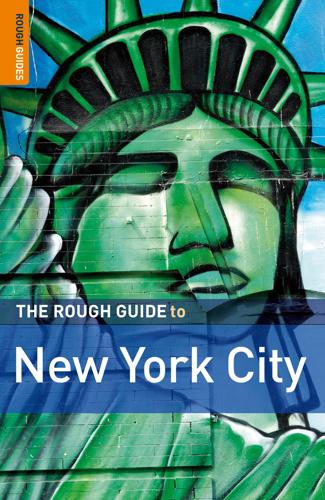
The Rough Guide to New York City
by
Martin Dunford
Published 2 Jan 2009
Baseball Page 403 • It would be a shame not to go to a ball game if you’re here between April and October, especially with two teams as iconic as the Yankees and the Mets. 18 A night on the town Page 340 • Local brews and native celebrities, romantic hideaways and raucous dive bars, there’s always a drink on hand in the city that never sleeps. 17 16 19 Bergdorf Goodman Page 389 • Department store as art form – even the window – shopping is retail therapy. Basics 17 Basics Getting there ................................................................................... 19 Arrival .............................................................................................. 23 Getting around ................................................................................ 26 The media ....................................................................................... 30 Tourist information .......................................................................... 32 Travel essentials.............................................................................. 35 18 B A SICS Getting there From North America From most places in North America, flying is the most convenient way to reach New York.
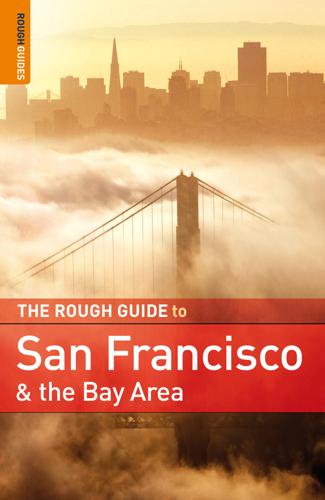
Rough Guide to San Francisco and the Bay Area
by
Nick Edwards
and
Mark Ellwood
Published 2 Jan 2009
Smallish basement store, with a good remainder selection; its fiction section is dotted with offbeat and interesting staff picks. 243 San Francisco’s shopping streets s hopp i ng | Books Below we’ve listed San Francisco’s prime shopping strips, alphabetized according to the neighborhood in which each is situated. It’s not an exhaustive list, as there are many other great places to browse, but it should be useful for any shopaholic planning a day of retail therapy. The Castro Castro Street, between 17th and 19th, and Market Street, between Castro and Church. Gay-oriented boutiques, clubwear, and shoes. Cow Hollow Union Street, between Fillmore and Gough. Sweet, if rather conservative, boutiques (mostly for women), shoe stores, and cute homeware shops. The Haight-Ashbury Haight Street, between Stanyan and Masonic.
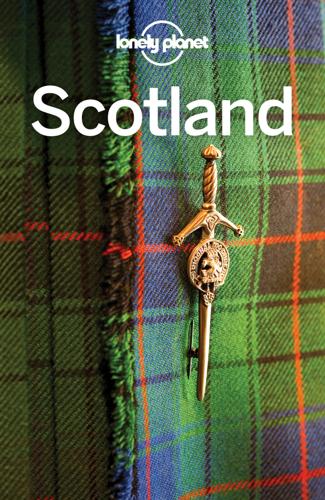
Lonely Planet Scotland
by
Lonely Planet
Glenelg Inn The beer garden here is actually a garden – with sensational views across the water to Skye. Horse Shoe All real ales and polished brass, this is Glasgow’s best traditional pub. Stein Inn A lochside pub in Skye with fine ales, fresh seafood and a view to die for. Shopping Scotland offers countless opportunities for shoppers to indulge in retail therapy, from designer frocks and shoes in city malls to local art, handmade pottery and traditional textiles in Highland and island workshops. Glasgow A shopper’s paradise, with everything from designer boutiques to secondhand records. Edinburgh Boasts Harvey Nicks, malls, cashmere, tartan and quirky little gift shops.

Western USA
by
Lonely Planet
Staples Center SPECTATOR SPORT (www.staplescenter.com; 1111 S Figueroa St, Downtown) All the high-tech trappings fill this flying-saucer-shaped home to the Lakers, Clippers and Sparks basketball teams, and the Kings ice hockey team. Headliners – Britney Spears to Katy Perry – also perform here. Shopping Beverly Hills’s Rodeo Drive (btwn Wilshire & Santa Monica Blvds) may be the world’s most famous shopping street, but LA drips with other options for retail therapy. Fashion-istas, and their paparazzi piranhas, flock to Robertson Boulevard (btwn Beverly Blvd & 3rd St) and Montana Avenue (btwn Lincoln Blvd & 20th St) in Santa Monica. Melrose Avenue (btwn San Vicente Blvd & La Brea Ave) in Hollywood and West Hollywood is still a fave of Gen-Y hipsters. IT’S A WRAP Dress just like a movie star – in their actual clothes!
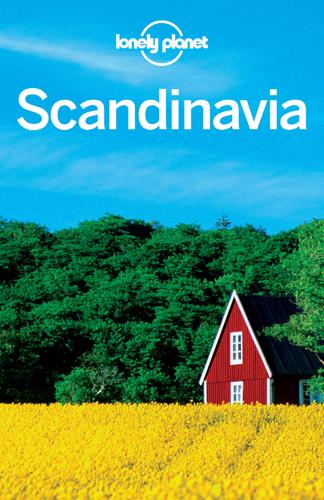
Scandinavia
by
Andy Symington
Published 24 Feb 2012
Good local buys include edgy street wear, designer home decor and clever gadgets, and edible treats such as cloudberry jam, pickled herring and bottles of glögg . Södermalm’s SoFo district (the streets south of Folkungagatan) is your best bet for home-grown fashion, while Östermalm is the place for high-end names like Marc Jacobs and Gucci. For all-in-one retail therapy, scour department store giant Åhléns ( 676 60 00; Klarabergsgatan 50) or its upmarket rival NK ( 762 80 00; Hamngatan 12-18) . Ekovaruhuset FAIR-TRADE ( 22 98 45; www.ekovaruhuset.se; Österlånggatan 28; 11am-6pm Mon-Fri, 11am-4pm Sat & Sun) This enlightened concept store stocks fair-trade, organic products, from cosmetics and chocolates to trendy threads and too-cute baby wear.
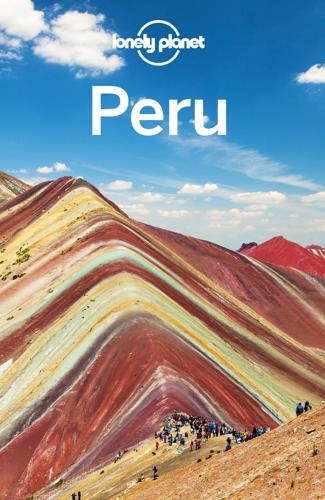
Lonely Planet Peru
by
Lonely Planet
A friendly, bright space complete with an outdoor eating area welcomes you in to peruse shelf after shelf of organic, all-natural products. All your favorite Peruvian superfoods and super treats (think handcrafted chocolate bars made with Peruvian cacao), fresh produce and poultry, as well as natural beauty products make for healthy retail therapy. MorphologyFASHION (map Google map; %01-333-4164; www.morphology.com.pe; Av Mariscal La Mar 1332; h11am-7pm Mon-Fri, to 5pm Sat) This towering shop boasts four floors to explore, each providing something different. Designer pieces and jewelry from national and international fashion names, as well as home decor and gush-worthy baby clothes are on display on the 1st and 2nd levels.
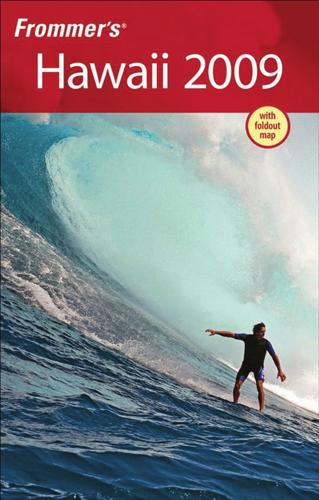
Frommer's Hawaii 2009
by
Jeanette Foster
Published 2 Jan 2008
The fish ponds are a great educational experience for keiki, and the beach has plenty of room for the youngsters to run and play. Next door to the resort are ancient Hawaiian petroglyph fields, where older kids can learn about Hawaii’s past. The Sports & Fitness Club (one of the best on the island) was just renovated, and the Shops at Mauna Lani recently opened with great retail-therapy opportunities and several food options. Mauna Lani Bay Hotel & Bungalows At the Mauna Lani Resort, 68–1400 Mauna Lani Dr., Kohala Coast, HI 96743. & 800/367-2323 or 808/885-6622. Fax 808/885-1484. www.panpacific.com/maunalanibay or www.maunalani.com. 342 units. $445–$935 double; from $985 suite; $6,050–$6,850 bungalow (sleeps up to 4).
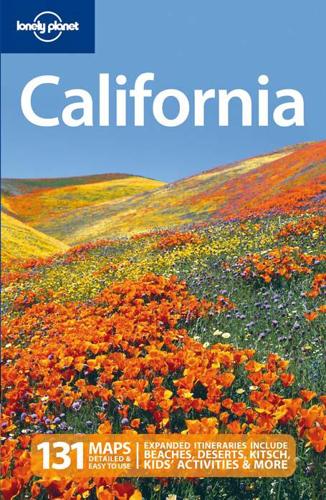
California
by
Sara Benson
Published 15 Oct 2010
* * * The Haight The legendary intersection of Haight and Ashbury Sts was the place to be in the psychedelic ’60s, and certain habits seem to have stuck – the clock overhead always reads 4:20, better known in herbal circles as International Bong Hit Time. But since then, the hedonist Haight has also built a serious rep for leftist politics, skateboarding, drug rehabs, potent coffee and retail therapy for rebels. The Upper Haight west of Divisadero waxes nostalgic for its hippie days with head shops and vintage boutiques, and you can prove the Summer of Love isn’t over yet by serving a meal or donating to job training programs at the historic Haight Ashbury Food Program (Map; 415-566-0366; www.thefoodprogram.org; 1525 Waller St).
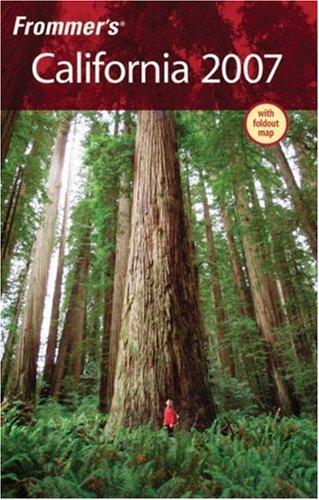
Frommer's California 2007
by
Harry Basch
,
Mark Hiss
,
Erika Lenkert
and
Matthew Richard Poole
Published 6 Dec 2006
H E L E N A 73 miles N of San Francisco This quiet little town, 17 miles north of Napa on Highway 29, is home to lots of beautiful old houses and first-rate restaurants, accommodations, and shops. The former Seventh-day Adventist village manages to maintain a pseudo Old West feel while catering to upscale shoppers with deep pockets. Hence it’s the destination for retail-therapy seekers. 170 C H A P T E R 6 . T H E W I N E C O U N T RY On St. Helena’s Main Street , between Pope and Pine streets, you’ll find trendy fashions at Pearl, 1428 Main St. (& 707/963-3236); Jimmy Choo shoes at Footcandy, 1239 Main St. (& 707/963-2040); chic pet gifts at Fideaux, 1312 Main St. (& 707/9679935); custom-embroidered French linens at Jan de Luz, 1219 Main St. (& 707/9631550); estate jewelry at Patina, 1342 Main St. (& 707/963-5445); and European home accessories, sample holiday table settings, and free gift-wrapping at Vanderbilt and Company, 1429 Main St. (& 707/963-1010).

Germany Travel Guide
by
Lonely Planet
The complex is about 10km south of the city centre and reached by tram 701 in about 30 minutes. GROOVY FLINGERN Once all working-class, Flingern, a neighbourhood near the Hauptbahnhof, is now the centre of Düsseldorf’s boho-chic hipness. The main strip is a 1km stretch of leafy Ackerstrasse, where retail therapy gets a unique twist in indie boutiques stocked with vintage frocks, edgy jewellery, whimsical tees, handmade accessories and gourmet foods. There are cafes by the dozen. Try Café Hüftgold (www.cafehueftgold.de; Ackerstrasse 113; snacks from €3), renowned for its amazing cakes, tortes and more baked goodness.

Germany
by
Andrea Schulte-Peevers
Published 17 Oct 2010
And the construction cranes are still pirouetting: in 2010 Casa Stupenda by Renzo Piano and Sign by Helmut Jahn are sure to make some headlines. * * * HAVE A FLING WITH FLINGERN Altstadt too boisterous? Medienhafen too snooty? Head to Flingern, a charming neighbourhood near the Hauptbahnhof that’s increasingly trading its working-class roughness for boho-chic hipness. The main strip is leafy Ackerstrasse, where retail therapy gets a unique twist in indie boutiques stocked with vintage frocks, edgy jewellery, whimsical tees, handmade accessories and gourmet foods. Stop off for coffee and a snack at retro-style Beethoven ( 2339 8687; Ackerstrasse 106; 10am-1am) or save your appetite for a plate of feistily flavoured wot (stew) at Okra ( 691 1856; Ackerstrasse 119; mains €10-12.50; dinner), an authentic Ethiopian restaurant.
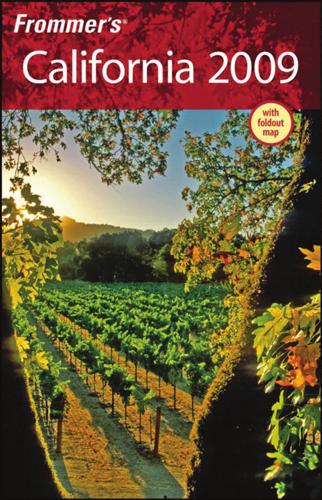
Frommer's California 2009
by
Matthew Poole
,
Harry Basch
,
Mark Hiss
and
Erika Lenkert
Published 2 Jan 2009
Helena 73 miles N of San Francisco This quiet little town, 17 miles north of Napa on Highway 29, is home to many beautiful old houses and first-rate r estaurants, accommodations, and shops. The former S eventh-Day Adventist village manages to maintain a pseudo O ld West feel while catering to upscale shoppers with deep pockets: I t’s the destination for retail-therapy seekers. On St. Helena’s Main Street , between Pope and Pine streets, you’ll find trendy fashions, chic pet gifts, estate jewelry, and European home accessories. Most stores are open 10am to 5pm Monday through Sunday. Shopaholics should also take the sharp turn off H ighway 29, 2 miles nor th of downtown St.

Southeast Asia on a Shoestring Travel Guide
by
Lonely Planet
Published 30 May 2012
Take in the architectural glory and wander along the Singapore River through the Quays towards Marina Bay. The museums here are perfect for dodging the searing humidity while taking in some culture. Go for dinner at Gluttons Bay before hitting Clark Quay to drink and party. Day Two Start the morning with a stroll in the Botanic Gardens before indulging in retail therapy along Orchard Rd. If malls aren’t your thing, get to Little India for a slice of grubby, authentic Singapore. Finish the night with food, drinks and sheesha (waterpipe) in Kampong Glam. Day Three Spend the day either checking out the zoo and night safari or out on an island. Pick Sentosa for beaches and kitschy theme parks or Pulau Ubin for a rustic getaway.

Italy
by
Damien Simonis
Published 31 Jul 2010
Aurora Beach Club (Map; 041 526 80 13; www.aurora.st; Piazzale Bucintoro Lungomare D’Annunzio, Lido 20x; 9am-2am May-Sep) Days flow into nights at this beach venue with four-poster sunbeds, a free library, sports and chill-out zones for daytime use, plus live music sets, cocktail bars, open-air cinema and DJ sets to keep you dancing until you face-plant in the sand. Return to beginning of chapter SHOPPING Retail therapy approaches delirium in Venice. A single visit to Murano can mysteriously max out carry-on limits with fragile glassware, and a visit to the Rialto Market and neighbouring gourmet shops like Drogheria Mascari induces foodies to stash bottles of wine and jars of mountain honey in their checked baggage.

Great Britain
by
David Else
and
Fionn Davenport
Published 2 Jan 2007
The factory is now Salt’s Mill ( 01274-531163; www.saltsmill.org.uk; admission free; 10am-5.30pm Mon-Fri, 10am-6pm Sat & Sun), a splendidly bright and airy building where the main draw is a permanent exhibition of art by local boy David Hockney (b 1937). In a fitting metaphor for the shift in the British economy from making things to selling them, this former engine of industry is now a shrine to retail therapy, housing shops selling books, crafts and outdoor equipment, and a cafe. Saltaire’s tourist office ( 01274-774993; www.visitsaltaire.com; 2 Victoria Rd; 10am-5pm) has maps of the village and runs hour-long guided walks (adult/child £3.50/2.50) through the town throughout the year. Saltaire is 9 miles west of Leeds centre, and 3 miles north of Bradford centre.

USA Travel Guide
by
Lonely, Planet
Staples Center SPECTATOR SPORT Offline map Google map ( www.staplescenter.com; 1111 S Figueroa St, Downtown) All the high-tech trappings fill this flying-saucer-shaped home to the Lakers, Clippers and Sparks basketball teams, and the Kings ice hockey team. Headliners – Britney Spears to Katy Perry – also perform here. Shopping Beverly Hills’s Rodeo Drive (btwn Wilshire & Santa Monica Blvds) may be the world’s most famous shopping street, but LA drips with other options for retail therapy. Fashion-istas, and their paparazzi piranhas, flock to Robertson Boulevard (btwn Beverly Blvd & 3rd St) and Montana Avenue (btwn Lincoln Blvd & 20th St) in Santa Monica. Melrose Avenue (btwn San Vicente Blvd & La Brea Ave) in Hollywood and West Hollywood is still a fave of Gen-Y hipsters. IT’S A WRAP Dress just like a movie star – in their actual clothes!